
- Best Hikes In The World
- Appalachian Trail
- European Hikes
- Nepal Hikes
- Patagonia Hikes
- See All Hikes
- Mount Kenya
- Mount Kilimanjaro
- Mount Toubkal
- See All Mountains
- South Africa
- New Zealand
- Switzerland
- United Kingdom
- Packing Lists

The Snowman Trek – An Unforgettable Challenge
Asia , Bhutan

Bhutan's Snowman Trek is one of the hardest Himalayan treks and is considered to be one of the most difficult treks in the world ! More people are said to have summitted Everest than to have completed the Snowman Trek. On this page you will find a comprehensive and impartial guide to the Snowman Trek in Bhutan, including when to trek, difficulty and the typical itinerary for the trek.

Snowman Trek Bhutan
For more than a decade now, publications have emphasized the pursuit of happiness over material possessions. There should be no doubt then that when hiking in Bhutan , you’ll be inundated with pure joy. This joy is probably stemming from the fact that you have completed one of the toughest treks in the world.
The Snowman Trek is challenging for a number reasons.
First of all, the window in which you can complete the trek is very small. Bhutan has an incredibly long rainy season; therefore, rain on the Snowman hike is very likely. It’s advised that the first 3 weeks of October is one of the best times to start, but even then, you are still competing with Mother Nature when it comes to altitude – the highest camp coming in at 5,050m – a mere 300m off the Everest Base Camp and 800m off the summit of Mount Kilimanjaro .
These facts will either put you off completely or drive you to dig out the inner adventure junkie and experience crossing ten high passes over 4500m in altitude over a period of 3 to 4 weeks (depending on which route you choose).
It is believed that since records began in 1982, only approximately 500 people have finished the Snowman hike.
Mention that you’re going on the Snowman Trek to any local bartender and you might be lucky enough to get a round of drinks on the house to make your mind hazy, briefly forgetting that you’re embarking on an epic adventure involving lakes, monasteries and white capped peaks in the morning.
The Takin (the national creature of Bhutan) might give you the odd look as if he knows a little secret, but it’s been recorded that the amount of international visitors to Bhutan at any one time stands at 1500 – so if you are seeking silence and anonymity of last night’s drinking habits – The Snowman Trek offers that and more.
Bhutan Regional Map
The Snowman Trek cuts through a variety of regions in the north-west of Bhutan. These include, Paro, Thimphu, Gasa, Punakha and Wangdue. The map below illustrates Bhutan’s main regions.

Snowman Trek Itinerary
The Snowman hike is an extension of the Laya Gasa Trek but is higher in altitude.
As mentioned, the weather is not your best friend, so sometimes you will be walking in ran or making camp on snow.
There are variations on the trek, but the itinerary below is the most common.
Bear in mind that past a certain point there are no hospitals, so caution is of the utmost importance as the costs involving a helicopter will be double the price of your adventure.
Below is a detailed outline of the 27-day Snowman Trek itinerary. Be sure to take regular breaks and sips of water as you read along.

Day 1: Paro, Taktsang Monastery
- Altitude: 3,120 feet
Your first port of call is the Bhutan town of Paro . It’s advised you spend some time in the town getting used to the high altitude that you will experience through most of the trek.
Bhutanese culture is on full show and since it’s a country that has a measure of happiness, you are bound to have a smile on your face. That smile will grow even bigger when you set your sights on the Tiger’s Nest (Taktsang Monastery). The monastery tops every tourist’s list of sights to see in Bhutan, its roots steeped deep in the history of Buddhism.
You may want to read : how to get to Bhutan and our guide to walking to the Tiger's Next Monastery .
Day 2: Paro – Shana
- Altitude: 9,251 feet
- Distance: 8.6 miles
- Time: 5-6 hours
After a short drive west from Paro, passing Drukgyel Dzong, an old fort that was built to commemorate a victory over an invasion from Tibet and is still mostly intact as far as ruins go, most treks start from an Army Camp, just on the outskirts of the Paro Chhu Valley. Visas are checked and then it’s off down the valley over suspension bridges and muddy trails towards Shana.
Day 3: Shana to Thangkthanka
- Altitude: 11,843 feet
- Distance: 13 miles
- Time: 7-8 hours
Most of the day is taken up by walking through a heavily dense forest, home to the occasional isolated farmhouse. This is one of the many places where a variation in the trek can occur with Tremo La just north. Most camps are set up on a meadow, so just be sure you’ve arranged with some animals where you are sleeping as they might view your tent as a new local delicacy.
Day 4: Thangthangka – Jangothang
- Altitude: 13,500 feet
- Distance: 9.3 miles
If you haven’t previously (highly likely because of cloud coverage); you should unzip your tent cover and be blessed with a view of the “bride of Kangchenjunga” - Mt. Jhomolhari (or Chomolhari). More army posts and juniper forests are the order for the day. If you are lucky enough, you might come across a farmhouse near Tengethang that will allow you to try the local thomba (a local beer equivalent).

Day 5: Rest Day In Jangothang
After 4 days, the first rest day of the trek, and more than anything it is used for acclimatization purposes. There are a lot of one day hiking options but don’t be confused – climbing Jhomolhari is prohibited from the Bhutan side.
There is 2-hour hike to a lake above camp where you can capture amazing photos of Jitchu Drake for that Instagram feed.
At this stage, you would have ascended nearly 6000 feet, so if the thought of hiking is the last thing on your mind, you have some spectacular peaks to stare at for 24 hours.
Day 6: Jangothang – Lingshi
- Altitude: 13,123 feet
- Distance: 10.5 miles
- Time: 6-7 hours
When you wake up – prepare yourself for one of the longest days of trekking. The day is mostly spent crossing over the Nyile La Pass which stands at 15,419 feet.
You’ve got even more chances of taking wonderous shots of Jhomolari, Jitchu Drake and Tsheri Kang (a mountain situated on the Chinese-Bhutanese border).
You’ve even got a chance to cross the spot where Micahel Palin met with an old Bhutanese composer on his Himalaya series and the chance to see herds of blue sheep.
Day 7: Lingshi – Chebisa (via Gang Yul)
- Altitude: 12,401 feet
- Distance: 7.5 miles
- Time: 4-5 hours
Going from one of the hardest days, there is a complete 180-degree change to one of the easiest days of the trek. Lingshi Dzong is along the way; also known as Yugyel Dzong, it was another border post controlling the travel between Tibet and Bhutan. A guided tour by the monks in the monastery is on the cards, depending on whether your tour operator can arrange it. Although not required, it’s advised to leave a small donation.
From there, a hillside path meanders along to the “village at the pass” – Gang Yul. This village lies in the shadow of Jitchu Drake and is home to about 150 people who are very welcoming of visitors, who knows, you might even be invited inside for some chang and rice. An hour outside the village is Chebisa where a camp should be made.
Day 8: Chebisa – Shomuthang
- Altitude: 13,100 feet
- Time: 6 hours
Starting out – a steep climb through pastures till the Gombu La Pass, which stands at 14,300 feet, and then down forests of dwarf rhododendron which give way to bushes of yellow and crimson berberis. A photographer’s paradise. More folks of blue sheep should pattern the valley. It’s almost as if you wanted time to stop as these forms some of the most beautiful imagery the trek has to offer.
Day 9: Shomuthang – Robluthang
- Altitude: 13,451 feet
- Distance: 13.6 miles
- Time: 7-8 hours
An early start to Jhari La Pass provides views of Kang Che Da and your objective for the next day that is the Shinge La pass. It’s here that those fears might arise again as the pass forms the lowest point of the horizon. Those fears can be placated by walk through the pine forest in Tsharithang, the scenery having inspired Victor Saunders to say that this was his best walk. Depending on the season a knee deep river is the last obstacle before your camp on Robluthang.
Day 10: Robluthang – Limithang
- Altitude: 13,254 feet
- Distance: 8.5 miles
Day Ten is another hard day of the trek. But this time the reward is you standing on top on the world. A climb up Sinche La Pass (15,977 feet) boasts views of Gangchhenta – “Great Tiger Mountain”. It’s from this vantage point that all the northern borders are visible. Save enough energy from looking at all these views to place a stone on one of the four cairns that signal the end of the climb. A gradual descend into Limithang where camp is set up.
Day 11: Limithang – Laya
- Altitude: 12,729 feet
- Distance: 6.2 miles
If you’re into bird spotting, then there is no better day for it. Characterized by a lot of up and downs, the walk descends into the village of Laya where the villagers are famous for yak hair clothing and bamboo hats.
As we are close to the border, the features of these villagers are more in line with Tibetan or Mongolian than Bhutanese. Even so, their hospitality is just as welcoming. Depending on your time of trek, most fields surrounding the village are harvested and provide a flat surface on which to camp.

Day 12: Rest Day in Laya
A rest day in the village and it’ll be your first opportunity since Paro to stock up on supplies and check in with the local hospital. If you fancy on recreating some Robin Hood archery feats, you could challenge some of the locals.
Day 13: Laya – Rodophu
- Distance: 10.5 miles
The day starts out with an easy descent to Tashi Makhang army camp where another checkpoint awaits you. During Monsoon season the region receives a large portion of rainfall resulting in a very lush part of the trek. Look out for the turn off to Rodpophu as it is quite well hidden. This probably to hide the steep ascent through mud encrusted trails.
Day 14: Roduphu – Narethang
- Altitude: 16,200 feet
- Distance: 6.2 miles
A three hour climb to Tsemo La Pass is the main obstacle of your second week of the trek. Whilst ascending, views of Gangla Karchung as well as Jhomolhari and Gangla Karchung will surround you and your deep breathing body as the first high camp beckons on top of Narethang, situated between the Tsome La and Karakachu La at 16,200 feet.
Day 15: Narethang – Tarina
- Altitude: 12,795 feet
- Distance: 15 miles
- Time: 8-9 hours
Another 2-3-hour climb starts the day as you are headed towards the Karakachu La Pass that, once over, provides the greatest mountain panorama in Bhutan. All mountains rise above 23,000 feet including the Tshendayang Group, Teri Gang and Masakang. Considering that not many people even finish the trek, this view has only touched a handful of eyes.
After your eyes have had your full of mountains, descend down into the Tarina Valley. This is quite long, sometimes taking the better part of 4 hours before you reach the valley floor. Camp is alongside a river at place known as Tarina. Fill those lungs with oxygen richness as the camp is several hundred feet lower than last night.
Day 16: Tarina – Woche
- Altitude: 12,656 feet
- Time: 5-6 hours
A respite from long up and down climbing, the trek today follows the river down through absolute peace and quiet, the odd bird overhead the only reason silence could be broken. A climb of 300m is the only arduous part of the day as you climb to Woche Village. That silence is broken by a healthy reception of villagers who are part of a settlement that consists of a mere 3 or 4 huts. You are now starting to enter the Lunana region of the trek.
Day 17: Woche – Lhedi
- Altitude: 11,942 feet
- Distance: 9.3 miles
Keche La Pass at 15,305 feet forms the main thrust of the day. Starting through a forest and then out onto open countryside, with views of even more unscalable
Mountains (Kangphu Gang and Jeje Kangphu) to the north, the 3 hours from Woche to Keche La is breathtaking. South Africans and any visitors that have been to Cape Town will get to see the other famous “Table Mountain” - Zongophu Gang. Camp is at Lhedi.
Day 18: Lehdi – Thanza
- Altitude: 13,320 feet
Most of the day is spent following the Pho Chu River along the riverbed. This part of the trail might require porters depending on your luggage load, so keep that in mind. Along the way, you’ll pass another Dzong, (Chozo Dzong) which have been scarce over the past two weeks. After three of four hours past Chozo Dzong, you’ll reach the villages of Dyotta and Thanza. Interesting to note is that the language spoken here is different to main language of Bhutan, Dzongkha.

Day 19: Rest Day in Thanza
If you are a linguist, then maybe you’ll have time to decipher the language differences between the villagers of Thanza and the rest of Bhutan. If not – walk up to the lakes surrounding Thanza will provide stunning views of Table Mountain.
— It’s here that a lot of variations in the trail occur —
Day 20: Thanza – Danji
- Altitude: 15,000 feet
- Distance: 4.9 miles
- Time: 4-5 hours
A part of the trek on which you can reflect on how much climbing you’ve done, as the views offered enroute to Danji detail a lot of your journey already. This is used as another acclimatization point on your trek. Two different options for continuing the Snowman Trek are around the area; one heading east to Tsorim, and the other heading south to Sephu.

Day 21: Rest Day
This can either be another rest day or you have the Option to Ascend Gorphu La – 17,159 feet (A view to the world’s highest unclimbed peak).
Day 22: Danji to Tsochena
- Altitude: 16,570 feet
- Distance: 7.4 miles
This marks the exit from the Lunana region as you climb through three false summits up till Jaze La (16,570 ft). From there it’s a short trek to down to Tsochena Lake.
Day 23: Tsochena to Jichu Dramo
- Altitude: 16,300 feet
- Distance: 11 miles
Following the shoreline of the Tsochena Lake, you’ve got the opportunity for another grand 360 viewpoint. Crossing the Loju La pass you descend into Jichu Dramo camp.
Day 24: Jichu Dramo to Chukarpo
- Altitude: 16,335 feet
Straight out of leaving camp you’ve got a tough climb to Rinchen Zoe La (17,454 ft); the highest pass of the route. Which brings with it amazing mountain scenery including Rinchen Zoe Peak (18,536 ft). Once over the pass, you’re onto a valley and along to Tampe Chu. A few more hours descend and you’ve reached Chukarpo.
Day 25: Chukarpo to Tampe Tso
- Altitude: 14,107 feet
The descent continues as you make your way down, following the Tampe Chu river down to Gala Pang Chu then up to Thampe Tso, sitting at 13,860 ft) a beautiful blue lake.
Day 26: Thampe Tso to Maurothang
- Altitude: 15,100 feet
- Distance: 8 miles
From Thampe Tso, you are moments away from the final pass, Thampe La (15,091 ft). Blue sheep roam freely again as you descend down to the sacred lake Om Thso. As tempting as it might be, do not enter into a competition for stone skipping as it is forbidden to throw anything into the lake. Waterfalls shower drops of water onto you as enter Maurothang on the banks of Nikka Chu.
Day 27: Maurothang to Sephu
- Altitude: 11,154 feet
- Distance: 10 miles
After a culmination of nearly a month, the trek ends as you make your descent 10,000 ft to the village of Sephu. The Nikka Chu Bridge marks the end of most treks and the validation to say you have completed one of the most gorgeous, difficult treks on Planet Earth. Transfers from Sephu back to Paro are easy enough to organize, you could even ask your driver to make a stop to the Dzong in Trongsa.

Snowman Trek FAQ
How much does the snowman trek cost.
On average, Snowman trekking tours range from $5,500 to $9,000. For most of them, this does include transportation in Bhutan, meals and hotels.
When is the best time to complete the Snowman Trek?
The best time of the year to complete the Snowman Trek is from mid-June to mid-October, with September being the most optimal. As with most treks in Bhutan, you can be guaranteed that there will be rain.
You may also like : Best time to visit Bhutan

Are permits required for the Snowman Trek?
You don't need a permit for the Snowman Trek, but you do need a visa for entering Bhutan in order to complete the trek.
At one point, Bhutan used to regulate the number of tourists, but nowadays, it’s an open-door policy provided you have a visa. Visas are processed through an online system by your licensed Bhutanese tour operator or through a foreign travel agent.
Visas are processed by the Tourism Council of Bhutan and once a full payment of your holiday plus a USD $40 visa fee has been received, visas are issued.
There is also a Government Royalty fee plus taxes. Most tour operators will arrange payment of this fee for you.
How difficult is the Snowman Trek?
To complete the Snowman Trek, you will need to be in peak physical condition as reaching the summit can be quite challenging.
Make sure to check with your doctor of the hazards of high altitude climbing and its effects on your body. With altitudes reaching above 17,000 ft, it’s advised to find an altitude centre near you.
Other points to help you prepare for the Snowman Trek:
- A good diet
- Weekends hiking in an altitude that is as high as possible
- Long endurance exercises in the gym
- Get used to carrying any gear that you may have bought for the trek
Is altitude sickness a risk on the Snowman Trek?
Yes. The Snowman Ascends to some very high altitudes and crosses over 11 mountain passes! Therefore, it is essential to have a thorough understanding of the altitude risks involved with this trek.
Please read our detailed section on altitude sickness and acclimatization .

What gear do I need for the Snowman Trek?
As with any trek – pack light and efficiently for the Snowman Trek. Layers of clothing are essential and it’s best to source quick drying materials wherever possible.
Bhutan is highly conservative and it is advised to cover as much skin as possible – legs and shoulders should be covered. Here are some suggested items for your packing list:
- High Quality Socks (4-6 pairs as the mud and water will certainly have you changing them often)
- Quick Dry Towel
- Sufficiently Shaded Hat
- Long and Short Sleeved Shirts
- Long trekking trousers
- Waterproof Jacket
- Warm winter jacket (down or synthetic)
- Light Shoes or Sandals for evening use
Trekking Gear
- Daypack (35-45L)
- Duffle bag (90L) for your main gear
- Hiking Boots
- Four season sleeping bag
- Water Bottle or Hydration bladder
- Trekking Poles
Miscellaneous Items:
- Medical Kit
To help you plan and prepare for your trek, we have written a detailed packing list for multi day hikes .
Do you recommend any guides or guidebooks for the Snowman Trek?
Absolutely. The Snowman Trek requires vast knowledge of the route before setting out. It is highly advised that you join a trekking company who employ the use of guides who know the region. It is in this author’s experience that no one attempts the Snowman Trek by herself or himself.
We recommend Bhutan Lonely Planet as our preferred guidebook.

Are there other trekking routes through Bhutan?
Definitely. The Snowman Trek isn't the only trekking route that offers unforgettable sights and first-hand experience of Bhutanese culture.
We highly recommend the Chomolhari Trek , the Druk Path Trek and the Tiger's Nest Trek which leads to Paro Taktsang, the world-famous Buddhist monastery.
Continue browsing...
See more information on Bhutan . Or check out these other Bhutan Hiking articles:
- Epic Festivals Bhutan
- 20 Bhutan Facts and Trivia

About the author
Mark Whitman
Mark has trekked extensively in Asia, Europe, South America and Africa. He founded Mountain IQ in 2014 with the sole aim to be the best online information portal to some of the most popular mountain destinations around the world. When not writing for Mountain IQ, Mark is out exploring the outdoors with his wife!
Leave a Reply
Your email address will not be published. Required fields are marked
Looks fab! You may want to convert the “metres” shown, as I believe you have the feet displayed as metres e.g. Mt Everest looks small compared to this 🙂
Thanks Raymond, that was a typo.
Never knew Bhutan was such a spectacularly beautiful country. You just gave me my 50th birthday goal :))
Thank you for such a great detailed and inspiring review, Mark! Could I ask whether there is a local trek agency you would recommend (or avoid altogether!), and also, whether the agency provides your food and camping gear? We have trekked in Nepal as autonomous travellers but it looks like you cannot just rely on finding teahouses and warm meals along the road as you would on the other side of the border? Thank you for your help 🙂
Hi Helene, it’s been many years since I was in Bhutan so unfortunately I’m not connected with any local guides. You may be able to find a local guide on Skyhook: https://www.skyhookadventure.com/
We work with local guides to offer great value adventures at unbeatable prices
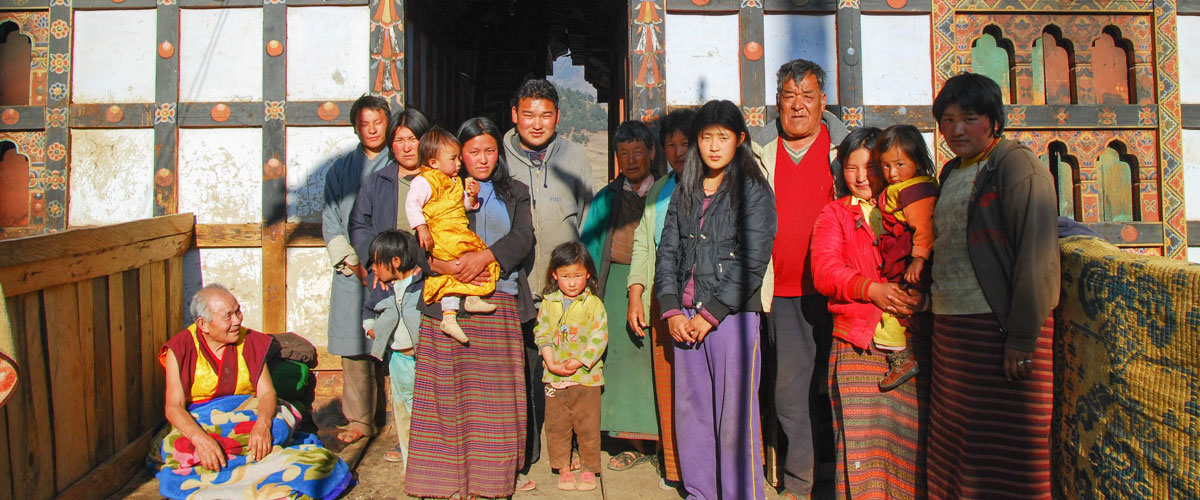
The Great Bhutan Lunana Snowman Camping Trek (Full Route) – Bhutan Himalayan Trekking Day 1 – Sunday, 29 September 2024 – Arrive Paro | Transfer Hotel Day 2 – Paro | Hike Taktsang Monastery (Tiger’s Nest) Day 3 – Drive Drukgyel Dzong & Sharna Zampa. Trek Shing Karap Day 4 – Trek Soi Thangthangkha Day 5 – Trek Jangothang (Jhomolhari Base Camp) Day 6 – Jangothang (Jhomolhari Base Camp) Day 7 – Trek Lingshi | Cross Nyele La 4890m Day 8 – Trek Chebisa Day 9 – Trek Shomuthang | Cross Gombu La 4400m Day 10 – Trek Robluthang | Cross Jhare La 4780m Day 11 – Trek Limithang | Cross Shinge La 5000m Day 12 – Trek Laya Day 13 – Laya Day 14 – Trek Rhoduphu Day 15 – Trek Narethang | Cross Tsema La 4900m Day 16 – Trek Tarina Day 17 – Trek Woche Day 18 – Trek Lhedim | Cross Keshe La 4435m Day 19 – Trek Thanza Day 20 – Thanza Day 21 – Trek Tshorim Day 22 – Trek Gangkhar Puensum Base Camp | Cross Gophu La 5230m Day 23 – Trek Geshe Woma Day 24 – Extra Day Day 25 – Trek Warathang | Cross Phorang La 4650m & Saka La 4820m Day 26 – Trek Duer Tsachu | Cross Nephu La 4560m Day 27 – Duer Tsachu | Relax at Hot Springs! Day 28 – Trek Tshochenchen Day 29 – Trek Duer. Drive Jakar | Bumthang Day 30 – Jakar | Bumthang Sightseeing Day 31 – Drive Punakha | Optional Rafting Mo Chu (River) Day 32 – Drive Thimphu | Thimphu Sightseeing Day 33 – Drive Paro | Paro Sightseeing Day 34 – Friday, 1 November 2024 – Trip Ends | Transfer Paro Airport
Kim Bannister Photo Gallery | Trip & Trek Photos Kim Bannister Photography
Bhutan Journeys Photos Bhutan Photos
Bhutan Snowman Photos Bhutan Lunana Snowman Trek
Kamzang Journeys Products Duffel bags, t-shirts, camp towels, buffs, handcrafted leather passport wallets, totes + bags, Himalayan textile pillow covers + more available in Kathmandu! Kamzang Journeys Products
Kamzang Design Etsy Shop (On-Line) Many of these handcrafted products designed by Kim and local craftspeople are available in Kathmandu, including much of the tribal silver collection … Kamzang Design Etsy Shop
Client Highlights & Reviews Travelers’ Comments
Travel Advice + Purchase travel insurance with helicopter evacuation! + Purchase trip cancellation + travel insurance
The Great Bhutan Lunana Snowman Camping Trek (Gasa Route) – Bhutan Himalayan Trekking Day 1 – Sunday, 29 September 2024 – Arrive Paro | Transfer Hotel Day 2 – Paro | Hike Taktsang Monastery (Tiger’s Nest) Day 3 – Drive Gasa Day 4 – Trek Laya Day 5 – Laya | Acclimatization & Exploration Day Day 6 – Trek Rhoduphu Day 7 – Trek Narethang | Cross Tsomo La 4900m Day 8 – Trek Tarina | Gangla Karchung La 5120m Day 9 – Trek Woche Day 10 – Trek Lhedi | Cross Keche La 4480m Day 11 – Trek Thanza Day 12 – Thanza Day 13 – Trek Tshorim Day 14 – Trek Gangkhar Puensum Base Camp | Cross Gophu La 5230m Day 15 – Trek Geshe Woma Day 16 – Extra Day Day 17 – Trek Warathang | Cross Phorang La 4650m & Saka La 4820m Day 18 – Trek Duer Tsachu | Cross Nephu La 4560m Day 19 – Duer Tsachu | Relax at Hot Springs! Day 20 – Trek Tshochenchen Day 21 – Trek Duer. Drive Jakar | Bumthang Day 22 – Jakar | Bumthang Sightseeing Day 23 – Drive Punakha | Optional Rafting Mo Chu (River) Day 24 – Drive Thimphu | Thimphu Sightseeing Day 25 – Drive Paro | Paro Sightseeing Day 26 – Thursday, 24 October 2024 – Trip Ends | Transfer Paro Airport
Travel Advice + Purchase travel insurance with helicopter evacuation! + Purchase trip cancellation & travel insurance
The Great Lunana Snowman Trek – Bhutan Himalaya Trekking Day 1 – Arrive Paro 2390m | Transfer Hotel Fly to Paro from the departure city of your choice (see Druk Air schedule: our Bhutan can book flights for you). The flight into Paro from Kathmandu (and elsewhere) must be one of the most spectacular on the planet. The panorama includes Everest, Kanchenjunga, Shishapangma, Gauri Shankar, Cho Oyu, Nuptse, Lhotse, Chamlang, Jannu, Chomoyummo, Pauhunri, Shudu Tsenpa, Jhomolhari and Jichu Drake. You’ll have an exciting descent into the Paro valley as the captain maneuvers the jet down through the narrow, steep-sided valleys, seeming to barely miss the forested walls on either side. The landings by experienced pilots are always smooth, and clear, blue skies with temperatures in the mid-60s are worth the anxiety of the landing.
You’ll be pickup from Paro Airport by a representative from our Bhutan agency and transferred to our hotel in Paro, the lovely Tenzinling Resort just outside of Paro town. The rooms here are beautiful, large with high roofs and large windows overlooking the houses of the Paro suburbs and the massive Paro Dzong in the distance. The international flights usually arrive by mid-morning, so after your first traditional Bhutanese lunch you’ll have the afternoon to explore.
Bhutanese dishes are delicious if you like meat and chilis. Their national dish is ema dates, whole red or green chilis cooked with butter and cheese and served over rice. As a tourist you’re fed far too many dishes, and you will hardly make a dent in the ema datsi, chicken, potatoes and cheese, cauliflower and cheese, Chinese vegetables and Bhutanese vegetables!
After lunch we’ll head into Paro for some sightseeing, with time to visit some of the shops that sell everything from beetle nut to exquisite, hand-woven textiles. Time permitting we will explore the traditional Bhutanese architecture and visit Rinpung Dzong, or Paro Dzong, translated as ‘Fortress on a Heap of Jewels’. Paro Dzong was built in 1644 by Zhabdrung Ngawang Namgyal on the foundation of one of Guru Rimpoche’s monasteries and was used to defend the Paro valley from invasions by Tibet. Although the dzong survived the 1897 earthquake, it was severely damaged by a fire in 1907. Like most dzongs in Bhutan, it is now the assembly hall as well as housing the monastic body, district government offices, and courts. We might also have time to visit the National Museum.
In the evening we may have the chance to watch the locals playing archery Bhutan’s national game and a bit of an obsession in the country! Back at the Tenzinling Resort dinner is almost always at the hotel, showers are hot, and beers are always stocked! Welcome to Bhutan! (B, L, D)
Day 2 – Paro | Hike Taktsang Monastery (Tiger’s Nest) 3120m Today is an acclimatization day as well as a chance to hike up through beautiful pine forests to Bhutan’s most iconic landmark, Taktsang Gompa, clinging to a huge granite cliff above Paro valley. It is believed that Padmasambhava (Guru Rimpoche) came to Bhutan in the 7th century on a flying tigress and meditated in a cave for three months. The demons were subdued who were trying to stop the spread of Buddhism and converted the Paro valley into Buddhism. During the end of the 17th century a monastery was built on the spot where the saint meditated and it is a pilgrimage site for every Bhutanese to visit at least once in their life time.
The hike to Taktsang Monastery, including time at the monastery and lunch, takes a good five hours. We’re at altitude, so hike slowly, watch the sometimes precipitous trail and stay well hydrated. Once back at the van we can either drive back into Paro or spend the afternoon back at our lovely Tenzinling Resort, finishing our packing for the trek.
Day 3 – Drive Drukgyel Dzong + Sharna Zampa 2850m. Trek Shing Karap 3090m We have a 20-minute drive along the Paro valley to Drukgyel Dzong (2580m), where the road ends and our epic Bhutan Lunana Snowman trek begins! Drukyel Dzong was built in 1647 to protect the Paro valley from invading Tibetans; unfortunately it was destroyed by fire in 1951.
We start the trek along a rough dirt road, climbing gradually, or we may be able to drive the first section to Mitchi Zampa by 4WD jeep. The trail follows the Paro Chhu, passing beautiful meadows, cow paddocks and traditional stone and wood Bhutanese farm houses with fields of rice, wheat, barley, mustard, potato and radishes. After about four hours of easy trekking we reach the army post at Gunitsawa where our trek permits will be checked. Our campsite is on the opposite side of the river, not far from Gunitsawa. (4-5 hrs, 17 km, 360m ascent, 80m descent)
Day 4 – Trek Soi Thangthangkha 3610m We trek further north along the border of Tibet, heading uphill through the river valley until we enter the Jigme Dorji National Park, a park of 4350 square meters and the largest protected area in the country, extending past Laya into Lunana to the east. The forests in the park are predominantly oak, maple, birch, larch pine and alder, with rhododendron taking over as the parkland reaches higher altitudes.
The valley finally narrows gradually to a mere path which descends to a meadow camp. From here, if weather permits, we will have the first wonderful views of Jhomolhari, or Chomolhari (7314m), one of Bhutan’s most well known and beautiful peaks. (7-8 hrs, 22 km, 770m ascent, 10m descent)
Day 5 – Trek Jangothang (Jhomolhari Base Camp) 4080m Another chance for views of majestic Jhomolhari this morning! We continue to trek up the Paro Chhu valley which widens into alpine meadow and scanty growths of forest; Jichu Drake (6794m) dominates the right side of the skyline. Crossing an army outpost, we enjoy increasingly spectacular views of high mountain ridges and snow-capped peaks, and yaks, yak-hair tents and seasonal settlements become a regular feature of the landscape. Passing the villages of Soe, Takethang and Dangochang, we soon reach the nomadic pasturelands of Jangothang, one of the most beautiful campsites of the Himalayas. We’ve reached the high plateaus above treeline, more Tibetan in character, and are trekking through scrub juniper and dwarf rhododendron, both used for incense. We again have a spectacular view of Mount Jhomolhari from camp. (5-6 hrs, 19 km, 480m ascent)
Day 6 – Jangothang (Jhomolhari Base Camp) An acclimatization day in beautiful Jangothang, with plenty of possibilities for day hikes with great views over lakes and snow-capped Jhomolhari and Jichu Drake, as well as some blue sheep spotting in the rocky outcrops. There hasn’t been much mountaineering activity on these two peaks although Doug Scott reached the summit of Jichu Drake in 1988.
A side trip up the small valley heading towards Jhomolhari leads to a great viewpoint down onto the Jhomolhari glacier. Another hike heads up to Sopu Lake, near the Nyele La.
Day 7 – Trek Lingshi 4010m | Cross Nyele La 4890m Just past our campsite the trail climbs rapidly for half an hour and then becomes a gradual ascent over rolling hillsides with low brush to the Nyele La pass (4870m). We may see herds of blue sheep grazing on the slopes of the mountains. From the pass we’ll be treated to spectacular views of Jhomolhari, Jichu Drake and Tsherimgang, all of them rising above 7000 meters.
We have a steep descent through rhododendron to some yak-wool herding tents, where the herders take shelter while on the move to their pastures with their yaks. As we descend into the Lingshi basin we have a wonderful view of Lingshi Dzong, built to guard this valley from raids from Tibet. Tserimgang and its glaciers rising up at the north end of the valley. Lingshi is home to 500-year old Lingshi Dzong, with over a dozen resident monks, a lovely, interesting village to explore. Our campsite is next to a stone hut just before Lingshi Dzong. (6-7 hrs, 18 km, 840m ascent, 870m descent)
Day 8 – Trek Chebisa 3880m Today is our shortest walking day, so we’ll relax and enjoy the trekking. Shortly after starting we reach a chorten below Lingshi Dzong. Here, we have the choice of staying on the main trail or taking a diversion up to the Lingshi Dzong (4220m), which sits right at the top of a ridge. Besides a very special atmosphere of mystic silence, Lingshi Dzong provides a great view over the valley. After Lingshi Dzong you will be passing the villages of Lingshi and Goyul. In Goyul, the stone houses are clustered together to a small compact village that is unusual in Bhutan where village houses are normally scattered. On reaching the campsite at Chebisa, with a beautiful waterfall behind the village, we’ll have plenty of time to visit the village. (5-6 hrs, 10 km, 280m ascent, 410m descent)
Day 9 – Trek Shomuthang 4220m | Cross Gombu La 4400m A lovely trek through wide pasturelands towards Gobu La (pass). On the way, we’ll pass yak herders and their yak-hair tents once again There is also a good chance of spotting large herds of blue sheep above the trail. After crossing the Gobu La (4410m) we descend to the valley, climbing again for a bit and then descending to Shakshepasa (3980m) where a helipad has been established. Climbing from here we finally reach the campsite at Shomuthang, just above a stream, a tributary of the Nochu River. (6-7 hrs, 17 km, 890m ascent, 540m descent)
Day 10 – Trek Robluthang 4160m | Cross Jhare La 4780m We’ll start a bit early today as we have a long trek ahead of us as we beging climbing up the valley with views of Kang Bum (6526 m), with edelweiss brightening the fields. After two hours of climbing we reach Jhari La (4750m) from where we catch our first sight of the Sinche La, tomorrow’s pass. The big snow peak in the north is Gangchhenta (6840 m), better known as the Great Tiger Mountain. If the weather is clear, Tserim Kang and the top of Jumolhari will be visible. We pass a camp by the river called Tsheri Jathang, where herds of takin, the Bhutanese national nnimal, migrate to this valley in summer and remain for about four months; thus the valley has been declared a takin sanctuary. We climb up a little bit from this camp to reach our campsite at Robluthang, in a rocky meadow. (6-7 hrs, 18km, 700m ascent, 760m descent)
Day 11 – Trek Limithang 4040m | Cross Shinge La 5000m After crossing Sinche La (5,005m), we descend to a little stone house where a few Laya women – dressed in typical Laya costume with long pointed bamboo hats on their head – live and offer their weaving products. Right behind the stone house you will see an impressive terminal moraine and a glacial lake at the foot of the valley. You can see classic examples of the lateral moraines where the glacier has pushed rocks up both sides of the valley. Below the moraine, you cross the Kango Chhu and soon reach the Limithang campsite. The peak of Gangchhenta towers over the campsite even though it’s quite a distance away. (6-7 hrs, 19km, 850m ascent, 870m descent)
Day 12 – Trek Laya 3840m Today, you walk all the way downhill along a narrow winding river valley. After a long time, you again trek partly through deep forest. The trail leads you to the west side of Laya village. From the west of the village you will view Gangchhenta again and catch a glimpse of Masagang. In the village centre is a community school and a basic health unit with telephone connection. The campsite is below the school. (4-5 hrs, 10 km, 60m ascent, 340m descent)
Day 13 – Laya | Explore Laya Village Finally, a much needed rest day to recuperating from long trekking days and to prepare for the rest of this challenging but spectacular trek. It’s also worth the extra day in Laya to admire the incredible views, and visit with its unique inhabitants. And of course the shopping …
Day 14 – Trek Rhoduphu 4160m From Laya we begin our trek into mythical Laya valley, where we’ll encounter nomads herding their yaks and sheep. These nomads search for yertsa gumbu (caterpillar fungus) every June, and have an extensive knowledge of medical herbs.
Fro Laya we descend to an army camp and continue following the river till the turn off point to Rhoduphu. After lunch the climb continues through rhododendron bushes until we reach our campsite at Roduphu just next to the Rhodu Chhu. (6-8 hrs, 19 km, 1030m ascent, 750m descent)
Day 15 – Trek Narethang 4900m | Cross Tsema La 4900m After following the river for about half an hour you will have a steady climb to a high open valley at 4,600m and then further up to Tsomo La (4900m). Tsomo La offers a superb view of Lunana, Mount Jomolhari and Jichu Drake, and the Tibetan border. The route then crosses a flat, barren plateau at about 5000m. The campsite at Narethang is towered by the peak of Gangla Karchung (6395m). (5-6 hrs, 17 km, 740m ascent)
Day 16 – Trek Tarina 3970m From the camp you will climb for about an hour to Gangla Karchung La (5,120m). The view from the pass is breathtaking and the whole range of mountains including Jekangphu Gang (7,100m), Tsenda Kang and Teri Gang (7,300m) can be seen. The pass descends along a large moraine. Again one has great views: a massive glacier descends from Teri Kang to a deep turquoise lake at its foot. Up here a glacial lake burst through its dam in the early 1960s, causing widespread damage and partially destroying Punakha Dzong. Finally, it is a very long descent through thick rhododendron to Tarina valley, where you will find several good campsites along the Tang Chhu. (5-6 hrs, 18 km, 270m ascent, 1200m descent)
Day 17 – Trek Woche 3910m The walk leads down through conifer forests following the upper ridges of the Pho Chhu, passing some impressive waterfalls. The trail then climbs over a ridge and drops to Woche, a settlement of a few houses, the first village in the Lunana region. (6-7 hrs, 17 km, 270m ascent, 330m descent)
Day 18 – Trek Lhedi 3700m | Cross Keshe La 4435m The trek starts through juniper and fir forests, and further ahead, through rhododendron bushes. Climb up to Keche La pass (4,650m) where one can have the great view of surrounding mountains again. After the pass, descend to the riverside walking through a village with a stunning view of Table Mountain and others. Follow up the river till Lhedi Village. Lhedi has a basic health unit, a school and a wireless telephone connection. (6-7 hrs, 17 km, 980m ascent, 1190m descent)
Day 19 – Trek Thanza 4150m In clear weather , you will have great views of Table Mountain (7,100m).Around lunchtime you will pass the small village of Chozo (4,090m) which has a dzong still in use. Reaching Thanza again you will have a great view of Table Mountain which forms a 3,000m high wall of snow and ice behind the village. Although there are possibilities to camp directly at Thanza, most groups prefer to camp in Thoencha. (7-8 hrs, 17 km, 450m ascent)
Day 20 – Thanza | Exploration Day Another much needed rest day in Thanza to experience some village life, and to relax. Climb up the ridge for beautiful views of lakes and Himalayan peaks. We switch animals at Thanz, and it takes time to arrange new yaks (the yaks from Laya will not go further than Thanza) so the guides will also need the extra day.
Day 21 – Trek Tshorim 5120m Heading along the Bumthang route, the trek starts by climbing a ridge with a great view of Table Mountain and Thanza valley below. The ridge altitude is 4500m and it rises gradually up to 4650m. After lunch, we ascend towards the left side of the bridge to enjoy the view of snow-capped mountains. We’ll reach the campsite of Tshorim after climbing several more ridges, a long day (8-9 hrs)
Day 22 – Trek Gangkhar Puensum Base Camp 4970m | Cross Gophu La 5230m An incredible Himalayan day as we trek for an hour up to Tshorim Tsho (lake), contouring around the banks for a panoramic view of the Gophu La ranges. Soon we start the relatively short ascent to the Gophu La, from where we have views of Gangkar Punsum (7540m), Bhutan’s highest peak. After enjoying the views, we descend to the base camp, walking along the ridge to enjoy a great view of Gangkhar Puensum. If people are interested part of the group can divert to the left to climb up the pyramid peak for great views, or we can all trek directly down to the base camp nearby Sha Chhu. (6-7 hrs)
Day 23 – Extra Day Just in case of snowfalls, illness or other, we’ve scheduled an extra trek day to be used when needed.
Day 24 – Trek Geshe Woma Today’s trail further follows the Sha Chhu, we cross the Gophu La, then descend gradually to Geshe Woma. (6-7 hrs)
Day 25 – Trek Warathang 4000m | Cross Phorang La 4650m & Saka La 4820m The path continues following Sha Chhu for two and a half hours until the stiff climb to Saka La begins. Visibility along the Saka La trail is poor so one must see top of the ridge for guidance. After having lunch nearby a yak herders’ camp you reach the Saka La (4820m). The path then descends to a couple of lakes and another short ascent is stunning. Scenery once again is beautiful with small lakes and the mountain peaks. (8-9 hrs)
Day 26 – Trek Duer Tsachu 3590m | Cross Nephu La 4560m A one hour climb leads to Juli La (4,700m). After the pass, you descend to the riverside through dense rhododendron, juniper and conifer forests. After the bridge a short climb leads to Duer Tsachu. These hot springs, where Guru Padmasambhava is supposed to have taken bath, might be the most stunningly beautiful hot springs of the Himalayas. (5 hrs)
Day 27 – Duer Tsachu Hotsprings A rest day at the hot springs, so soak, relax and enjoy. You’ve deserved it!
Day 28 – Trek Tshochenchen 3850m From the hot springs it is a long and steady climb again with great views of the Lunana valley peaks. We will trek past stunningly beautiful turquoise lakes and yak herder huts. (8-9 hrs)
Day 29 – Trek Duer. Drive to Jakar | Bumthang 2700m Sadly, the last day of our epic Bhutan Lunana Snowman trek! We say goodbye to porters and change from yaks to horses. Our trail follows the Chamkhar Chhu, descending gradually with a few climbs, and finishing in Duer village. From Duer we drive to Jakar (Bumthang) and stay in a hotel for the night, total luxury! (4 hrs trek, 1 hr drive)
Day 30 – Jakar | Bumthang Sightseeing A free day for some sightseeing in Jakar. The majestic Jakar Dzong, built in 1549, is first on the afternoon sightseeing agenda. Next, the ancient and atmospheric Jampey Lhakhang, built it 659 by King Songsten Gampo on the same day as Kyichu Gompa in Paro in order to pin down the body of a Tibetan demoness. Here we’ll notice older Bhutanese doing ‘koras’ and counting their prayer beads, praying for a good rebirth. Next to this is the wonderful Kurjey Lhakhang, the oldest temple of which was built in 1652. The next temple was built in 1900 by Sanpa Lhundrup, the first king of Bhutan, and the last in 1984 by the queen mother, Ashi Kesang Wangchuck. The last temple was built over a cave with the body print of Guru Rimpoche, so a sacred spot. In the eastern valley is Tampshing Lhakhang, built in 1501 by Pema Lingpa. Up another valley is the Tampshing Lhakhang, situated along a lovely country road, and the Red Panda brewery. Nearby you can buy delicious Guda cheese at the local dairy shop. A Swiss man was the force behind both the beer and the cheese. Local apple juice and apple brandy are also available, the juice being just like the apple juice in Manang, Nepal.
Back in the center of town are more shops, some owned by Tibetans, families whose refugee descendents fled Tibet in 1959. Also worth visiting are the woodcraft workshops, dying workshop, and the five water wheels behind Wangdicholing Old Palace. Overnight: Hotel
Day 31 – Drive Punakha 1250m | Punakha Sightseeing Phew, it’s good to be in a car! It’s a lovely and scenic drive to Punakha, and en route we’ll stop to visit historic Trongsa Dzong. Once in Punakha we check into the lovely Damchen Resort, quite a ways above the Mo Chu (Punakha sits at the intersection of the Mo Chu and the Phu Chu, the mother and father rivers) and head out to Punakha Dzong, enjoying the rest of the balmy, tropical day. Punakha Dzong is perhaps the most impressive of Bhutan’s dzongs, the second one built and the seat of the government until the 1950s. The afternoon light is perfect, illuminating the guilded rooftops. Cold beers on Kamzang Journeys! Overnight: Hotel
Day 32 – Drive Thimphu 2340m | Thimphu Sighteeing We’ll spend the morning doing some sightseeing in Punakha, with the option to do a half day rafting trip on the Mo Chu. We’ll do the drive to Thimpu in the late afternoon and stay at a lovely hotel Thimpu, heading out for dinner in the evening. More ema datsi please! Overnight: Namgay Heritage Hotel
Day 33 – Drive Paro | Paro Sightseeing We have time for sightseeing in Thimphu in the morning. Tashichho Dzong, the main secretariat building build in a traditionally Bhutanese style is notable for being built without nails or metal. Also worth a look are the large stupa built as a memorial to the late King HM Jigme Dorji Wangchuk, the founder of modern Bhutan. With a bit of extra time the Handicraft Emporium is worth a visit.
Again we have the option of a late afternoon drive to Paro where we’ll be back to our lovely Tenzinling Resort for our last night in Bhutan. Xplore Bhutan has arranged a farewell dinner and cultural program, and cold beers will be flowing in celebration of our epic trek across the Bhutan Himalaya! Overnight: Tenzinling Resort
Day 34 – Depart | Transfer Paro Airport Transfer to Paro Airport for your international flight home. Kadenche La!
Highlights & Reviews

Trek Highlights
- The Ultimate Bhutan Trek + One of THE best Himalayan Treks on the Planet
- TEN High Himalayan Passes
- Remote Mountain Villages of Laya, Lingshi Valley + Thanza (+ More)
- Spectacular Himalayan Vistas
- Jhomolhari Base Camp
- Nomads, Yaks + Yak Hair Tents
- Duer Tsachu Hot Springs
- Few Other Trekkers
- Sightseeing in Bumthang
- Sightseeing in Thimpu, Punakha + Paro
- Tiger’s Nest Hike Paro
- October Trekking (Best Time for Trek)
- Extra Days to Acclimatize
- Rafting on Oma Chu!
- Amazing Bhutan Cuisine + Ema Datsi (Chili + Cheese)
Trekker Highlights + Reviews Trekkers’ Comments
Client Highlights Once again I carefully chose Kamzang for my exotic, indulgent trip to Bhutan. All praise to Kim and Lhakpa for making sure this was the best possible trip for our money, a trek in a very expensive/ exclusive part of the Himalayas. It was tough, it was amazing and it was the best thing I have ever done. Kim and Lhakpa spun their special magic to make this trek amazing. The Bhutanese guide Tse Tse made sure we had a good run down of what to expect each day.
Our tough trek, mud, rain, snow was everything we expected, however our time in camp, our food and our morale was always boosted by Kim and Lhakpa on even the toughest of days – and this is what we all signed up for – you cannot do the Snowman Trek and think it will be easy.
I am so glad I did this trek with Kamzang Journeys. I would do the toughest trek with Kamzang anywhere in the world. You will always get safety, dedication and genuine concern from these guys, they will ultimately help you reach your potential, and you will become friends for life. They will help you go forward with your trekking goals. Thanks guys. I will book again can’t wait. – Shannon F (Australia), Bhutan Lunana Snowman Trek 2016
Kim Bannister Photo Gallery | Trip + Trek Photos Kim Bannister Photography
Travel Reading | Enhance Your Trip! Travel Books
Online Articles on Bhutan Soaking in a Unique Bath Culture – BBC Travel
Why Don’t People See the Yeti Anymore? – BBC
Bhutan, a Higher State of Being – New York Times
Bhutan Untamed: Snow Leopards on the Snowman Trek – Telegraph
Bhutan’s Dark Secret to Happiness – BBC Travel
Bhutan’s Enlightened Experiment – National Geographic
Bhutan Rising – WWF
Bhutan: Travel Blueprint – Wanderlust UK
Date & Price
2024 Dates 29 Sept – 1 Nov 34 days
Trek Price $8820
+ NO Single Supplement for Single Tents! + Hotel Single Supplement – $350 + Flights to & from Bhutan NOT Included + Price Based on 6+ Bookings + Maximum 12 Trekkers
Bhutan Flight Prices (Approximate) Kathmandu-Paro-Kathmandu $475 Bangkok-Paro-Bangkok $810 Delhi-Paro-Delhi $775
+ Our Bhutan agent can book any flights required.
NOTE | Price includes extensive safety measures. We carry 2 Thuraya satellite phones, our satellite inReach messaging system, a PAC (portable altitude chamber) &/or oxygen and a full medical kit. PLUS a Western, Sherpa & Bhutanese guide.
- Trek Support – Xplore Bhutan
- International Bhutan Flight Booking Services – Xplore Bhutan
- Bhutan Visa – Xplore Bhutan
- Hotel Accommodation | Sightseeing | Meals (Boutique Hotels)
- Sightseeing | Entrance Fees in Paro, Thimpu, Punakha & Bumthang
- Rafting on Punakha River
- Transportation | Airport Transfers
- 3 Guides | Western guide (Kim), Nepali guide (Lhakpa) & Bhutanese guide (On Selected Treks)
- Kamzang-Style Boutique Trekking | All trekking logistics + permits, yak + horse porterage, fully-supported trek, Kamzang Dining Tent, camp chairs, trek library, delicious food, freshly brewed coffee, chai, herbal teas & other hot drinks. The tents are supplied by Xplore Bhutan (new Western dome tents)
Safety & Health Precautions | Included in Trek
- Thuraya satellite phone
- InReach satellite messaging system
- Updated route published on InReach site & Kamzang Facebook page
- Oxygen saturation monitoring system
- PAC bag (portable oxygen chamber)
- Full medical kit & stretcher
- Kayadyn filtered water
- Safe, sanitary, delicious & plentiful food and drinks
- Travel Insurance | Travel Health Insurance
- International Flights
- Equipment Rental
- Alcohol | Bottled Drinks
Tips & Extra Cash We recommend $300 – $400 per trekker as tips for the staff, and approximately $300 for spending money on the trip.
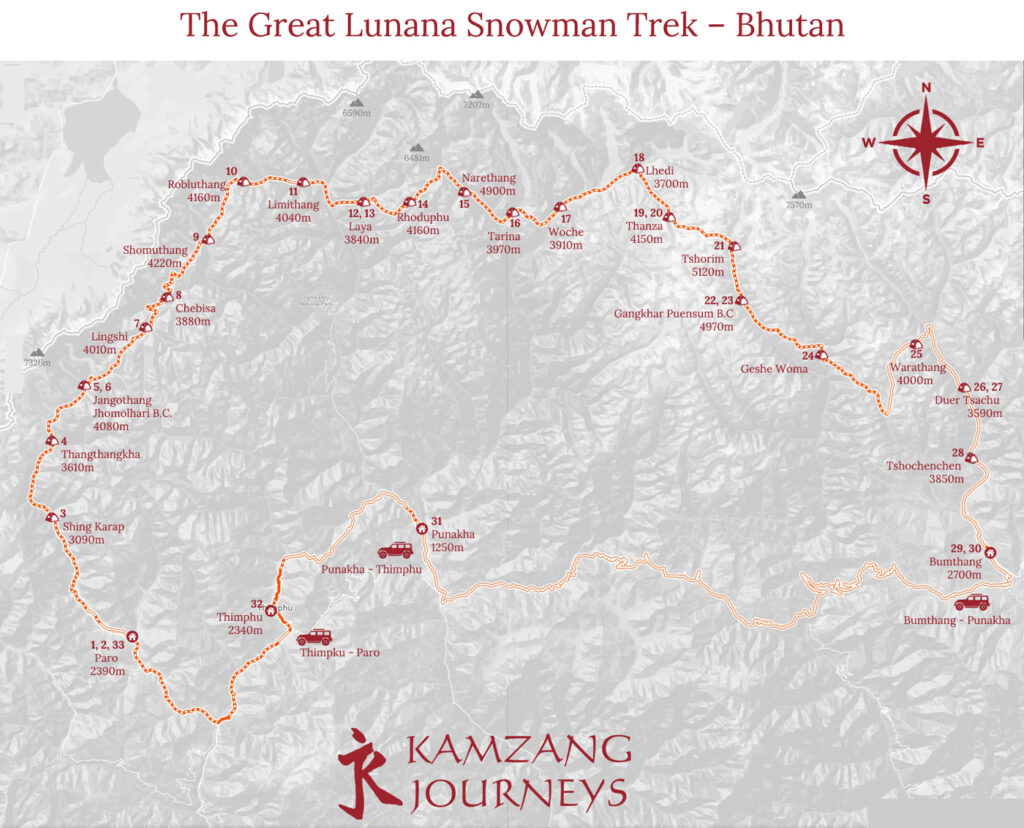
Contact & Details
Kamzang Journeys Contact Kim Bannister [email protected] [email protected] Mobile: +(977) 9803414745 (WhatsApp), 9863196743
Kathmandu Contact Khumbu Adventures [email protected] Lhakpa Dorji Sherpa Mobile: +(977) 9841235461, 9705235461 Doma Sherpa Mobile: +(977) 9841510833, 9705510833 Nuru Wangdi Sherpa Mobile: +977 9803633783 (WhatsApp),
Bhutan Contact s INNER ROUTES Owner | Loja Sureg [email protected] +975 17 420 433 Office | Jigme & Pema [email protected], Pema [email protected]
Garmin InReach | Unlimited On-Trek Text Messages + Route Map We have a Garmin MapShare page and a Garmin InReach satellite messaging device for sending and receiving messages on the treks guided by Kim + Lhakpa. Give the link to people who want to follow or communicate with us and have them send a message. The ‘message’ button is on the top left of the email link that they receive; the sender needs to input an EMAIL address (instead of mobile number) to get a response. You can email them back directly during the trek (the device is linked to my mobile) as much as you’d like. Messages are free, enjoy!
Follow Us on Facebook Kamzang Journeys Facebook I will post InReach updates to our Kamzang Journeys Facebook page if friends & family want to follow our progress.
Bhutan Visas Our Bhutan agent will issue your Bhutan visa and email it to you at least 10 days before your arrival in Paro.
Indian Visa You will have to have an e-Tourist Visa for the end of our trip, entering Assam. Be sure to have your Indian Visa before arrival in India. Most countries qualify for the new visa-on-arrival system, which is valid for 30 days, and is double entry. NOTE that you need to apply and pay for the visa BEFORE arriving in India. You get the actual visa with your paid application once in India. Indian Visa
Indian Visa Reference You can print out + fill out your Visa on Arrival form before arriving in India, but you need to apply for the visa before leaving for India. Travel Agent Delhi: Dhruv Travels, 2464, Nalwa St, Chuna Mandi, Paharganj, New Delhi, 110055, India, +91 11 2358 2715 Hotel Delhi: Jyoti Mahal Guest House, 2488-90 Nalwa Street, Chuna Mandi, Pahar Ganj, New Delhi,110055, +91 1123580523/24/25/26
Indian Visa Note You will need a 30-day e-Tourist Visa for India, as well as for Bhutan (our Bhutan agent gets these) for this bicycle trip. Book your onward ticket out of Guwahati from early afternoon onwards on Day 18. Do book extra luggage when leaving Guwahati as extra luggage in India is $$$.
Flights To + From Bhutan Our Bhutan agent can issue your flight to Paro from various destinations and can book your return flights, whether from Paro or from Guwahati in Assam, India. You can also book your own flights to Bhutan and from Bhutan or India. At the moment Druk Air is the only carrier flying into and out of Bhutan.
Travel Medical Insurance Required for your own safety. We carry a copy of your insurance with all contact, personal and policy information with us on the trek and our office in Kathmandu keeps a copy. Note that we almost always trek over 4000 meters (13,000′) and that we don’t do any technical climbing with ropes, ice axes or crampons.
Global Rescue Rescue Services We recommend (but don’t require) that our trekkers sign up for Global Rescue services as a supplement to your travel medical insurance. You can book this directly through our Kamzang Journeys site. Global Rescue
Medical On-Trek We have a full medical kit with us including Diamox (for acclimatizing), antibiotics, inhalers, bandages, re-hydration, painkillers, anti-inflammatory drugs and other essentials. Kim has First Aid, CPR and Wilderness First Responder (WFR) certifications as well as many years of experience with altitude in the Himalaya but is NOT a qualified medic or doctor, so please do have a full check-up before leaving home, and inform us of any medical issues. This is for YOUR OWN safety.
DO bring all prescription medications and rehydration powders-electrolytes. We advise bringing your own Diamox, Ciprofloxin, Azithromycin + Augmentin. We do have all of these with us, but the Western versions are generallly more reliable than the Indian equivalents. See Gear List for a full list of recommended medications for the trek.
Bhutan Health Information CDC We also recommend bringing probiotics with you to help prevent infections while on trek. Doctor’s recommendation!
General Bhutan Information See Bhutan Tab
Arrival Paro
Bhutan Contact s INNER ROUTES Owner | Loja Sureg [email protected] +975 17 420 433 Office | Jigme [email protected], Pema [email protected]
Early Arrival in Bhutan You will be met at the Paro airport by a representative from our Bhutan travel agency. Look for a sign with your name on it, they will be looking for you. You’ll be driven to the hotel in Paro where you will meet Kim, Lhakpa and those from the group who have already arrived. Everything is included in Bhutan, so if you arrive early you’ll have a driver, car and guide at your disposal.
Arrival Hotel Provide upon Booking
Currency, Credit Cards + ATMS Bhutanese Ngultrum = Indian Rupee. Although the national currency is the ngultum, IC is accepted throughout Bhutan.
+ In 1974, the ngultrum was introduced, replacing the rupee at par. The ngultrum is equal in value to the Indian rupee . India was key in assisting the Bhutanese government as it developed its economy in the early 1960s. When the ngultrum was introduced, it retained the peg to the Indian rupee which the Bhutanese rupee had maintained. The ngultrum does not exchange independently with other nations’ currencies but is interchangeable with the Indian rupee.
You’ll want local currency with you on the trip and trek for drinks, snacks, beer, soda and general shopping. There are many chances to shop during the trip, especially in eastern Bhutan, and usually local crafts to buy en route. There are ATMs in Paro, Thimpu and other cities, and you’ll want some cash to change as well.
Most larger craft shops in Thimpu, Paro and Punakha will accept credit cards, although there is generally a merchant fee surcharge. Credit cards aren’t as widely accepted in the central or east of Bhutan.
Tipping in Bhutan Tips are best in local currency, the Bhutanese ngultrum. Guides and drivers will expect tips when you last see them, so for sightseeing sections before the trip, the drivers will expect small tips, and the same for the drivers after the trip.
Bhutan Temperatures + Dress Etiquette See GEAR LIST tab for suggested gear. This is a winter bicycle trip, and although it can be cold or wet on the passes (rain or snow), generally the temperature isn’t very cold, and evenings are spent in warm lodges, often with stoves! The winter months (November – March) are chilly in the mornings, cold enough that you might start the day in a down jacket, but warm up to jeans and t-shirt weather by late morning.
For other private cycling trips: Much of Bhutan in the Spring and Autumn is warm during the day (t-shirt, sandals, light pants or skirt weather), cools down in the afternoon. Nights are often below freezing although they can also be much warmer. Summer is hotter and wetter. Nights require a down jacket if you’re sitting outside. It never hurts to have an umbrella in Bhutan as it can rain at any time of the year!
Dress conservatively in the cities and on the trail as a rule. Shorts are OK if they aren’t too short, NO shorts or tank tops in the monasteries. Use your good judgment! See Bhutan Tab for the Bhutanese dress code.
Shopping in Bhutan Bhutan is known for its crafts and textiles, and there are many local craft markets around Bhutan where you can pick up wonderful things to bring home. Your guide will help if you’re interested in shopping while in Bhutan!
Kamzang Journeys Products Duffel Bags, T-Shirts, Camp Towels, Buffs, Leather Passport Wallets, Totes & Bags, Himalayan Textile Pillow Covers & More! Kamzang Journeys Products
Gear List Guideline for the gear you will need on the trek. Please ask if you have questions. 20 kg per person!
- Day Pack (30-45 L)
- Sleeping Bag (-10 to 20F/-23C to 30C)
- Air Mattress
- Down Jacket
- Trekking Boots
- Running Shoes or Lighter Shoes (optional)
- Crocs (evenings + washing)
- Hiking Sandals (or Crocs – river crossings)
- Trekking Pants (2-3)
- T-Shirts (2-3)
- Long-sleeve Trekking Shirts (2-3)
- Trekking Jacket
- Wind + Waterproof Jacket + Pants
- Fleece or Thermal Top + Bottom (evenings)
- Lightweight Long Underwear (sleeping + layering)
- Socks (4-6)
- Gloves (lighter + heavier for passes)
- Baseball Cap or Wide-brimmed Hat
- Trekking Poles (optional, recommended)
- Down Booties (optional, recommended)
- Sunglasses (+ extra pair)
- Water Bottles | Nalgenes (2-3)
- Bladder (optional, recommended)
- Toiletries, Sunscreen with SPF, Lip Balm with SPF
- Watch (or alarm)
- Extra Batteries
- Battery Chargers
- Yak Trax or Micro Spikes (for treks with icy passes)
- Small Water Filter or Steripen (optional, to carry in daypack)
- Camp Washing Bowl (optional, collapsible for clothes)
- Laundry Detergent or Bio-degradable Clothes Soap
- Hand Sanitizer
- Small Solar Panel (optional, recommended for iPods, iPhones, camera batteries, Kindles)
- Zip-Lock Plastic Bags (extra protection for electronics, toiletries)
- Soft Toilet Paper | Tissues (we supply toilet paper but you will want something softer for blowing your nose)
- Baby-Wipes | Wet-Wipes (for personal cleaning)
- Handi-Wipes, J-Cloth or Chux (optional – quick clean, fast drying)
- Rehydration | Electrolytes
- Personal Medical Supplies
Medical + Suggested MEDS We have a full medical kit with us including Diamox (for acclimatizing), antibiotics, inhalers, bandages, re-hydration, painkillers, anti-inflammatory drugs etc. but please bring a supply of all prescription and personal medications. Kim has First Aid, CPR and Wilderness First Responder (WFR) certifications as well as many years of experience with altitude in the Himalaya but is NOT a qualified medic or doctor, so please have a check-up before leaving home, and inform us of any medical issues. This is for YOUR OWN safety! Suggested prescriptions + meds: Dexamethasone, Nifedipine + Diamox (altitude), Azithromycin, Ciprofloxacin + Augmentin (antibiotics), Compeed or blister bandages, Tegaderm, bandages, tape, antibiotic ointment + Betadine (Povidone-Iodine ointment) (wounds + cuts), knee + ankle supports/braces (if required), ACE bandage for sprains + strains. Bring whatever pain meds you generally use (Ibuprofen, Paracetamol/Tylenol, Diclofenac), meds for diarrhea (Loperimide/Immodium) and nausea (Ondansetron), antihistamines (non-drowsy, and Benadryl is ok for a drowsy one that might help with sleep), as well as any medications that you take regularly or that your doctor prescribes. We recommend picking up a combination salmeterol and fluticasone inhaler in Kathmandu, good for (from a doctor trekking friend “high altitude cough due to reactive airways, which is kind of like temporary asthma. The ingredients in the inhaler relax the bronchial passages and calm inflammation in the airways.” Stay away from sleeping medications, drugs in the codeine-opiate-narcotic family and other drugs that suppress your breathing (not a good at altitude). And don’t forget electrolytes! – have some with you in your pack (as well as snacks) every day please … We’re happy to take excess medical supplies off your hands when you leave if you won’t need them and pass them on to others. We use lots of the large amount we have with us to treat locals as well as our own trekkers…
Comments on Gear Layers are essential for trekking. Quality is more important than quantity. It’s worth investing in the great, newer lightweight trekking gear available in all gear shops, online or in Kathmandu.
Kim’s Gear Suggestions: I generally wear a trekking t-shirt, light trekking pants, a mid-weight shirt, a lightweight synthetic jacket (instead of a fleece), a lightweight jacket and pants for wind and rain. If the weather looks stormy or it’s a pass day I carry a lightweight down jacket and a storm-weight jacket. I always have a pair of lightweight gloves (heavier ones additionally for pass days), a hat, a baseball cap and an extra pair of socks in my day-pack. I generally trek in low Merrill hiking shoes, and Keen boots on very cold days and over passes. I always carry Crocs with me in case of river crossings, or to air my feet at lunch. I carry a 38 L (although it looks larger) Black Diamond day pack although I also love Osprey packs. On pass days I carry Yak Trax and trekking poles, and I always have an extra pair of sunglasses, electrolytes, my camera, a medical kit, a Steripen, snacks and lots of water in my pack. My favorite gear brands available in Kathmandu are Sherpa Gear, Mountain Hardwear and Marmot. I wear lots of Patagonia gear although it’s not available in Kathmandu.
Good trekking boots are essential. High boots are best, but you don’t need climbing or plastic boots (for mini-crampons or micro-spikes). You can also get away with low, sturdy trekking boot, which I wear quite often except for over the passes. Trekking poles are not required but strongly recommended, especially for going down passes which are often steep and icy and for treks with river crossings. Bring gators if you tend to use them but they’re not required if you don’t own a pair. Micro-spikes (mini-crampons) or YakTraxs are almost always useful (or essential) for the pass crossings. We will have at least one ice ax with us. It’s also good (possibly essential) to have a pair of plastic Crocs for washing and to wear in the lodges in the evenings. Tevas take a long time to dry and are relatively heavy.
Good, polarized sunglasses are essential. Do bring an extra pair. Don’t forget a sun hat and/or a baseball cap, an extra headlamp and have plenty of sunscreen and lip balm with SPF!
The weather is changeable in the Himalaya, so again I recommend that everyone has a strong, WATERPROOF duffel bag for the trip (although they do tend to weigh more). We supply covers that go over the duffel bags to protect them from rain, dirt & rips.
Nights are cold, so a down jacket and a WARM sleeping bag are essentials. For your sleeping bag, we recommend a DOWN bag of 0 to -20 F (-18 to -28 C). Mine is -20 F. At lower altitudes I open it and sleep under it like a quilt and up higher am toasty warm during the cold nights. Campsites near passes can get COLD. Rentals available. The dining tent is a Tibetan style ‘yurt’, with blankets and camp chairs on the ground. It warms up in the evenings with the gas lamp but it is still important to have warm clothes for the evenings. I always use down booties which are great when it’s cold, but a pair of thick wool socks also work.
Bring extra large plastic bags or stuff-sacks in case of rain. You can pack electronics in them or stash your sleeping bag and clothes. The weather is changeable in the Himalaya, so again I recommend that everyone has a strong, waterproof duffel bag for the trip. We supply covers that go over the duffel bags to protect them from rain, dirt & thorns.
Tents Everyone gets their own Western tent without a single supplement. Tents supplied by Xplore Bhutan.
Day Pack We recommend a 35-45 liter day pack (ask at your gear shop if you’re not sure of the capacity). Better to have it too large than too small as on pass days you’ll need to carry more warm gear. Most have internal water bladders built in, which are good for ensuring that you stay hydrated. Make sure it fits and is comfortable before purchasing!
In your day pack, you will be carrying your camera, 2+ liters of water, a jacket, wind & rain pants, hat, gloves, extra socks, sunscreen, snacks, electrolytes, water purifying tablets, filter, or Steripen camera, hand sanitizer, a pack-cover and often a down jacket. I slip my Crocs on the back in case of unexpected stream crossings or for lunch.
Water We bring KATADYN expedition-sized water filters along on the trek for fresh drinking water, ecologically the best way to get water in the Himalaya’s fragile trekking regions. Bring your own filter pump, Steripen/UV purifier or iodine/chlorine tablets for fresh water while trekking. NOTE: To be extra safe with your drinking water, you can drop one purifying tablet into your water bottle after filling with our filtered water. Make sure you wait the required amount of time before drinking, and don’t add anything with Vitamin C as this negates the iodine.
Please bring at least TWO (and better three) Nalgene, Sigg or other unbreakable plastic/metal water bottles. Camelbacks and other bladder systems are good for trekking but can leak, so as a back-up it’s best to also bring a Nalgene or other water bottle.
NOTE: We do not provide boiled water for drinking on either our tea-house/lodge or our camping treks although there is endless hot water for herbal, black or green teas, hot chocolate, hot lemon as well as Indian chai and Kashmiri tea.
Snacks You will NEED snacks hiking at altitude, even if you’re not a snacker. People crave unusual foods at altitude! Energy bars, ‘GU’ gels, chocolate bars, dried fruit & nuts, beef jerky (or whatever) are important to have along for long days, before lunch and passes. Lemonade mix, Emergen-C or similar drink mixes are great to have for hot days in your water bottles, and it is ESSENTIAL to bring electrolytes with you every day.
Packing & Storage It’s easiest to pack and unpack from a duffel bag, especially when the temperature drops, and easiest for porters to carry. Inexpensive and decent quality duffels are available in Kathmandu (if you’re passing through) but it’s best to invest in a strong, waterproof duffel such as a North Face. You can store extra gear with Xplore Bhutan before the trek.
Travel Photography Gear Guide The Complete Guide to Gear for the Landscape Photographer
Bhutan Shrouded for centuries in the misty serenity of the great Himalayas, the Land of the Thunder Dragon, or Bhutan, as now known to the rest of the world, developed its own distinct civilization. This deeply spiritual land is home to a unique identity, derived essentially from a fertile religious and cultural heritage. Bhutan brims with myth and legend. As a befitting testimony, a great Buddhist heritage of over 2000 monasteries and 10,000 monuments dot its peaceful open space and regal mountains. An ambience of near sacred tranquility permeates the land, fostering an environment of spiritual affluence that has shaped the foundation of that rarity that we know as Bhutanese life. All Bhutanese are required to wear their national dress, called gho for men, kira for women.
The Bhutanese have deliberately and zealously safeguarded and preserved their rich culture and traditions, its ancient way of life, in all its aspects. And it is perhaps one of the world’s last strongholds of unspoiled wilderness. It is a part of the earth that represents a fabled realm. Bhutan is a land where the past and the contemporary co-exist in harmony, a recipe that makes a journey undeniably amazing. A trip through Bhutan, in many ways, is still a journey into the past. In this small tract of land, one of the most rugged terrains in the world frames one of the world’s richest vegetation. It is a land of about 700,000 people who believe that Gross National Happiness is more important than Gross National Product. Bhutan is a country with a different face. And a different story to tell.
Apart from trekking along the northern frontier, you will be also visiting the main western towns of Thimphu, Paro and Punakha. Western Bhutan is comparatively more developed than the rest of the country. Thimphu, the capital, has all the important government offices, including the King’s Secretariat. Paro has the only airport and Punakha is the ancient capital of Bhutan.
The yeti, locally known as ‘migoi’, is still talked about in the high, Himalayan regions of Bhutan. From a BBC article “It’s widely believed in Bhutan that the yeti walks backwards to fool trackers … Another common belief is that the yeti cannot bend its body, a feature it is thought to share with evil spirits. According to author Kunzang Choden, this explains why most traditional Bhutanese homes have small doorways. In her book, Bhutanese Tales of the Yeti, she describes how the raised threshold and lowered lintel force anyone who enters to lift their leg and bend their head.”
Ethnic Groups of Bhutan There are numerous ethnic groups in Bhutan, and no one group constitutes a majority of the Bhutanese population. The Bhutanese are of four main ethnic groups, which themselves are not necessarily exclusive: the politically and culturally dominant Ngalop of western and northern Bhutan; the Sharchop of eastern Bhutan; the Lhotshampa concentrated in southern Bhutan; and Bhutanese tribal and aboriginal peoples living in villages scattered throughout Bhutan.
Ngalop The Ngalop, meaning ‘earliest risen’ or ‘first converted’ according to folklore, are people of Tibetan origin who migrated to Bhutan as early as the 9 th century. The Ngalop introduced Tibetan culture and Buddhism to Bhutan and their language, Dzongkha, is the national language, coming from old Tibetan. The Ngalop are dominant in western and northern Bhutan, including Thimphu.
Sharchop The Sharchop, meaning ‘easterner’, are people of mixed Tibetan, South Asian and Southeast Asian descent residing primarily in eastern Bhutan, the largest ethnic group in Bhutan. Most Sharchop speak Tshangla, a Tibeto-Burman language, and are closely related to the aboriginal Monpa (Menba) although most have been largely assimilated into the Tibetan-Ngalop culture.
Lhotshampa The Lhotshampa are generally classified as Hindus although this group includes Buddhist Tamang and Gurung, as well as Kiranti (Rai and Limbu) who are traditionally largely animist. The Lhotshampa are generally Nepalese, and their main festivals include Dashain and Tihar. In the past, the Bhutanese government attempted to limit immigration and restrict residence and employment of Nepalese to the southern region, and throughout the 80s and 90s, over 100,000 Lhotshampa fled Bhutan for Nepal in fear of persecution. Many Bhutanese refugees still reside in UNHCR refugee camps in Nepal, though many have been resettled to third countries.
Indigenous + Tribal Groups Small aboriginal and indigenous tribes live scattered throughout Bhutan, culturally and linguistically part of the populations of West Bengal or Assam, having embraced Hindu agricultural systems. These groups include Brokpa, Lepcha and Doya tribes, as well as the descendants of slaves who were brought to Bhutan from tribal areas in India.
Tibetans Bhutan also has a sizable Tibetan refugee population, most arriving after 1959 although there are no purely Tibetan communities or villages. There were once three types of Tibetan refugees in Bhutan, most of whom migrated to India to be with the Dalai Lama, while the third group was divided into two sections, those who chose to stay in Bhutan, and those who stayed but chose to leave. Those Tibetans who chose to stay now have Bhutanese residency, while the others do not, and they don’t share exactly the same benefits as other Bhutanese.
Culture of Bhutan Cradled in the folds of the Himalayas, Bhutan has relied on its geographic isolation to protect itself from outside cultural influences. A sparsely populated country bordered by India to the south, and China to the north, Bhutan has long maintained a policy of strict isolationism, both culturally and economically, with the goal of preserving its cultural heritage and independence. Only in the last decades of the 20th century were foreigners allowed to visit the country, and only then in limited numbers. In this way, Bhutan has successfully preserved many aspects of its culture, which dates directly back to the mid-17th century.
Modern Bhutanese culture derives from ancient culture. This culture affected the early growth of this country. Dzongkha and Sharchop, the principal Bhutanese languages, are closely related to Tibetan, and Bhutanese monks read and write the ancient variant of the Tibetan language, known as chhokey. The Bhutanese are physically similar to the Tibetans, but history does not record when they crossed over the Himalayas and settled in the south-draining valleys of Bhutan. Both Tibetans and Bhutanese revere the tantric guru, Padmasambhava, the founder of Himalayan Buddhism in the 8th century.
Religion in Bhutan Bhutanese society is centered around the practice of Buddhism, which is the main religion. Religious beliefs are evidenced in all aspects of life. Prayer flags flutter on hillsides, offering up prayers to benefit all nearby sentient beings. Houses each fly a small white flag on the roof indicating the owner has made his offering payments to appease the local god. Each valley or district is dominated by a huge dzong, or high-walled fortress, which serves the religious and administrative center of the district. Approximately 23% of the population is Hindu. There is a small Muslim population in Bhutan, covering 0.2% of the whole country’s population. Overall, 75% of the population is Buddhist, and 0.4% other religions.
Religious Festivals Once every year, a dzong or important village may hold a religious festival, or Tsechu. Villagers from the surrounding district come for several days of religious observances and socializing while contributing auspicious offerings to the lama or monastery of the festival. The central activity is a fixed set of religious mask dances, or cham, held in a large courtyard. Each individual dance takes up to several hours to complete and the entire set may last two to four days. Observation of the dances directly blesses the audience and also serves to transmit principles of Tantric Buddhism to the villagers. A number of the dances can be traced directly back to Shabdrung Ngawang Namgyal himself, the founder of Bhutan, and have been passed down essentially unchanged since the mid-17th century. Prior to dawn on the final day of the tsechu a huge tapestry, or thongdrel, is unfurled in the courtyard of the dzong for several hours. The mere sight of it is believed to bring spiritual liberation. The thongdrel is rolled up before the rays of the morning sun can strike it.
Monks join the monastery at six to nine years of age and are immediately placed under the discipleship of a headmaster. They learn to read chhokey, the language of the ancient sacred texts, as well as Dzongkha and English. Eventually they will choose between two possible paths: to study theology and Buddhist theory, or take the more common path of becoming proficient in the rituals and personal practices of the faith.
The daily life of the monk is austere, particularly if they are stationed at one of the monasteries located high in the mountains. At these monasteries food is often scarce and must be carried up by the monks or their visitors. The monks are poorly clothed for winter conditions and the monasteries are unheated. The hardship of such a posting is well-recognized; to have a son or brother serving in such a monastery is recognized as very good karma for the family. A monk’s spiritual training continues throughout his life. In addition to serving the community in sacramental roles, he may undertake several extended silent retreats. A common length for such a retreat is three years, three months, three weeks and three days. During the retreat time he will periodically meet with his spiritual master who will test him on his development to ensure that the retreat time is not being wasted.
Each monastery is headed by an abbot who is typically a Lama, although the titles are distinct. The highest monk in the land is the chief abbot of Bhutan, whose title is Je Khenpo. He is theoretically equivalent in stature to the king. The Central Monk Body is an assembly of 600 or so monks who attend to the most critical religious duties of the country. In the summer they are housed in Thimphu, the nation’s capital, and in the winter they descend to Punakha dzong, the most sacred dzong in Bhutan, where Shabdrung Ngawang Namgyal’s mortal body has been kept under vigil since the late 17th century.
Music of Bhutan Bhutanese music has traditional genres such as Zhungdra, Boedra, and a modern genre called Rigsar. Bhutanese musicians include: Jigme Drukpa, who is also a leading Bhutanese musicologist.
Official Behavioral Code The Driglam Namzha is the official behaviour and dress code of Bhutan. It governs how citizens should dress in public and how they should behave in formal settings. It also regulates a number of cultural assets such as art and Bhutanese architecture. In English, driglam means “order, discipline, custom, rules, regimen” and namzha means “system,” though the term may be styled “The Rules for Disciplined Behaviour.”
It is a manner and etiquette as what to wear, how to eat, talk and bow down before the government officials and the clergy. The Driglam Namzha was imposed on all citizens from 1990. The people of different ethnic heritage for example the Lhotsampas (Bhutanese citizens of ethnic Nepali origin – they were not Bhutanese citizens and they were not Lhotsampas) resented this and revolted against this imposition, thereby getting kicked out of Bhutan to the refugee camps. About 20% of Bhutan’s population currently live in exile because of this Bhutanization policies of the Royal Government followed by land expropriation and persecution.
To preserve the indigenous Buddha’s Teachings as their long-guarded culture and tradition, Menjong Chöthün Tshogpa, a charitable organization was established in 2002 by The Supreme Dharma King or Trulku Jigme Chöda Rinpoche 70th Je Khenpo of Bhutan.[2] The chairman at present is Trizin Tsering Rimpoche who also happens to be the founder of Buddha Dordenma Image Foundation, another charitable organization in Bhutan.
National Dress Code Previously all Bhutanese citizens were required to observe the national dress code, known as Driglam Namzha, while in public during daylight hours. The rule was enforced more rigorously in some districts (dzongkhag) than others. Men wear a heavy knee-length robe tied with a belt, called a gho, folded in such a way to form a pocket in front of the stomach.
Women wear colourful blouses over which they fold and clasp a large rectangular cloth called a kira, thereby creating an ankle-length dress. A short silk jacket, or toego may be worn over the kira. Everyday gho and kira are cotton or wool, according to the season, patterned in simple checks and stripes in earth tones. For special occasions and festivals, colourfully patterned silk kira and, more rarely, gho may be worn.
Additional rules of protocol apply when visiting a dzong or a temple, or when appearing before a high-level official. Male commoners wear a white sash (kabney) from left shoulder to opposite hip. Local and regional elected officials, government ministers, cabinet members, and the King himself each wear their own colored kabney. Women wear a narrow embroidered cloth draped over the left shoulder, a rachu.
The dress code has met with some resistance from Lhotshampa, people of Nepali ancestry, living along the Indian border who resent having to wear a cultural dress which is not their own.
Bhutanization | The Darker Side Despite living in Bhutan for up to five generations, the Lhotsampas retained their highly distinctive Nepali language, culture, and religion. They participated in public life and politics, even attaining positions of significant leadership. The Lhotsampas coexisted peacefully with other ethnic groups in Bhutan until the mid 1980s, when Bhutan’s king and the ruling Druk majority became worried that the growing Lhotsampa population could threaten the majority position and the traditional Buddhist culture of the Druk Bhutanese.
The government therefore initiated a campaign, known as “One country, one people,” or “Bhutanization” to cement Bhutanese national identity. The policies imposed the Druk dress code, religious practices, and language use on all Bhutanese regardless of prior practices. These changes negatively impacted the Lhotsampa people, because they did not wear the same traditional dress, practice the same religion, or speak the same language as the northern Bhutanese. The use of the Nepali language was prohibited in schools, many Lhotsampa teachers were dismissed, and textbooks were burned.
Men + Women in Society Men and women work together in the fields, and both may own small shops or businesses. Men take a full part in household management, often cook, and are traditionally the makers and repairers of clothing (but do not weave the fabric). In the towns, a more “western” pattern of family structure is beginning to emerge, with the husband as breadwinner and the wife as home-maker. Both genders may be monks, although in practice the number of female monks is relatively small.
Marriages are at the will of either party and divorce is not uncommon. The marriage ceremony consists of an exchange of white scarves and the sharing of a cup. Marriages can be officially registered when the couple has lived together for more than six months. Traditionally the groom moves to the bride’s family home (matrilocality), but newlyweds may decide to live with either family depending on which household is most in need of labour.
Bhutanese Names Except for royal lineages, Bhutanese names do not include a family name. Instead two traditional auspicious names are chosen at birth by the local lama or by the parents or grandparents of the child. First names generally give no indication if the person is male or female; in some cases the second name may be helpful in that regard.
As there is a limited constellation of acceptable names to choose from, inevitably many people share the same combination of first and second names. To resolve the ambiguity an informal nicknaming system comes into play which recognizes where a person is from. If a certain “Chong Kinley” is from Chozom village in the Paro valley, she is called “Paro Kinley” when she is travelling outside the valley. In Paro valley itself she is identified by the name of her village, thus “Chong Kinley Chozom”. Surprisingly, multiple children in a small hamlet of a few houses may have exactly the same name, reflecting the inspiration of the local lama. In this case, she is identified by the name of the house she was born in, thus “Chemsarpo” Kinley.
Food of Bhutan The staple foods of Bhutan are red rice (like brown rice in texture, but with a nutty taste, the only variety of rice that grows in high altitudes), buckwheat, and increasingly maize. The diet in the hills also includes chicken, yak meat, dried beef, pork, pork fat, and lamb. Soups and stews of meat, rice, ferns, lentils, and dried vegetables, spiced with chili peppers and cheese, are a favourite meal during the cold seasons.
Zow shungo is a rice dish mixed with leftover vegetables. Ema datshi, made very spicy with cheese and chili peppers (similar to chili con queso), might be called the national dish for its ubiquity and the pride that Bhutanese have for it. Other foods include: jasha maru (a chicken dish), phaksha paa, thukpa, bathup, and fried rice.
Dairy foods, particularly butter and cheese from yaks and cows, are also popular, and indeed almost all milk is turned into butter and cheese. Popular beverages include: butter tea, black tea, locally brewed ara (rice wine), and beer. Popular spices include: curry, cardamom, ginger, thingay (Sichuan pepper), garlic, turmeric, and caraway.
When offered food, one says meshu meshu, covering one’s mouth with the hands in refusal according to Bhutanese manners, and then gives in on the second or third offer.
Sports of Bhutan Archery is the national sport in Bhutan, and competitions are held regularly in most villages. It differs from Olympic standards in technical details, such as the placement of the targets and atmosphere. There are two targets placed over 100 m apart and teams shoot from one end of the field to the other. Each member of the team shoots two arrows per round.
Traditional Bhutanese Archery is a social event, and competitions are organized between villages, towns, and amateur teams. There is usually plenty of food and drink complete with singing and dancing. Attempts to distract an opponent include standing around the target and making fun of the shooter’s ability. Darts (kuru) is an equally popular outdoor team sport, in which heavy wooden darts pointed with a 10 cm nail are thrown at a paperback-sized target 10 to 20 m away.
Another traditional sport is digor, which resembles shot put and horseshoe throwing.
Football is the most popular sport in Bhutan. In 2002, Bhutan’s national football team played Montserrat in what was billed as The Other Final; the match took place on the same day Brazil played Germany in the World Cup Final, and at the time Bhutan and Montserrat were the world’s two lowest ranked teams. It was held in Thimphu’s Changlimithang Stadium, and Bhutan won 4–0. Cricket has also gained popularity in Bhutan, particularly since the introduction of television channels from India. The Bhutan national cricket team is one of the most successful affiliate nations in the region. – Most of this information from Wikipedia
Tucked between the Tibetan Plateau to the north and India to the south, west and east, Bhutan lies entirely within the Eastern Himalayas. It’s just half the size of Indiana. But 51% of its land is protected—the highest percentage of any nation in Asia. Equally striking, the Bhutanese constitution requires at least 60% of the country’s forest cover to be permanently maintained (the country is currently at more than 70%).
Those percentages reflect the value of protected areas—and more broadly, nature—to multiple facets of Bhutanese society. One is spiritual: Bhutan’s culture is rooted in Buddhism, which emphasizes the interdependence between humans and nature … Wildlife delivers revenue as well. The country’s mountains, alpine meadows and thick forests shelter more than 5,600 vascular plant species and 200 mammal species. There are tigers, snow leopards and Asian elephants—as well as bird species like the beautiful nuthatch. Tourism showcasing Bhutan’s biodiversity and nature-inspired culture is one of the fastest-growing sectors of the country’s economy …
Renewable hydropower sold to India currently generates more than 45% of national revenue, and the country must diversify its economy to address its evolving needs. At the same time, Bhutan’s leaders are keeping a close eye on Gross National Happiness—the country’s holistic approach to prosperity that includes social, environmental and political priorities alongside economic ones.” – WWF
“The majority of Bhutanese still live off the land, practicing subsistence agriculture and animal husbandry. Bhutan is the only country in the world whose state religion is Mahayana Buddhism. Its official language, Dzongkha, is spoken in few other places on earth — but all Bhutanese schoolchildren, even in the deepest countryside, are taught English. Bhutan only got television in 1999. There are no plastic bags allowed in Bhutan, and 72 percent of the country is under forest cover. In 2013, the government announced its intention to become the world’s first 100-percent organic-farming nation … Gender equality is a work in progress; fewer than 9 percent of the country’s nationally elected officials are women.” – NY Times
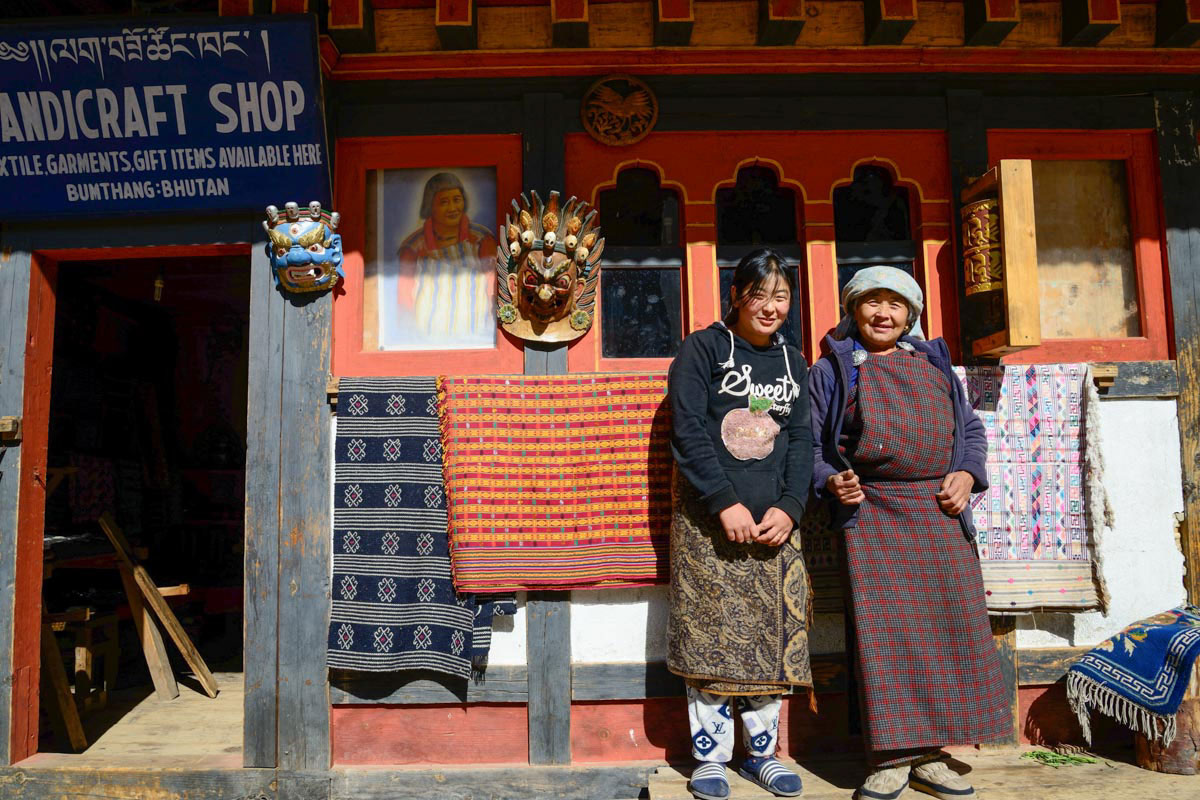
Great Stays
Luxury Bhutan Hotels Amankora Resorts Le Meridien COMO Uma Hotels Aman Bhutan Lechuna Heritage Lodge Zhiwa Ling Dewachen
Luxury Hotels Paro | Hotel Zhiwa Ling or Como Uma Thimphu | Le Meridien Punakha | Hotel Densa or Como Uma Phobjikha | Gangtey Lodge Bumthang | Luxury Lodge Haa | Lechuna Heritage Lodge
Ultra Luxury Hotels Amankora Paro Amankora Thimpu Amankora Punakha Amankora Gangtey Amankora Bumthang
Heritage Hotels Paro | Hotel Tenzinling Thimphu | Hotel Galingkha Pukakha | Hotel Vara Phobjikha | Hotel Dewachen Bumthang | River Lodge Haa | Lechuna Heritage Lodge
KIM BANNISTER PHOTOGRAPHY | HIMALAYAN TREKS, CYCLE TRIPS & TRAVELS Kim Bannister Photography
CYCLE THE HIMALAYA PHOTOS Guided Cycling Trips
KAMZANG JOURNEYS | ALL ABOUT US IN PHOTOS Explore Kamzang Journeys
KAMZANG JOURNEYS | YELLOW TENT PHOTOS The Yellow Tent of Eternal Happiness

HIMALAYAN WILDLIFE, BIRDS & FLOWERS PHOTOS Himalayan Wildlife, Birds & Plants
HIMALAYAN DESIGN & CULTURAL PHOTOS Himalayan Design & Cultural Photos
KAMZANG JOURNEYS GROUP PHOTOS Kamzang Journeys Groups
KAMZANG JOURNEYS STAFF PHOTOS Kamzang Journeys Staff
THE KAMZANG FUND & KAMZANG KIDS PHOTOS The Kamzang Fund

NEPAL JOURNEYS PHOTOS Nepal Journey
INDIA JOURNEY PHOTOS India Journeys
TIBET JOURNEYS PHOTOS Tibet Journeys
BHUTAN JOURNEYS PHOTOS Bhutan Journeys
MYANMAR (BURMA) JOURNEYS PHOTOS Myanmar (Burma) Photos
MONGOLIA JOURNEYS PHOTOS Mongolia Journeys
SOUTHEAST ASIA PHOTOS South East Asia Photos

oneworldtrek September 25, 2017 Camping Trips , Epic Himalayan Journeys , Trekking Trips In Bhutan
A HIGH AND WILD TRAVERSE ACROSS BHUTAN’S MOUNTAIN WILDERNESS OF LUNANA
- Bhutan’s ultimate mountain journey
- Visit the colorful village of Laya
- Hike to the Tiger’s Nest Monastery
- Remote wilderness hiking & isolated villages
- Sightseeing at the spectacular Punakha Dzong
This trip offers a rare opportunity to visit one of the most isolated communities in the world. The high valleys of Lunana are situated below the world’s highest unclimbed mountain, Gangkar Puensum, and are cut off from the rest of the world by snow on the passes for six or seven months of the year. Until 1994 this area was strictly off limits to foreigners. Trekking into Bhutan ‘s central mountain range, this trip follows yak herders trails across high passes and travels among some of the last virgin peaks of the Himalaya, in a breath-taking landscape that has seen relatively few foreign visitors. Starting out at the Winter Capitol of Punakha, this unique and challenging itinerary spends three days climbing the steep gorge leading to the outlandish village of Laya, before crossing the mighty Karakachu La and entering the Lunana District.
After spending seven days walking through this ‘‘paradise on earth,” our route crosses the Gophu La to explore the valleys to the south of Gangkar Puensum. Finally, we head southwards to the wide-open, fertile valleys of Bumthang. This is as close to Shangri La as it gets! Today the Lunana trek remains one of the ultimate Himalayan adventures, among some of the most beautiful and unspoiled mountain scenery on earth. Bhutan is situated in a hidden corner of the eastern Himalaya, sandwiched between China (Tibet) to the north, Sikkim to the west, and the Indian states of Assam and West Bengal to the south and Arunachal Pradesh to the east. The country within these borders forms a giant staircase, from a narrow strip of land in the south, at an altitude of 1,000 feet, up to some of the highest of Himalayan peaks in the north, rising to over 20,000 feet. A sparsely populated country, Bhutan is often compared to Switzerland because of its small size, jealously guarded isolation and stunning mountain scenery. More than 90% of the population are hill farmers who live in small villages spread over some 18,000 square miles of rugged mountain country.
Buddhist teachings and philosophy are influential throughout the kingdom, as they have been since the 7th century and a deep and traditional reverence for nature has led to Bhutan imposing some of the strictest standards of environmental preservation in the world. More than 65% of the land is still under forest cover and some of the rarest of Himalayan wildlife, such as the blue sheep, takin and golden langur, are quite common. It is often said that even the most experienced trekker will find Bhutan to be a revelation. In this country known as Druk Yul, ‘‘the Land of the Thunder Dragon,” the fortunate visitor will find a rare combination of harmony and accord, among incredible natural beauty. The air is clean and unpolluted, the mountains are magnificent and the architecture is inspiring.
The Snowman Trek ( Camping Trip ) is part of our Epic Himalayan Journey Series! These trips are led by an experienced Bhutanese trekking guide, full support crew and represent the gourmet trekking offerings of the great Himalayan Range. Please contact us with any questions or to receive a detailed day to day Trip Itinerary.
TRIP OUTLINE: Day 1: Fly from Bangkok to Paro, Bhutan. Hotel. Day 2: Sightseeing in the Paro Valley. Hotel. Day 3: Drive to Gasa Hot Springs and camp/farmhouse. Day 4: Drive to Tongchuda & trek to Laya Village. Day 5: Exploration and acclimatization day at Laya. Day 6: Trek to Rodophu. Day 7: Trek to Narithang below the Karakachu La Pass. Day 8: Cross the Karakachu La to Tarina. Day 9: Trek to Woche Village. Day 10: Cross the Keche La to Lhedi. Day 11: Trek to Thanza. Day 12: A rest day at Thanza. Day 13: Trek to Tsorim. Day 14: Cross the Gophu La to Sasha Chu. Day 15: Descend Sasha Chu to Geche Woma. Day 16: Cross the Saka La to Warthang. Day 17: Trek to Dhur Tsachu. Day 18: Exploration day at Dhur Tsachu. Day 19: Cross the Djule La to Tsoenchen. Day 20: Trek to Gorsum. Day 21: Trek to Dhur and drive to Bumthang. Lodge. Day 22: Drive to Gangtey Gompa. Lodge. Day 23: Drive via Punakha Dzong to Thimphu. Hotel. Day 24: Sightseeing in Thimphu and drive to Paro. Hotel. Day 25: Fly to Bangkok.
Book Your Trip Now
Email us today to get a detailed itinerary and plan the trip of a lifetime exploring and immersing in foreign cultures.
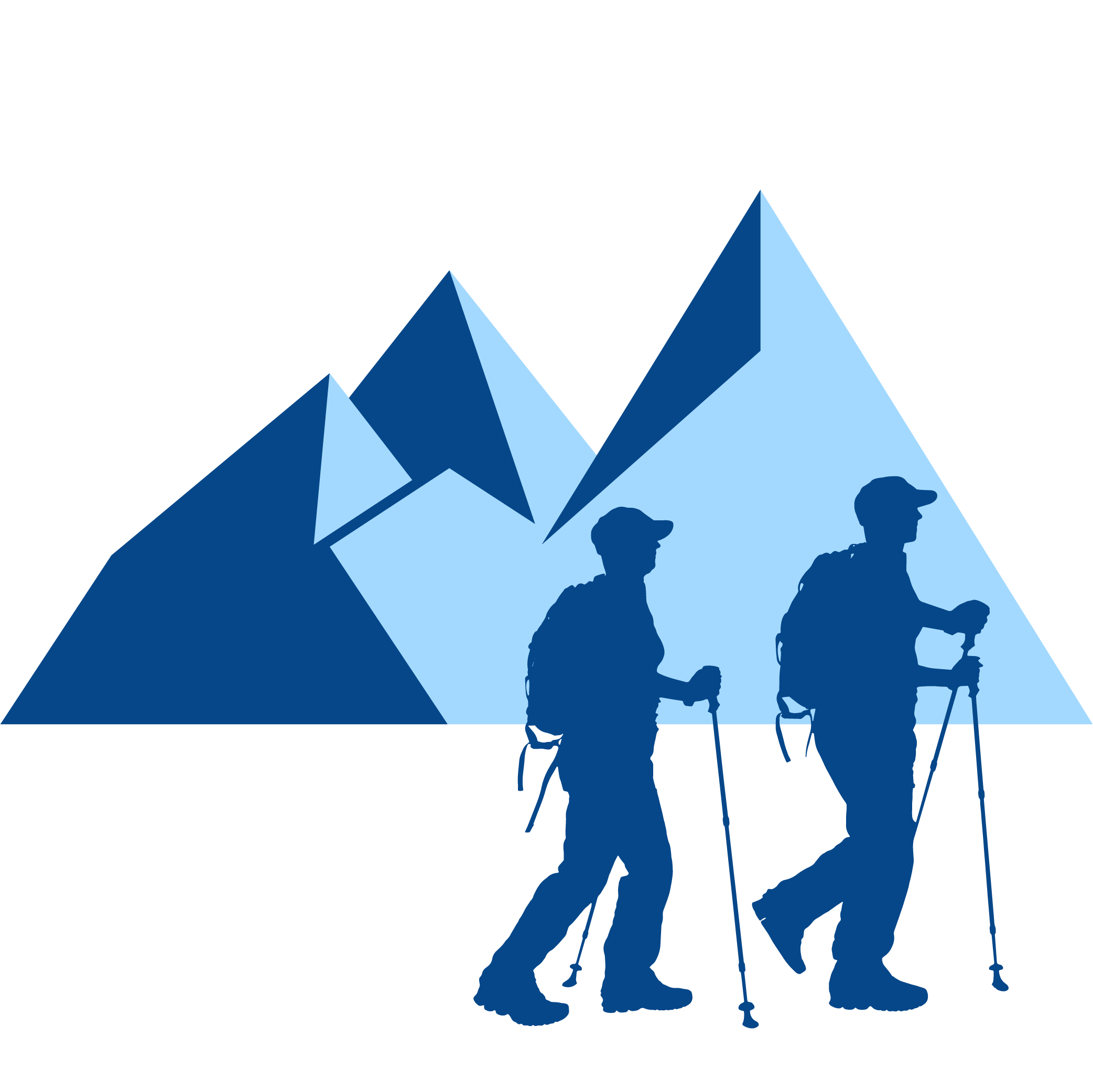
Share this Trip With Your Friends
25 Days • 5 nights in hotels • 1 night local lodge • 18 nights of tented camping Trek Grade • 19 days of STRENUOUS trekking Max. Altitude •17,155 feet at the Gophu La Pass
In 2024, we are able to arrange our Snowman Trek in Bhutan beginning on any date during the months of late August through October for a group of 1 to 10 people.
1 Person: $15,810.00 2 People: $14,850.00 3 to 10 People: $14,610.00 Single hotel room and single tent supplement: $1375.00 per person Bangkok / Paro / Bangkok airfare: proposed to be $1020.00 for Economy-Class.
EVEREST BASE CAMP ANNIVERSARY TREK – NEPAL
- Trekking Trips In Nepal
- Trekking Trips In Bhutan
- Trekking Trips In India
- Trekking Trips In Tibet
- Worldwide Trekking Tours
- Classic Himalayan Treks
- Epic Himalayan Journeys
- Camping Trips
- Lodging Trips
- List of All Trips
- Mount Everest Trekking Trips
- Annapurna Trekking Trips
- Kingdom of Mustang Trekking Trips
- Our Nepal Connection
- Trip Sign Up Info
- Trip Reservation Form
- Booking Conditions
- Adventure Travel Trip Insurance
- Avia Travel Services
- General Adventure Tour Information
- Health, Medical & Altitude Advice
- Trekking – Frequently Asked Questions
- Trekking Gear & Clothing Information
- What Is Trekking?

- Last minute guaranteed trips
- Covid Info Hub
- Info nights & events
- How to book
Bhutan Snowman Trek
The ultimate traverse along bhutan's mountainous backbone.
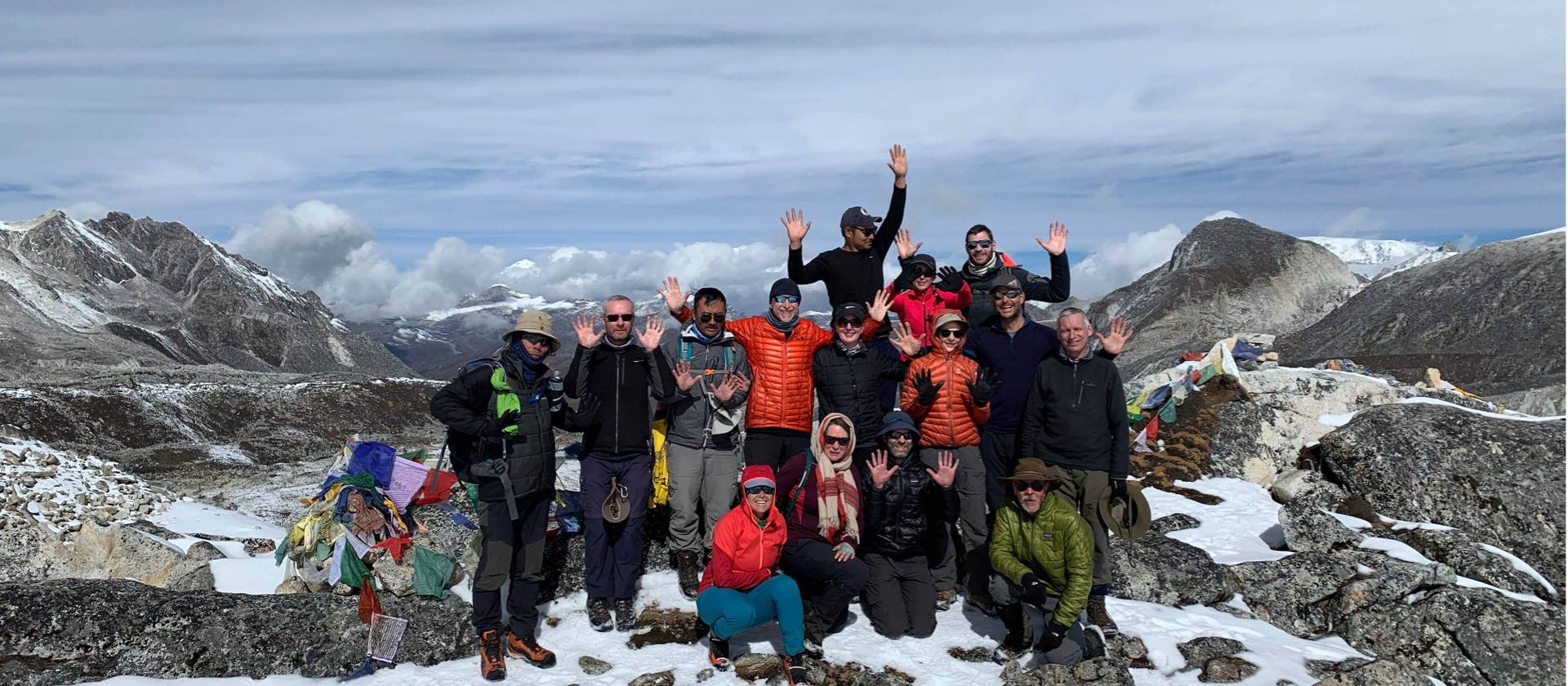
27 Days NaN
- 23 day trek
- 3 nights hotel
- 23 nights camping
- 26 Breakfasts
Traveller Rating
Read 20 reviews
Share this trip with a friend
Destination
Antarctica & the arctic, australasia, central america, central asia, indian subcontinent, middle east, north america, south america, vessels & boats, advanced search, thoughtful travel.
- Accommodation
- Bike Information
- Trail Surface
- About your leader
- Departure dates
- Essential information
- Trip reviews
- Related articles
Similar trips
- Suggested extensions
Share this trip
Bhutan Snowman Trek Trip highlights
- Challenge yourself on one of the greatest and most rewarding treks of the Himalaya
- Cross 11 high passes as you trek to the isolated region of Lunana
- Absorb magnificent mountain views, explore hidden valleys and bask in the serenity of high altitude lakes
- Explore Paro and surrounds including the impressive Takstang Monastery (Tiger's Nest)
- Experience the culturally rich region of Bhutan
Why Book With Us
- Trip escorted by experienced world class World Expeditions leader specialising in remote trekking, exploration and mountaineering.
- World Expeditions have been offering active adventures around the world for over 45 years.
- Enjoy a fully supported trek including comfortable sleeping and dining tents with all meals freshly prepared by a team of dedicated cooks
- Experienced support team equipped with group medical kit, portable altitude chamber and emergency satellite phone.
- Use of trek pack including quality sleeping bag, down jacket and insulated mat and receive a souvenir World Expeditions kit bag.
The Snowman Trek is our most challenging trek in Bhutan and ranks amongst the very finest anywhere in the Himalaya. It is undertaken by only a handful of trekkers each season and accesses Lunana, the most remote region of Bhutan. The trek crosses ten high passes over 4,500m that define the borders of Bhutan and Tibet. Savouring views of Jomolhari and Jichu Drake, we follow trails through yak herders encampments and isolated farming settlements as we prepare for our trek to Lunana. Amid a constant backdrop of 7000m peaks we discover a region of tiny Buddhist monasteries and secluded villages that are isolated from the rest of Bhutan for many months of the year. A truly classic Himalayan trek, which we have operated successfully for many years, join us for a once in a lifetime adventure!
Read more...
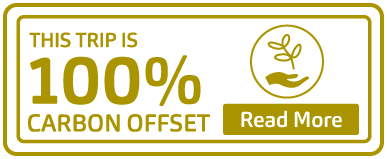
Expand all | Collapse all
Day 1 Arrive Paro.
Meals: L,D
Day 2 Paro Valley, Takstang Monastery (3120m)
Meals: B,L,D
Day 3 Drive past Drukyel Dzong (2580m) to Shana (2860m) and commence trek to Shiring Karup (3100m), (6kms, approx 4 hrs)
Day 4 trek to soi thangthangkha (3620m) (12km, approx 5 hours), day 5 trek to jangothang (4100m) (13.6kms, approx 4/5 hours), day 6 at jangothang (acclimatisation day), day 7 cross nyile la (4890m) to lingshi village (4010m) (15kms, approx 7 hrs), day 8 trek to chebisa village (3880m) (11kms, approx 4-5 hrs), day 9 cross gombu la (4440m) to shomuthang (4221m) camp (12kms, approx 7/8 hrs), day 10 cross jare la (4760m) to robluthang (4140m) (9kms, approx 6/7 hours), day 11 cross sinche la (5005m) to lemithang (4150m) (14kms, approx 7/8 hrs), day 12 trek to laya village (3800m) (11kms, approx 4 hrs), day 13 rest day in laya, day 14 to rodophu (4215m) (18kms, approx. 7/8hrs), day 15 cross tsemo la (4905m) to narethang (4900m) (11kms, approx. 6/7hrs), day 16 cross karakachu la (5165m) to tarina (3880m) (16kms, approx. 8/9hrs), day 17 tarina to green lake (4450m) (14kms, approx 7hrs), day 18 cross keche la (4670m) to chozo (4070m) (20kms, approx 8/9hrs), day 19 rest day in chozo, day 20 to tshochena (4940m) (14kms, approx. 9hrs)via sintia la (5140m), day 21 to jichu dramo (5020m)via loju la (5100m) (10km, approx 5/6hrs), day 22 cross rinchen zoe la (5326m) to chukarpo (4600m) (15km, approx 8/9hrs), day 23 to tampoe tsho (4330m)(15km, approx 6/7hrs), day 24 cross tempe la (4665m) to marothang (3680m) (12km, approx 7/8hrs), day 25 to sephu (2680m) (15km, approx 4/5hrs), drive to punakha (approx. 2 hrs), day 26 drive to paro (6hrs), day 27 in paro, trip concludes.
The map and elevation chart are for illustrative purposes only and meant to provide general guidelines.
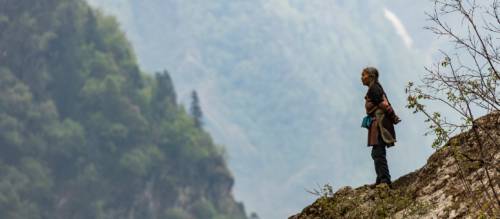
Regenerative Travel Project - Nepal
Provide training to 30 marginalised female farmers to enable them to build sustainable livelihoods
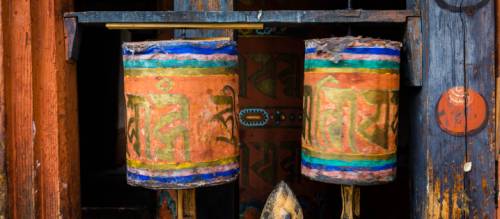
This Trip Is 100% Carbon Offset
By booking this trip you are supporting sustainable projects around the world
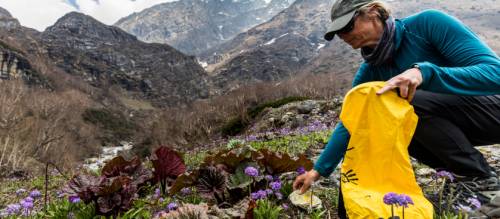
10 Pieces Litter Project
Take only photos … and 10 Pieces of litter, leave only footprints on Bhutan treks
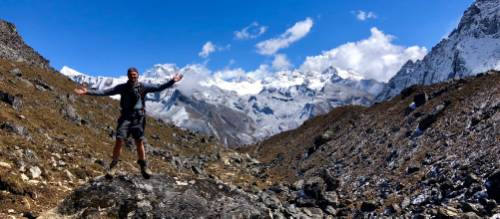
Thoughtful Travel Charter
We are committed to true sustainability by aiming to only leave a small footprint
What's included
- 26 breakfasts, 26 lunches and 26 dinners
- airport transfers on Day 1 and Day 27
- World Expeditions leader
- expert bilingual guide
- group medical kit
- Portable High Altitude Chamber (PAC) & satellite phone
- good quality accommodation in Paro/Thimphu
- souvenir World Expeditions kit bag
- all group camping equipment
- private transportation
- all park entrance fees and trekking permits
- animals to carry 20kgs personal equipment
- sightseeing and site entry fees as listed
- the use of a World Expeditions trek pack which includes a quality sleeping bag, down or fibre fill jacket and insulated mat (valued at over US$500)
- Bhutan Government visa and sustainability fees
What's not included
- International flights and taxes
- Bottled water, aerated and alcoholic drinks
- Items of a personal nature such as phone calls,laundry etc.
- Travel insurance
- Airport and departure taxes
About Your Leader
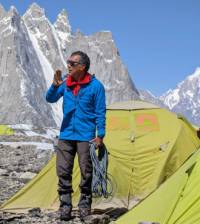
In 2024, our trip will be led by world-renowned British mountaineer, Victor Saunders who became a UIAGM mountain guide in 1996 after a career as an architect in London. Victor was at the forefront of the generation of mountaineers tackling Himalayan summits in Alpine style. His climbing CV includes many celebrated first ascents such as the Golden Pillar of Spantik, Uzum Brak North Face, Kangchuntse West Face, Sersank and many others. Other notable ascents include guiding all the Seven Summits, a winter ascent of North Face of the Eiger, a winter climb of Shield Direct (the first route on Ben Nevis to be graded VI), Great Trango, Cho Oyu and six Everest summits from 2004 to 2012. Victor is a renaissance man whose talents include the literary, his first book, Elusive Summits, won the Boardman Tasker Prize for Mountain Literature in 1990. Returning to Bhutan is of particular significance for Victor as in May 1988 he along with Doug Scott and Sharu Prabhu, undertook the first ascent Jitchu Drake (6970m), a peak we will see up close on this trek. Victor looks forward to sharing stories of the climb with our Snowman trekkers. An insightful, passionate mountaineer whose depth of knowledge is unmatched, trekking with Victor is a rare experience and one to be savoured.
Per Person, Twin Share
Select your dates and book now
The following errors occured:, bhutan snowman trek trip reviews.
Rating: ☆ ☆ ☆ ☆ ☆ ☆ ☆ ☆ ☆ ☆ ☆ ☆ ☆ ☆ ☆ ☆ ☆ ☆ ☆ ☆ ☆ ☆ ☆ ☆ ☆ ☆ ☆ ☆ ☆ ☆
Other Victor Saunders trip reviews
Why travel with us.
Award Winning Adventures
Enhancing your journey with authentic experiences, genuine cultural exchange and real exploration are the focal points on all of our adventures. In 2019, we were crowned by our peers as the best in adventure travel at The Travel Awards in Sydney.
Our vision is to leave the world a better place by following our sustainable active outdoor travel charter . All our adventures are 100% carbon offset and our Regenerative 2030 Project aims to integrate ‘regenerative’ projects into every one of our global operations by 2030.
Ultimate Value
When you book one of our adventures, you will receive quality services at the best prices with plenty of inclusions. There are no hidden costs, single travellers don’t pay more and you’ll enjoy many ‘extra touches’ that ensure your holiday is excellent value for money.
Related Articles
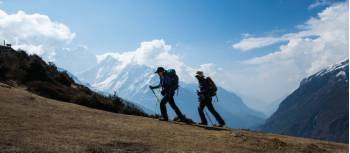
Bhutan Snowman Trek Videos
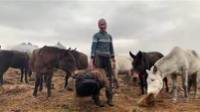
Bhutan Snowman Exploratory Trek with Soren Kruse Ledet
Activities:.
Entry Level Mountaineering or Exploratory Treks
- Cookie Policy
- Strictly Necessary
- Performance
When you visit any web site, it may store or retrieve information on your browser, mostly in the form of cookies. This information might be about you, your preferences, your device or used to make the site work as you expect it to. The information does not usually identify you directly, but it can give you a more personalized web experience. You can choose not to allow some types of cookies. Click on the different category headings to find out more and change our default settings. However, you should know that blocking some types of cookies may impact your experience on the site and the services we are able to offer.
These cookies are necessary for the website to function and cannot be switched off. They are usually only set in response to actions made by you which amount to a request for services, such as setting your privacy preferences, logging in or filling in forms. You can set your browser to block or alert you about these cookies, but some parts of the site will no longer work. These cookies do not store any personally identifiable information.
These cookies allow us to count visits and traffic sources, so we can measure and improve the performance of our site. They help us know which pages are the most and least popular and see how visitors move around the site. All information these cookies collect is aggregated and therefore anonymous. If you do not allow these cookies, we will not know when you have visited our site.
These cookies allow the provision of enhance functionality and personalization, such as videos and live chats. They may be set by us or by third party providers whose services we have added to our pages. If you do not allow these cookies, then some or all of these features may not function properly.
These cookies are set through our site by our advertising partners. They may be used by those companies to build a profile of your interests and show you relevant ads on other sites and promotional activities through our newsletters. They work by uniquely identifying your browser and device. If you do not allow these cookies, you will not experience our targeted advertising across different websites or via newsletters.

Snowman Trek – 27 days
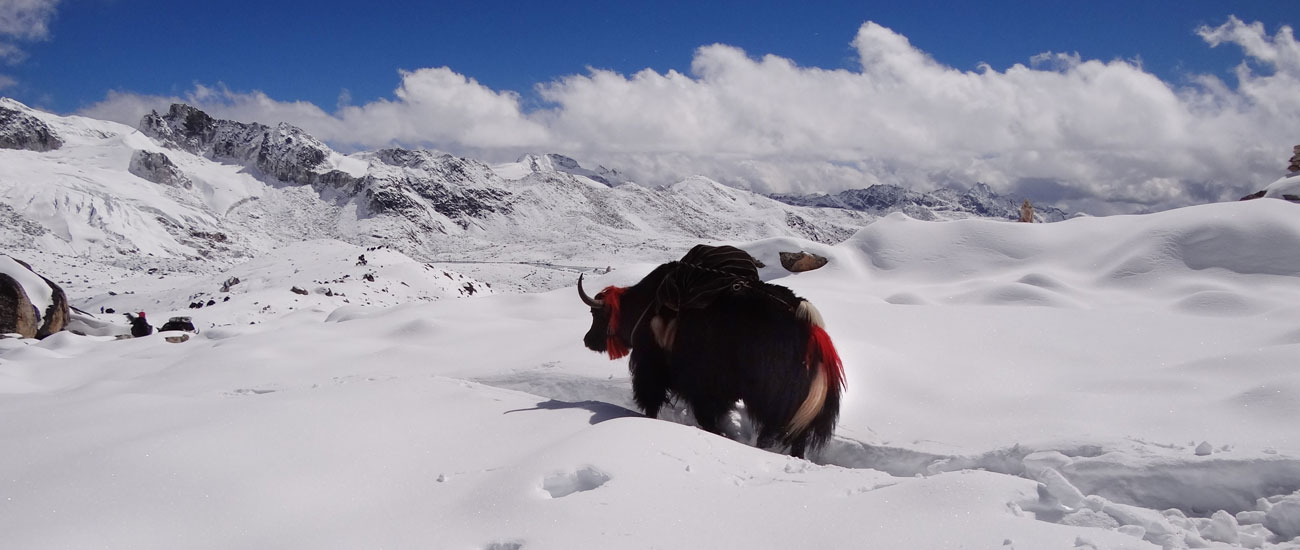
Snowman Trek
Itinerary overview.
DAY 01: ARRIVE PARO, PARO – THIMPHU DAY 02: THIMPHU DAY 03: THIMPHU – PUNAKHA DAY 04: PUNAKHA/TASHITHANG – DAMJI (5-6 hrs) DAY 05: DAMJI – GASA (6-7 hrs) DAY 06: GASA – CHAMSA (6-7 hrs) DAY 07: CHAMSA – LAYA (8-9 hrs) DAY 08: LAYA (Rest Day) DAY 09: LAYA – RHODOPHU (8-9 hrs ) DAY 10: RHODOPHU – TARINA (10-11 hrs) DAY 11: TARINA – WOCHEY (6-7 hrs) DAY 12: WOCHEY – LHEDI (6-7 hrs) DAY 13: LHEDI – THANZA (7-8 hrs) DAY 14: THANZA (Rest Day) DAY 15: THANZA – TSHORIM (8-9 hrs) DAY 16: TSHORIM – G’KAR PUENSUM (6-7 hrs) DAY 17: GANGKAR PUENSUM BASE CAMP DAY 18: G’KAR PUENSUM – GESHE WOMA (6-7 hrs) DAY 19: GESHE WOMA – WARATHANG (8-9 hrs) DAY 20: WARATHANG – DHUR TSHACHU (5 hrs) DAY 21: DHUR TSHACHU – TSHOCHEMCHEM (9 hrs) DAY 22: TSHOCHEMCHEM – BUMTHANG (13 hrs) DAY 23: BUMTHANG DAY 24: BUMTHANG – TRONGSA DAY 25: TRONGSA – PARO DAY 26: PARO DAY 27: DEPART PARO
The Snowman Trek goes to the remote Lunana district and is considered to be one of the most difficult treks in Bhutan. Crossing dozens of high passes, many over 16,000 ft, this tough trek includes challenges of long distances, altitude, difficult weather conditions and remoteness. It however also affords some of the most magnificent views in the Himalayas, and traverses through some unforgettable landscapes.
Season: The Snowman Trek is frequently closed because of snow and is almost impossible during winter. The recommended season for this is mid-June to mid-October. Please note that the Snowman trek is only for the experienced, and due to its nature is only being offered to groups of 5 people or more.
HIGHLIGHTS OF THE SNOWMAN TREK
The Snowman Trek goes to the remote Lunana district and is considered to be one of the most difficult treks in Bhutan. Crossing dozens of high passes, many over 16,000 ft, this tough trek includes challenges of long distances, altitude, difficult weather conditions and remoteness.
- Experience fabulous views of snow-capped mountains such as Mt. Jumolhari and Mt. Jichu Drake.
- Traverse beautiful landscapes from lush valleys and dense forests to high mountain passes.
- Explore the isolated community of Laya and the remote Lunana district.
- Soak in the therapeutic waters of the Gasa Hot Springs.
- Camp overnight beneath some of Bhutan’s most impressive mountain peaks.
- Spend time Marvelling at the ancient wall paintings and carvings in Dzongs and temples.
- Discover some of the most sacred Buddhist monasteries and temples in the Himalaya.
- Visit many cultural attractions including medieval fortresses (Dzongs), markets and museums.
- Hike up to the famous Taktsang Monastery, perched on a cliff 900m above the valley floor.
- Incorporate a Value-Added Option such as a cooking lesson or meditation session with a monk.
To view more information about some of the townships that are featured in this tour, please visit the Township Highlights page .
SNOWMAN TREK DETAILED ITINERARY
DAY 01: ARRIVE PARO The flight to Paro is one of the most spectacular mountain flights in the world, with a constantly changing panorama of some of the highest mountains on earth. After passing through customs, enjoy some lunch before afternoon sightseeing around Paro, including a visit to the Ta Dzong Museum housing many religious relics, works of art and handicrafts. Next, visit the Rimpong Dzong. Dzong’s are large monasteries and district administrative centres, which were once strategic forts. Overnight at your hotel in Paro.
DAY 02: THIMPHU Enjoy a full day of sightseeing, including a visit to the National Memorial Chorten, 12th century Changangkha Temple, the Zilukha Nunnery and Tashichhodzong. If your visit to Thimphu coincides with the weekend, you can walk through the Thimphu Market. Overnight at your hotel in Thimphu.
DAY 03: THIMPHU – PUNAKHA Punakha was the ancient capital of Bhutan. Visit spectacular Punakha Dzong, built in 1637 by the Shabdrung, the ‘Unifier of Bhutan’. After lunch, enjoy a walk to Chimi Lhakhang, temple of Drukpa Kuenly. Overnight at your hotel in Punakha.
DAY 04: PUNAKHA/TASHITHANG – DAMJI 8km, 5-6 hours The trek starts by the riverside, following a well marked path through subtropical forest. There are many wild orchids growing in this rather damp area, but be on the lookout for leeches also! Today’s walk is fairly gentle climb up to Damji village (2,400), where we camp for the night.
DAY 05: DAMJI – GASA 15 km, 6-7 hours The path continues on through subtropical forested area and villages up to Gasa Tshachu (hot spring). The Tshachu is famous for its curative powers, and people come from all over the country to bathe here. After lunch near the spring, we have a climb up to Gasa Dzong (2,900m) where we camp overnight.
DAY 06: GASA – CHAMSA 13km, 6-7 hours After breakfast, we visit the Gasa Dzong. Today’s trek begins with a steep climb up to Bele-La Pass (3,700m) through mixed forests. We then descend for about to our forest camp at chamsa (3,650m).
DAY 07: CHAMSA – LAYA 22 km, 8-9 hours The trail descends to the bank of the Mo Chu. After crossing the river we have lunch by the bridge. From here it is a gradual climb up to Laya (3,800m) passing by an army camp en route. We camp at Laya.
DAY 08: LAYA Rest Day Explore Laya village. You can go and visit one of the local houses. Traditional Bhutanese hospitality is extended even to a stranger, and a cup of tea and chang (alcohol brewed from barley) is always offered.
DAY 09: LAYA – RHODOPHU 19 km, 8-9 hours From Laya we descend to the army camp and continue following the trail along the river till the turn off point for Rhodophu. After lunch we continue climbing upwards through rhododendrons till we reach a hanging valley where there are yaks grazing (4,350m). We camp here by the river.
DAY 10: RHODOPHU – TARINA 25km, 10-11 hours Today’s trek is the longest of the trip and it is important to start early, around 5 am. We first climb up to Tsimo-La Pass (4,700m) where we can enjoy a superb view of Lunana, and the peaks of Chomolhari and Jichu Drake. Following 4 hours of level walking, we climb up to Ganglakarchung-La Pass (5, 080). The view from the pass is breathtaking, encompassing the whole mountain range. After crossing the pass, it is a very long descent to the Tarina valley, where we camp at 3,980m.
DAY 11: TARINA – WOCHEY 17 km, 6-7 hours The path descends through coniferous forest, following the upper reaches of the Pho Chu .The trail then climbs over a ridge and drops to Wochey at 3,800m, the first village since Gasa. Camp at alt 3, 800m.
DAY 12: WOCHEY – LHEDI 17 km, 6-7 hours Today’s trek begins with a walk through mixed forests and further ahead through rhododendron bushes. We climb up to Keche-La Pass (4,480m). We then descend enjoy mountainous views en route. We walk upstream as far as Lhedi village (3,650), where we camp overnight.
DAY 13: LHEDI – THANZA 17 km, 7-8 hours The route continues to follow the river, rising gradually to Choejong village (the biggest village in Lunana) where we stop for lunch. After lunch, we visit the village temple, then walk for some timeto a suspension bridge to cross the river. Soon we reach our campsite at Thanza (4,000m).
DAY 14: THANZA Rest Day A welcome day of leisure, or if you are feeling really energetic, you can climb up to the ridge for yet another splendid view of the mountains.
DAY 15: THANZA – TSHORIM 19 km, 8-9 hours Today’s trek starts with a climb up to the ridge, from where there is a great view of Table Mountain and Thanza valley below. We follow a stream through a small valley, enjoying the view of snowcapped Mountains. We then climb up out of the valley to reach our campsite at Tshorim (5,125m).
DAY 16: TSHORIM – GANGKAR PUENSUM BASE CAMP 16 km, 6-7 hours Today’s Trek is one of the highlights of the Trip. The day starts with a short climb up to Tshorim Lake. We walk around the side of the lake, enjoying a panoramic view of the Gophula Ranges. The final stretch up to Gophu-La Pass (5,230m) is very short. After crossing the pass, we descend to the base camp, walking along the ridge and enjoying a great view of Gangkar Puensum. Climb up a pyramid shaped peak for a better view or you can go directly to the base camp (4,970m) near the Sha Chu.
DAY 17: GANGKAR PUENSUM BASE CAMP Rest day at the base camp, enjoying the great views.
DAY 18: GANGKAR PUENSUM CAMP – GESHE WOMA 14 km, 6-7 hours Today’s trail follows along the Sha Chu and descends to Geshe Woma (4,200m) where we camp.
DAY 19: GESHE WOMA – WARATHANG 18 km, 8-9 hours The path continues along the course of the Sha Chu until the climb to Saka-La Pass (4,800m). Visibility is poor along this part of the trail, so we must keep watching the top of the ridge in order to stay on course. Enjoy stunning views of small lakes spread below towering peaks. We camp at 4,000m.
DAY 20: WARATHANG – DHUR TSHACHU 14 km, 5 hours A short half hour climb take us up to Juli-La (4,400m) before descending to the riverside through dense rhododendron, Juniper and conifer forests. We then cross a bridge and after a short climb reach Dhur Tshachu hot spring, where legend has it that Guru Padmasambhava bathed in the 8th century.
DAY 21: DHUR TSHACHU – TSHOCHEMCHEM 16 km, 8-9 hours From the spring, it is a long and steady climb upwards, with great views of the mountains in Lunana. Eventually the ground levels out, and we see several beautiful deep blue lakes, yaks grazing on the surrounding Pasture, and yak herder’s camp (3,850m).
DAY 22: TSHOCHEMCHEM – DHUR (MOTOR ROAD) – BUMTHANG (JAKAR) 21 km, 13 hours This is the last day of the trek. We must set off very early in order to reach Bumthang before dark. The path follows the Chamkhar Chu, descending gradually with few climbs. The trek ends when we reach Dhur village, where transport will meet us and drive us to the lodge in Bumthang (Jakar). Note: Unless very fit, it is best to spread this final stage over 2 Days.
DAY 23: BUMTHANG Bumthang is the spiritual and cultural heartland of Bhutan. Spend the day exploring the some of Bumthang’s sacred sights including Kurje Lhakhang, home to a rock featuring the imprint of Guru Rimpoche’s body, Jambay Lhakhang (7th century) and Jakar Dzong. Also visit Tamshing Monastery housing some of the oldest wall paintings in Bhutan. Overnight at your guesthouse in Bumthang.
DAY 24: BUMTHANG – TRONGSA The journey to Trongsa takes approximately 3 hours. Trongsa is the ancestral home of Bhutan’s ruling dynasty. After lunch on arrival, visit Trongsa Dzong, a masterpiece of Bhutanese architecture. Trongsa is the largest Dzong in Bhutan and the location of where the institution of monarchy in Bhutan began. Also visit the Ta Dzong located on the hill overlooking the Dzong. Overnight at your hotel in Trongsa.
DAY 25: TRONGSA – PARO After breakfast, depart for Paro. On arrival, enjoy a stroll through the Paro township. Overnight at your hotel in Paro.
DAY 26: PARO After breakfast hike to Taktsang Monastery, walking approximately 1.5 to 2 hours uphill. The view of Taktsang Monastery built on a sheer cliff face 900 metres above the valley floor is spectacular. Afterwards visit other sights in Paro valley. Overnight at your hotel in Paro.
DAY 27: DEPART PARO Breakfast in the hotel, then drive to the airport for flight to your onward destination. Tashi Delek!
TAILOR-DESIGN THE SNOWMAN TREK
We understand that every traveller is different, so we design holidays to suit you. Our consultants are experts in creating the most unique Bhutan tour just for you. Whether you are solo traveller, a couple, group of friends, or a large group, we are here to help you open the doors to your himalayan dream. Use the form below to let us know what you are interested in adding or excluding to customise the Snowman Trek.
Your Name (required)
Your Email (required)
Please NAME the Tour Type you are inquiring about
Please enter your preferred arrival date into Bhutan
Please enter your preferred length of your trip in days
Please enter the number of adult guests travelling (enter number only)
Please enter the number of child guests aged under 18 travelling (enter number only)
Please enter any additional information that may assist us in tailoring your journey to Bhutan specifically to suit your needs. Describe activities, items to be included/avoided, event or milestone you are celebrating on this journey, budget and any other changes you require to this suggested itinerary.
VALUE-ADDED OPTIONS
In addition to offering independent, flexible tour options, Bhutan Travel Bureau can also arrange a variety of “add on” options to provide a more in-depth experience of Bhutan. These include:
- Cooking lessons
- A farmhouse stay
- “Ara” (rice liquor) brewing lessons
- Monastery experience
- Evening dinner & culture show
Alternatively, you can awaken your senses with a range of wellbeing and spa retreats offering yoga, pilates, meditation, healing bodywork, hot stone baths and massage.
These activities can easily be incorporated into any itinerary . Please note that some activities may attract additional fees.
BHUTAN TREK DATES:
All of our Bhutan tours and treks are private, tailor-made journeys for independent travel on dates of your choosing, subject to the trek taking place during the trekking season as identified in the itinerary overview above. We can easily customise your Bhutan tour and trek to spend more in the places doing the activities that you are interested in. Please click on the ‘Tailor-Design this Tour’ tab above to begin customising this tour to your requirements.
WHAT WE INCLUDE IN OUR TAILOR MADE BHUTAN TREKS:
- Bhutan Tourist Tariff Royalty & Visa fees.
- All private excursions and transfers in superior air-conditioned vehicle.
- Local English speaking trekking guide/tour leader.
- Cook and camp hand who will take care of camp chores and provide wholesome meals.
- Services of horsemen who will look after the yaks & ponies that transport luggage and camp gear.
- Experienced driver.
- Accommodation in carefully selected, highest standard government approved hotels & guesthouses.
- All meals in Bhutan.
- All entrance fees and permits.
NOT INCLUDED:
- All personal expenses such as bars, beverages, laundry, telephone and tips.
- Medical / Travel Insurance.
Our guests are checking their bucketlist of hiking to the most iconic and popular Tigers Nest in Bhutan . When are you planning to travel to Bhutan ? For more information Visit our website: https://www.bhutantravelbureau.com ... See More See Less
2 days ago ·
Share on Facebook Share on Twitter Share on Linked In Share by Email
Tourism since 1974 🇧🇹 ... See More See Less
4 days ago ·
We would like to wish our guest from China , wonderful stay in Bhutan. Thank you for choosing us 🙏🏻💐 ... See More See Less
On the 50th Coronation Anniversary of His Majesty the Fourth Druk Gyalpo of Bhutan , we join nation in offering our gratitude and deepest appreciation for His Majesty’s service in shaping Bhutan. Tashi Delek la ✨🙏🏻🇧🇹 LONG LIVE YOUR MAJESTY ... See More See Less
7 days ago ·
1st Flr, BTB Building, Behind NGN, Olakha (2.53 mi) Thimphu, Bhutan 11001.
Contact No: 2 332 105 / +975 17 11 42 22
Email: [email protected]
Web: www.bhutantravelbureau.com


Lunana Snowman
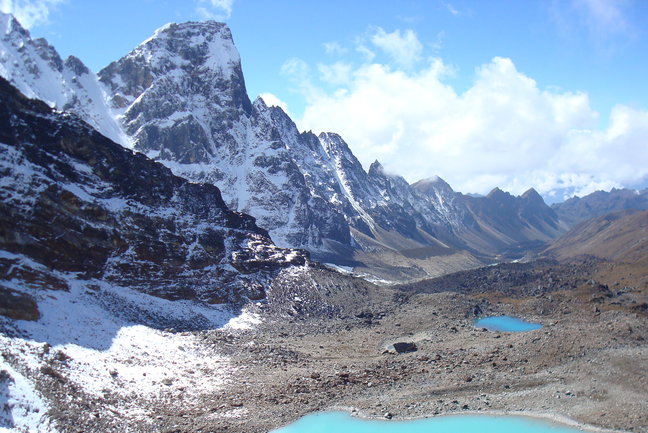
Lunana Snowman Overview
This is a 29 day trek crossing the north of Bhutan along the border with Tibet covering 356km and crossing eight Himalayan mountain passes. Very few westerners have ever visited the remote district of Lunana due to its inaccessibility; one can only get in and out by crossing mountain passes over 5,000m that are frequently blocked by snow. Our itinerary completes the full journey starting in Paro and finishing near Bumthang.
The mountain views throughout this trek are spectacular with many peaks along the Bhutan and Tibet border un-named and un-mapped, you will see several mountains over 7,000m such as Chomolhari and Gangkar Punsum the world’s highest unclimbed mountain. The Lunana Snowman has been described by the Bhutan Trekkers Guide by Cicerone as "one of the most difficult and beautiful of the whole Himalayas.
The Mountain Company has 100% track record of organising Lunana Snowman in Bhutan with our groups having successfully completed this trek on ten previous occasions .
Please enter your username and password to logon to the member pages
By clicking the box above, you agree that a cookie will be placed in your browser to retain your login details Forgotten password?
Tel: +977 1 4531610 , 01-4526721
Email: [email protected]

Nepal Sanctuary Treks
Best Trekking Agency in Nepal
- Annapurna Region
- Everest Region
- Langtang Region
- Other Regions
- Teahouse Lodge Trekking
- School Trekking in Nepal
- Customized Solo Trekking
- Customized Family Trekking
- Comfort Lodge Trekking
- Camping Style Treks
- Most Popular
- Expedition at the apex of Mera Peak
- Island Peak Expedition
- Jungle Safari
- White Water Rafting
- Mountain Flight
- Bird Watching
- Nepal SightSeeing Tour
- Authentic Local Experience
Lumbini Circuit
- Lower Mustang Biking
- Mountain Biking Escapade: The Last Forbidden Kingdom
- Ultimate Off-road Challenge Biking from Kathmandu to Pokhara
- Kathmandu Valley RIM Biking: A cleaner escape from bustling city
- Explore splendid nature and rich culture-Biking Kathmandu-Chitwan-Pokhara

Lunana Snowman Trek
- Trek Overview
Trip Itinerary
- Price Included/Excluded
- Media Gallery
Trip Overview
It is the high altitude, long distances, climate, remoteness, and logistical organization that make this trek so challenging. It is for these reasons that make the Lunana region of Bhutan is one of the least visited areas of the world. This is a 28-day trek through a high alpine country, crossing the north of Bhutan near the border with Tibet. It covers a distance of 356 kilometers, crosses over eight high mountain passes, several of a which are over 5,000 meters, and stays at an average altitude of 4,000 meters. We will see many unnamed and unmapped peaks up to 7,000 m. This is a difficult trek but is a suitable objective for fit hill walkers. Flexibility and patience will be required at times!
Trip Code NSTR266
Day 01: Fly to Paro (2,280m), afternoon sightseeing.
Day 02: morning walk to taktsang monastery (tiger’s nest), day 03: trek to shana (2,790m)- 5 hours walking., day 04: trek to soi thangthanka (3,510m)- 6 to 7 hours walking., day 05: trek to jangothang (4,080m)- 5 to 6 hours walking., day 06: acclimatisation day at jangothang (4,080m)., day 07: trek to lingshi (4,150m) crossing nyile la (4,890m)- 6 hours walking., day 08: trek to chebisa (3,850m)- 4 hours walking., day 09: trek to shomuthang (3,950m) crossing gombu la (4,400m)- 5 to 6 hours walking., day 10: trek to robulathang (4,410m) crossing jhare la (4,780m)- 7 hours walking., day 11: trek to limithang (4,160m) crossing the shinge la (5,000m)., day 12: trek to laya (3,700m)- 4 to 5 hours walking., day 13: rest day., day 14: trek to rodophu (4,120m)- 6 to 7 hours walking., day 15: trek to narethang (4,900m) crossing tsema la (4,905m)- 6 hours walking., day 16: trek to tarina (5,080m) crossing the karchung la (5,240m)- 7 to 8 hours walking., day 17: trek to woche (3,810m)., day 18: trek to lhedi (3,700m) crossing keshe la (4,435m)- 6 to 7 hours walking., day 19: trek to thanza (3,970m)., day 20: rest day., day 21: trek to before danje (4,540m)- 4 hours walking., day 22: trek to tshorim lake camp (5,250m)- 6 hours walking., day 23: trek over gophu la (5,240m) and to geche woma (4,450m)- 6 hours walking., day 24: trek to mischugang (4,200m) at base of phorang la- 4 hours walking., day 25: trek to worithang (4,400m) crossing phorang la (4,650m) and saga la (4,820m)- 6 hours walking., day 26: trek to dur tsachu (3,200m) crossing nephu la (4,560m)- 4 hours walking., day 27: trek to tso chenchen (3,850m) crossing gongto la (4,327m) and djule la (4,551m)- 7 to 8 hours walking., day 28: trek to gorsum (2,680m)- 5 to 6 hours walking., day 29: contingency day or extra rest day., day 30: trek to minchugang then drive to bumthang- 3 hours walking and 40 minutes driving., day 31: drive to wangdiphodrang- 8 hours driving., day 32: drive to thimphu- 4 hours driving., day 33: sightseeing in thimphu., day 34: transfer to airport and fly back kathmandu/dhaka/bangkok/calcutta..
*If you email us, please understand that it may take up to 24 hours to respond during our busiest times of the year.
Travel Guide
- Physical Fitness
- Meals and Accommodation
- Altitude Sickness
- Trekking Essentials and Communication
- Best Time To Visit Nepal
- Trekking Grades
- Nepal visa and General info
- Terms and Conditions
Similar Tours
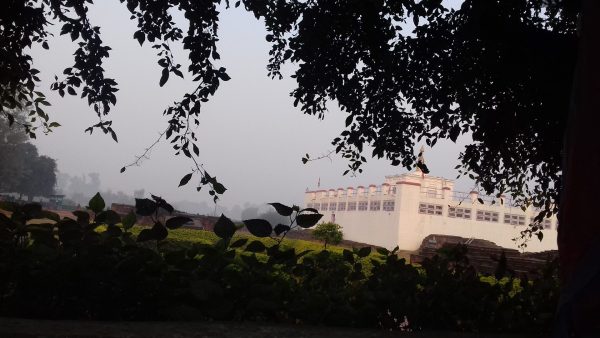
Dzongri Trek (Sikkim)

Western Bhutan With Sikkim
Ask our travel expert.

Tulsi Gyawali
Request for trip dossier, trip dossier.
- Full Name *
Affiliations & Recommendations

Call Toll Free | 1-800-563-8735
- Pakistan/China
- South America
- Special Trips
- Reservations
- Our Philosophy
- Testimonials
Snowman Trek
Watch: Bhutan Journey
This spectacular 30-day adventure in Bhutan begins with the 25-day Snowman trek into one of the country’s most remote valleys. This is probably one of the hardest high altitude treks, but an incredible experience for anyone who takes the challenge. Bhutan’s pristine landscape, wonderful people and fascinating Buddhist culture provide the ingredients for a memorable journey into one of the world’s most remote kingdoms.
After a strenuous but tremendously rewarding 25 days of trekking we will turn our attention to learning more about Bhutan’s cultural heritage and Buddhist traditions as we return by road across the middle of Bhutan, known as the Inner Himalaya, visiting Punakha, and Thimphu, before returning to Paro for our final night.
www.youtube.com/watch?v=1GMD71fcwIA
Photo Collection 2017 – Photo Collection 2019
Steve Fagan made a beautiful movie / slide show of images and videos he took on his Snowman Trek in Bhutan with us in 2023: stevefagan.com/photo-stories
Detailed Itinerary
Arrive Paro Bhutan by Druk Air
Day Hike to Taktsang Monastery
Drive to Army Camp, trek to Pine Camp | Distance: 9km - 4 hours
Pine Camp to Thangkthanka | Distance: 18km - 6 to 7 hours
Thangthanka to Jangothang | Distance: 19km - 5 to 6 hours
Rest day in Jangothang (Chomolhari Base Camp)
Jangothang to Lingshi | Distance: 20km - 6 to 7 hours
Lingshi to Chebisa | Distance: 14km - 4 to 5 hours
Chebisa to Shakshepasa | Distance: 13km - 4 hours
Shakshepasa to Robluthang | Distance: 18km - 7 to 8 hours
Robluthang to Limithang | Distance: 19km - 7 to 8 hours
Limithang to Laya | Distance: 10km - 4 to 5 hours
Rest day in Laya
Laya to Rodufu | Distance: 19km - 6 to 7 hours
Rodufu to Narethang | Distance: 16km - 8 to 9 hours
Narethang to Tarina | Distance 18km - 6 to 7 hours
Tarina to Woche | Distance: 15km - 5 to 6 hours
Woche to Lhedi | Distance: 19km - 7 to 8 hours
Lhedi to Thanza | Distance: 19km - 6 to 7 hours
Rest Day In Thanza, 4080m (13,300 ft)
Thanza to Danji | Distance: 8km - 4 hours
Danji to Tso Chena | Distance: 12km - 5 hours
Tso Chena to Jichu Dramo | Distance: 14km - 4 to 5 hours
Jichu Dramo to Chukarpo | Distance: 18km - 6 to 7 hours
Chukarpo to Thampe Tso | Distance: 18km - 5 to 6 hours
Thampe Tso to Maurothang | Distance: 14km - 5 hours
Maurothang to Upper Sephu - Drive to Punakha | Distance: 17km - 5 hours
Drive Punakha to Thimphu
Drive Thimphu to Paro
Depart Paro for home
A Snowman Trekker's Photo Book (2011): Photo Collection 2011
A Snowman Trekker's Photo Book (2009): Photo Collection 2009
A Snowman Trekker's Photo Book (2007): Photo Collection 2007
PLEASE NOTE: On adventure trips of this type, weather, local politics, transport or a multitude of other factors beyond our control can result in a change of itinerary. It is, however, very unlikely that the itinerary would be substantially altered; if alterations are necessary, the leader will decide what is the best alternative taking into consideration the best interests of the whole group. Where a change does occur, we do everything we can to minimize its effect, but we cannot be responsible for the results of changes or delays.
Length: 30 days total. 25 day trek.
Max. Altitude: 17,320ft / 5280m
Begins / Ends in Paro on dates below. We advise Bangkok as the gateway city.
Land Cost: $9,875 USD (Per person - based on 2 participants sharing. Limited space/Drukair seats)
International Airfare: Apx. $1900 USD from most cities.
May 25 - Jun 23 ’23 Sep 24 – Oct 24 ’23* *Thimphu Tschechu
May 23 - Jun 21 ’24 Sep 22 – Oct 21 ’24
You can also contact Canadian Himalayan Expeditions directly for more information.
National Geographic
Read about our Bhutan Snowman Trek , featured in National Geographic Adventure Magazine
See New Snowman Trek Video!
Ask an Expert
- Destinations
- Information Centre
- Client Login
- Book a Free Consultation

- Trip Calendar
- Why The Mountain Company?
- Our Operations
- Responsible Tourism
- Risk Assessment and BS8848
- Testimonial and Awards
- The Himalaya
+44 (0)1647 433880
Lunana Snowman - Is it the hardest trek in the world?

We are in Bhutan October 2019 to hike what has been described by many, including the Cicerone Bhutan Trekkers Guide as "one of the most difficult and beautiful of the whole Himalayas’ - The Lunana Snowman Trek . There is no set definition of a challenging trek, it is quite subjective and depends on factors such as length, weather issues, altitude, food, logistics, physical and mental demands, remoteness and technical considerations. These are a few but by no means all points to consider when thinking about how difficult the Snowman Trek is. There are variations of the Snowman, but the full trek starts in Paro and ends in Bumthang, crossing 14 high altitude passes with close to 15,000 metres of ascent over 28 days and almost 300km. It seems a daunting prospect and many groups who undertake it are unsuccessful.
Before arriving in Bhutan, it is necessary to consider the first challenge - the weather window for trekking is small. The length and nature of this trek means that timing is paramount and it’s successful completion is very much dependent on good weather. In Autumn, if one leaves too early, the rains are likely to pour, the rivers flood and trails turn to mud. If one leaves to late the snows will have fallen and the passes closed for the winter. Add to this the changing weather patterns throughout the world causing greater unpredictability where certainty used to reign, presents a real challenge with regards to choosing the best dates. Luckily The Mountain Company has successfully run this trek 11 times and therefore has a lot of experience selecting the right dates.

Landing in Paro - Bhutan's only international airport, is exciting in itself. Considered one of the worlds most challenging, only 17 pilots are qualified to land there. The runway is out of sight to the pilot until the very last minute, and the approach requires sinuous maneuvering between mountaintains with towering peaks up to 5,500m. If the views aren’t enough for you, the final 45° angle and swift descent onto the runway should do it. No wonder they don’t fly at night or when the weather is bad.
New roads in many countries are changing and often shortening the nature of trekking and although new roads are slowly creeping north in Bhutan, they have not yet cut into the remote environment of this trek. It is however possible to start the trek from Shana on a road which will in the future creap further up this first valley of the trek. However, at present it is a 2 day walk to Chomolhari Base Camp at 4000m which is a rapid ascent to this altitude and if not fully prepared it can result in serious issues of altitude sickness. As safety was the prime concern for our group on this trek, we didn’t disembark the plane on arrival in Bhutan and walk the next day. Instead we spent a day at the infamous Tiger's Nest monastery which gave us the opportunity to stretch out legs and walk to an altitude of just over 3000m. After that we drove over the Chele La (3780m) to the Haa valley where we spent 2 nights. On our day in Haa we walked at around 3000m visiting monasteries and adjusting our bodies to the thinner air. These extra days also allowed the group - from Australia, USA, New Zealand, UK and Hong Kong, to shake off their jet lag and become a team working on the same time zone.

Having allowed time to acclimatise the team avoided any altitude issues and after a day acclimatising further at Chomolhari Base Camp made their way over to the settlement of Laya. This walk takes 6 days and crosses 4 passes between 4,400m-5,000m in altitude.
We are now 10 days into the trek. Plenty of time to get into the daily routine of camp life. Routine is a key feature of these long treks and meals tend to punctuate this routine. Breakfast, lunch and dinner happen at similar times each day and are served in the mess tent (except lunch on the move). Packing and unpacking the tent each day become a rhythm of life which we either take gentle solace in or we struggle through. And the walking becomes the meaning of life. We walk, we dream, we admire the views. We slowly make our way up towards the passes or down the other side. The contrast between the passes and valleys provide the diversity in trails, awe inspiring views, and enough challenge to tire our bodies and put us to sleep at night.
The advantages of trekking in Bhutan are many. Getting away from the tour groups visiting the same places in buses; getting to know the crew and guides and finding out about the home and families; obtaining a greater insight into the Bhutanese way of life at remote villages. Laya is a beautiful small town and the largest settlement we come across on the trek. It is inhabited by the indigenous Layaps who wear a distinctive conical bamboo hat balanced on the top of their heads, held in place with decoration around the nape of their neck. This rest day is a much needed day of relaxation, showering, washing clothes and shopping for goods (in one of the 3 hole-in-the-wall shops in town).

The day in Laya is essential for logistical purposes as it’s our last chance to resupply stores, which then need sorting and organising by the crew. Good nutrition on a trek this long and remote can be complex to organise with protein and fresh good hard to come by. Luckily we brought dehydrated chicken from the UK and vegetables dehydrated locally for when the fresh good run out.
Laya is also a good place to change pack animals for fresh ones. One of the reasons for the low success rate of the trek by some is due to these logistical challenges especially with pack animals, specifically yaks as these are used to collect the famous yartsa gumbu caterpillar fungus. At this time of year they are also used for shopping trips for the villagers to stock up for winter supplies. Mules are far more common these days but must be well cared for on the trail. For these reasons, planning and reserving the change of pack animals advance is essential to the success of any trek.
Laya is strategically important as it is the best location to exit the trek, being where the Half Snowman known as Laya Gasa trek heads south and finishes, which for many is the end of a demanding and rewarding trek in itself. If you have comfortably adapted to the journey and are not facing physical or mental challenges of your own, the thought of a car, shower, bed, internet, just a days walk away will not make you waver from your objective. However the temptation of reaching civilisation can be too great for some and this is a common exit point.

For those that choose to continue the full Snowman, the trail heads East, hopefully leaving behind the last of the monsoon and walking towards the clearer but cooler skies of winter. The monsoon not only brings the rains but shrouds the mountain views in cloud adding a supplemental challenge to the long hard passes.
The pass into Lunana, at a height of 5240m isn’t far away and affords breathtaking views in every direction. The remoteness of the region makes one stop and think. The exit passes are blocked by snow for months on end through the winter and the villages stock up on essential supplies in the Autumn so that they can survive the long period of enforced isolation. Although traditionally, these shopping trips use yaks or mules to transport the supplies, some of those locally with more resources have in recent years begun to use a helicopter service. This has been made possible thanks to the profitable business of collecting yartsa gumbu. Stepping in to this remote area where there is no phone signal and the only exit is over multiple high passes, the next challenge presents itself. What happens if something goes wrong? How do you react in an emergency? Up until 4 years ago there were no helicopters stationed in Bhutan and any rescues relied on Indian Army flying in from Bagdogra in India. This was time consuming and unreliable so Snowman had even more of an out there feeling compared to Nepal where there are many commercial heli operators. Now Bhutan reassuringly has two helicopters for emergency evacuations.

These combined with a satellite phone which is essential for any remote trek like Snowman, can help in an emergency situation and the only way to make contact with the helicopter service. It is worth remembering however that helicopters can’t fly in cloudy or bad weather and they can only land in certain locations. In Bhutan they don’t take off from Paro after 3pm. Even with a functioning satellite phone and helicopters on standby, it might still take a while before an evacuation can be affected.
Trekking for this long can have a strange effect on you. Two weeks into the trek my mind turned towards the goal of the end. However, it was so far out of sight that I had lost track of the time and had to count the days left. Knowing that we had been away for so long but the end was not yet in sight can be daunting for some, but knowing you have a supportive team with you makes all the difference.
Having trekked through Lunana and over the exit pass we might be fooled into thinking the hardest part is behind us. However the crux pass of the Saga La is one of a 3 pass day. The steep ascent on a trailess slope takes us up to the Phorang La, visible from the previous camp. From there the we traverse and climb until we can see the Saga La. If the conditions are not favourable, the pack animals will struggle to get over the pass and a retreat will be necessary. Finally, a small and easy pass takes us to our camp. All in all, if the stars align this is a challenging but rewarding day with changing views as we progress south. Given some of the challenges with trail junctions, river crossings, disappearing paths and false passes it is essential to find guides with experience and knowledge of the trail. Luckily our guide Dorji has led the trek 10 times and is one of the most experienced around.

The end is in sight and a pleasant relax in the hot springs at Dur Tsachu revives everyone before the final big pass day and descent to the road. From the hot springs it is just 3 days back to civilisation and the comforts we have been dreaming of.
Having trekked extensively in Pakistan and the Nepal Himalaya I can confirm that the Lunana Snowman is it certainly one of the most difficult treks in the himalayas, however I would not consider it THE most difficult. There are two other treks which come to mind as more difficult than the Snowman. Kanchenjunga to Makalu GHT in Nepal crossing the Lumba Sumba is technically similar to the Snowman but more remote and longer. Makalu to Everest GHT in Nepal is also a very challenging trek crossing the Sherpani Col and Aphu Lapsa which are more technical and at a higher altitude. The common theme of all three of these treks is that they are part of the Great Himalaya Trail - a trail planned to pass through India, Nepal, Bhutan and Tibet. The continuous trail is still a concept but much of the individual sections a reality. If this is ever realised it really will be the most difficult trek in the world.
So is it worth it? On clear days, the crisp ground and the vibrant blue skies reveal snow capped mountains and breathtaking views into the far distance. The waterfalls cascade through the ravines as we descend from the passes into rivers which snake through each and every valley. The altitude of the treeline changes in each area and the forests glow with autumn colours. The villages are remote and authentic, unchanged for centuries, beautifully decorated and full of life. Schools are welcoming to visitors and people are friendly. And finally, if that isn’t enough the reward of knowing that you have had the mental and physical strength to complete the trek - whether the hardest or not - should do it. Just make sure you go with a company who can organise the parts you can’t control. Jo Clark | Trek leader and Operations Manager 2018 to 2019 The Mountain Company
Cookie Policy
We use cookies to ensure that we give you the best experience on our website. If you continue to use this site we will assume that you are happy with this.
- Africa & the Middle East
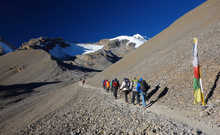
- The Snowman Trek
- Kandoo Trekking
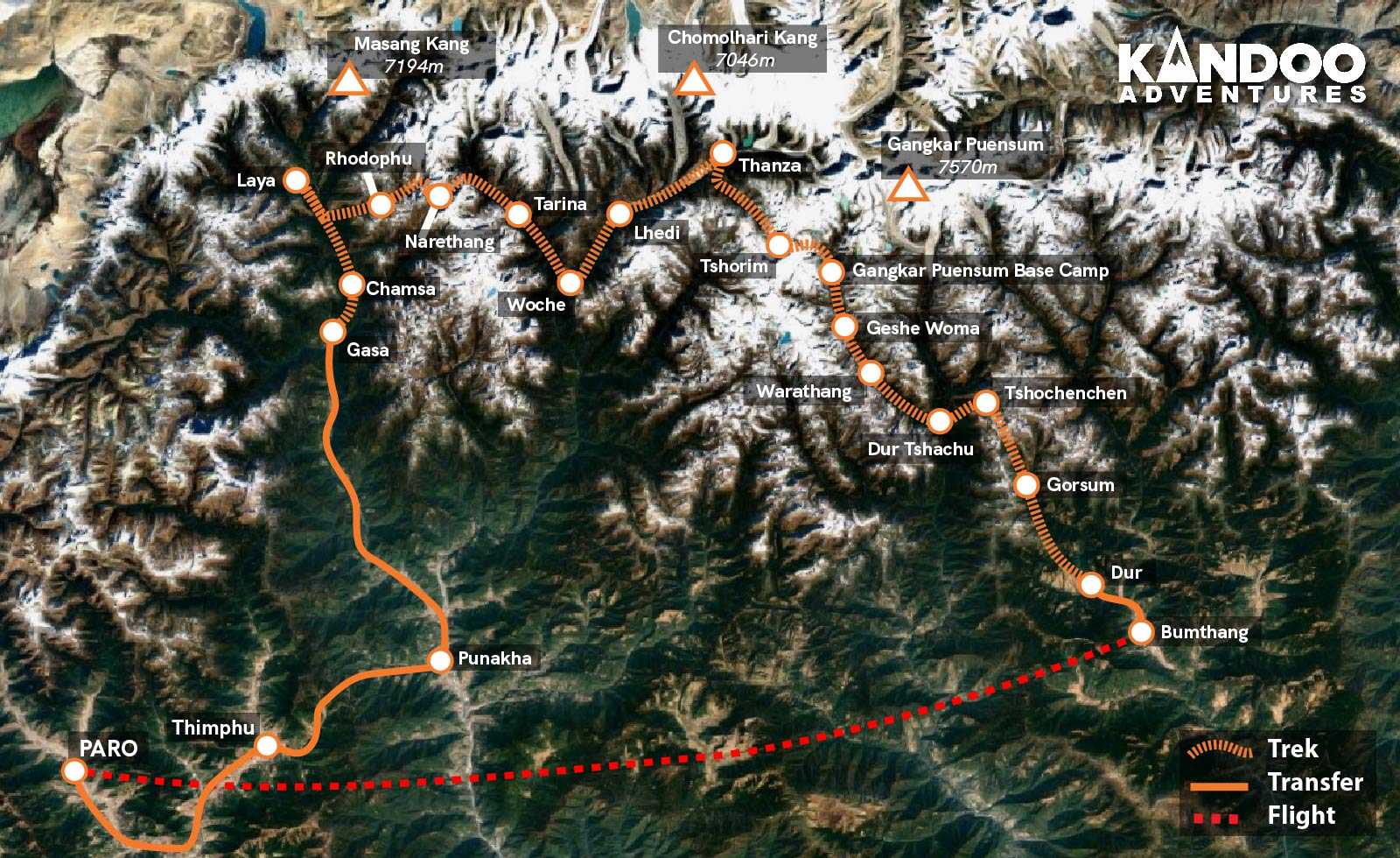
Contact our UK team
Our local team
Kandoo's view, trip highlights.
- Visit the breath-taking Tiger's Nest Monastery
- Trek through the remote Lunana region
- Be immersed in the culture of this ancient Himalayan kingdom
Experiences
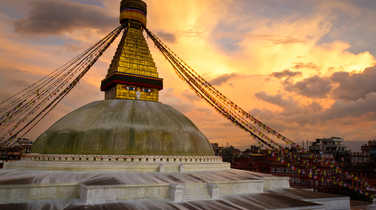
The flight to Paro on a clear day is one of the most spectacular of all mountain flights. One can see Mt. Everest, Kanchenjunga, Makalu and other peaks in Bhutan such as Chomolhari, Jichu Drake and Tsering Ghang. The Kandoo team will meet you at the airport and transfer you to Thimphu, the capital city of Bhutan. The journey takes around 2 hours and leads through the Paro valley to the confluence of the Paro and Thimphu rivers at Chuzom. If time permits we will visit the King's Memorial Chorten, continuously circumambulated by people, murmuring mantras and spinning their prayer wheels. Construction of this landmark was the idea of Bhutan’s third king, His Majesty Jigme Dorji Wangchuk (“the father of modern Bhutan”). Completed in 1974 after his untimely death, it serves both as a memorial to the late King and as a monument to peace. Later you will attend a pre-trek briefing with your Lead Guide to prepare you for the challenge ahead. We will spend the night at a hotel in Thimphu.
- Accomodation: Hotel
- Meals included: Lunch / Dinner
TOUR OF THIMPHU – DRIVE TO PUNAKHA
Today we will take a tour of Bhutan’s capital city. We begin with a visit to the National Library, which holds a vast collection of ancient Buddhist texts and manuscripts, some dating back several hundred years, as well as modern academic books on Himalayan culture and religion. Next we will visit the nearby Institute for Zorig Chusum, commonly known as the Arts & Crafts School. The Institute offers a six-year course on the 13 traditional arts and crafts of Bhutan and during the visit, we can see students learning the various skills taught at the school. We then take a drive towards city centre to visit the Textile museum and Folk Heritage Museum. These museums, both of which opened in 2001, provide fascinating insights into Bhutanese material culture and way of life. (Please note both the National Library and the Institute for Zorig Chusum are closed at weekends and government holidays, and the Textile Museum is closed on Sundays and government holidays). We finish our tour with a sightseeing visit to Trashichhoe Dzong, “the fortress of the glorious religion”. This impressive monastery and fortress has housed the seat of Bhutan's government since 1968, the throne room of His Majesty the King and various government offices. It is also the summer residence of the Chief Abbot and central monk body. Later in the afternoon we will drive to Punakha via the Dochu La Pass (3,088m), through magnificent forests of rhododendron and magnolia. From the pass, there is a far-reaching view of the eastern Himalayan peaks and the Lunana trekking route.
- Ascent: 738 m
- Descent: 1488 m
- Max. altitude: 3088 m
- Meals included: Breakfast / Lunch / Dinner
TOUR OF PUNAKHA – DRIVE TO GASA
This morning we will take a guided tour of Punakha Dzong, the second largest dzong in Bhutan. Built strategically at the junction of the Pho Chhu and Mo Chhu rivers in 1637 by Shabdrung Ngawang Namgyal, it serves as the religious and administrative centre of the region. After lunch, we will drive up the valley, following the Mo Chhu river to the village of Gasa Tshachu, famous for the curative powers of its hot springs. We will camp overnight here.
- Ascent: 970 m
- Max. altitude: 2570 m
- Accomodation: Camping
GASA TO CHAMSA
This morning we start our trek climbing up through thick sub-tropical forest to the village of Chamsa.
- Hiking time: 4 - 5 hours
- Ascent: 330 m
- Max. altitude: 2900 m
CHAMSA TO LAYA
The trail descends to the bank of the Mo Chhu river. After crossing the river, we have lunch by the bridge. From here it is a gradual climb up to Laya, passing by an army camp en route, to our overnight campsite. The Laya people are very friendly and will happily pose for photographs with you in their native dress.
- Hiking time: 7 - 8 hours
- Ascent: 940 m
- Max. altitude: 3840 m
LAYA TO RHODOPHU
From Laya, we descend, passing by the army camp once again and continuing to follow the river. After lunch, we continue climbing upwards through rhododendrons until we reach a hanging valley where there are often yaks grazing. We will camp here by the river.
- Hiking time: 8 - 9 hours
- Ascent: 510 m
- Max. altitude: 4350 m
ACCLIMATISATION DAY IN RHODOPHU
Today we will take a hike up to a higher altitude to help our acclimatisation for our big push tomorrow over the mountain passes. We will also take time to rest and prepare ourselves for our ascent above 5000 metres over the next couple of days.
RHODOPHU TO NARETHANG
Today we climb up to Tsimola La Pass (4,700m). After crossing the pass and summit we will have superb views of Lunana and the peaks of Mt. Chomolhari and Mt. Jichu Drake. We continue to ascend up to 4900 metres to Narethang where we will camp for the night. Tomorrow morning we will start our climb up to Ganglakarchung La Pass; at 5100 metres this will be the highest point of our trek so far.
- Hiking time: 6 - 7 hours
- Ascent: 550 m
- Max. altitude: 4900 m
NARETHANG TO TARINA VIA GANGLAKARCHUNG LA PASS
We will walk over fairly level ground before starting the climb up to Ganglakarchung La Pass (5,100m). The view from the trail is breath-taking, a panorama of mountain peaks rising over 7000 metres, including Masagang and Tsendegang. This is arguably one of Bhutan's most stunning mountain viewpoints so make sure you have your camera at the ready. After crossing the pass we start our long descent down to the Tarina valley and much welcome lower altitudes.
- Ascent: 200 m
- Descent: 1120 m
- Max. altitude: 5100 m
TARINA TO WOCHE
The path descends through coniferous forests, following the upper reaches of the Pho Chhu river. The trail then climbs over a ridge and drops to Woche at 3,800m, the first village of Lunana.
- Descent: 180 m
- Max. altitude: 3980 m
WOCHE TO LHEDI VIA KECHE LA PASS
Today’s trek begins with a walk through juniper and fir forests and further ahead through rhododendron bushes. We climb up to the Keche La Pass (4,480m) and pause to enjoy the wonderful mountain views. After the pass, we descend to a river, with stunning views of Table Mountain and other peaks en route. We walk upstream along this river, which is one of the main tributaries of the Pho Chhu river, as far as Lhedi village, where we camp overnight.
- Ascent: 680 m
- Descent: 830 m
- Max. altitude: 4480 m
LHEDI TO THANZA
The route continues to follow the river, rising gradually to Choejong village (the largest village in Lunana) where we stop for lunch. After lunch, we visit the village temple before continuing on our trek until we meet the river again, which we cross by a suspension bridge. Soon we reach our campsite at Thanza, the second largest village in Lunana.
- Ascent: 350 m
- Max. altitude: 4000 m

ACCLIMATISATION DAY IN THANZA
A welcome day of leisure, for relaxing, reading, catching up with the washing, or just strolling around. If you are feeling really energetic, you can climb up to the ridge for yet another splendid view of the mountains.
THANZA TO TSHORIM
Today our trek starts with a climb up to the ridge, from where there is a great view of Table Mountain and Thanza valley below. We cross the ridge, and enter a small valley with a stream running through it. We continue to follow the stream up the valley, enjoying the view of snow-capped mountains, and have lunch near a crossing point. We then climb up out of the valley, crossing some small ridges to reach our campsite at Tshorim.
- Ascent: 1125 m
- Max. altitude: 5125 m
TSHORIM TO GANGKAR PUENSUM BASE CAMP VIA GUPHO LA PASS
Today’s trek is one of the highlights of the trip. The day starts with a short climb up to the Tshorim Lake. We walk around the side of the lake, enjoying the panoramic view of Guphola ranges before climbing up to the final stretch, the Gupho La Pass (5,230m) which is very short. After crossing the pass, we descend to the base camp, walking along the ridge and enjoying a great view of Gangkar Puensum. Depending on how you are feeling, we can detour left and climb up a pyramid shaped peak for a better view, or we can go directly to Base Camp (4,970m) near the Sha Chhu river, where we will set up the camp.
- Ascent: 105 m
- Descent: 260 m
- Max. altitude: 5230 m
GANGKAR PUENSUM BASE CAMP TO GESHE WOMA
The trek continues to follow the Sha Chhu river, descending gradually to Geshe Woma where we camp for the night.
- Descent: 770 m
- Max. altitude: 4970 m
GESHE WOMA TO WARATHANG VIA SAKA LA PASS
The path continues along the course of the Sha Chhu river for two and half hours until we begin the stiff climb to Saka La. We stop for lunch near a yak herder’s camp, then climb up to Saka La Pass (4,800m). We can take in the stunning views on the descent to the lakes before another short ascent takes us across the Warathang La Pass (4,590m). The scenery once again is stunning. We finally descend once more to our campsite at Warathang.
- Ascent: 600 m
- Descent: 800 m
- Max. altitude: 4800 m
WARASTHANG TO DUR TSHACHU VIA ULI LA PASS
A short half-hour climb takes us up to Uli La Pass (4,400m). After crossing the pass we descend to the riverside through dense rhododendron, juniper and conifer forests. We then cross a bridge and after a short climb reach the hot springs at Dur Tshachu, where legend has it that Guru Padsambhava bathed in the 8th century.
- Hiking time: 5 - 6 hours
- Ascent: 400 m
- Descent: 450 m
- Max. altitude: 4400 m
DUR TSHACHU TO TSHOCHENCHEN VIA JULE LA PASS
From the spring, it is a long and steady climb blessed with great views of the mountains of Lunana. First we cross the Gokthong La Pass (4,650m) before descending to several beautiful deep blue lakes at 4220m, with yaks grazing on the surrounding pastures, and yak herders’ camp. We then ascend the second pass, Jule La Pass (4,700m), before our final descent to our camp at Tshochenchen.
- Ascent: 750 m
- Descent: 850 m
- Max. altitude: 4700 m
TSHOCHENCHEN TO GORSUM
We trek downhill from Tshochenchen, following the Yoleng Chhu river through thick forests of cypress, spruce, juniper, maple and hemlock. A short climb brings us to our campsite at Gorsum.
- Hiking time: 9 - 10 hours
- Descent: 660 m
- Max. altitude: 3850 m
GORSUM TO DUR – DRIVE TO BUMTHANG
This is the last day of the trek where we change from yaks to pack ponies. We have to set off early in order to reach Bumthang before dark. The path follows the Chamkhar Chhu river, descending gradually with few climbs. The trek ends when we reach the village of Dur. From here, transport will pick us up and drive us to our lodge in Bumthang.
- Descent: 540 m
- Max. altitude: 3190 m
- Accomodation: Lodge
TOUR OF BUMTHANG
The Bumthang valley is the cultural heartland of the nation. The hills around the valley are filled with monasteries dedicated to Guru Padsambhava. The valley is also the ancestral home of the great Buddhist teacher, Pema Linga, from whose descendants the present monarchy traces its origin. We spend time exploring the valley, visiting Jakar Dzong, Kurje Lhakhang, Jambey Lhakhang and Tamshing Lhakhang, before returning to our lodge for the night.
FLY FROM BUMTHANG TO PARO
Today we fly from Bumthang to Paro. We will have free time today to rest and relax at our hotel.
- Max. altitude: 2650 m
EXCURSION TO TAKTSHANG LHAKHANG
In the morning we will take an excursion to Taktshang Lhakhang, commonly known as 'The Tiger’s Nest Monastery'. Undoubtedly one of the most famous of Bhutan’s monasteries, the Taktshang monastery is one of the most breath-taking temples in the world. This Buddhist place of worship is perched on a cliff-top at around 3,100m above sea level. The main temple complex was built in 1692, and is considered to be one of the holiest for the Bhutanese people. Legend has it that Guru Rinpoche, an 8th-century Indian Buddhist master, arrived here on the back of a tigress and meditated at this monastery, thus the name ‘Tiger’s Nest’. The site has been recognized as a sacred place and is now visited by all Bhutanese at least once in their lifetime. On 19 April, 1998, a fire severely damaged the main structure of building but now this Bhutanese jewel has been restored to its original splendour. After lunch we will visit the 7th century Kyichu Lhakhang, one of the 108 temples built in the Himalayas by Tibetan King, Songtsen Gampo. The building of this temple marks the introduction of Buddhism to Bhutan. We will then drive to Drukgyel Dzong, a ruined fortress where Bhutanese warriors fought Tibetan invaders centuries ago. In the early 1950s, Drukgyel Dzong was almost completely destroyed by fire. It is now listed in Bhutan's Tentative List for UNESCO inclusion. In 2016, the Prime Minister Lyonchen Tshering Tobgay, announced that the Dzong will be rebuilt and reinstated to its former glory. The snowy dome of sacred Chomolhari (7326m), ‘the Bride of Kangchenjunga', can be seen in all her glory from the approach road to the Dzong. After our tours we will return to our hotel in Paro.
We will collect you from your hotel and transfer you to Paro Airport for your flight.
- Meals included: Breakfast
Trip information
Formalities & health, equipment & clothing.
Apart from climbing Aconcagua, this is the toughest trip Kandoo operates. It regularly wins the title of the toughest trek in the world . To give you an idea of how tough it is, there are more Everest summiteers each year than trekkers who complete the Snowman trail. Three things combine to make this an awesome challenge. It is a long trip : 18 days of walking every day is very hard on the body. Staying well by eating properly and staying fully hydrated is critical. Second, although you will be walking not climbing, the paths are very difficult. Finally to add to the difficulty, it crosses eleven passes over 4500m and you are above 4000m for nearly the whole of the trek.
Food & drink
In addition to the drinking water we provide on the trek, we will also provide drinking water during your cultural tours. To reduce the use of plastic bottles, we would ask that you bring a re-usable drinks bottle that we can fill for you. If you are planning on using a hydration bag for the trek, this may not be comfortable to use around town, so we recommend you bring a smaller drinks bottle as well.
Accommodation
Kandoo use good quality, spacious tents to ensure you stay warm, dry and comfortable on your Bhutanese trek. They are designed to sleep three people, but we only ever sleep 2 to a tent, to ensure you have plenty of space for you and your gear. Keep in mind, these are proper mountain tents, designed to cope with extreme conditions so don’t expect to be able to stand up and walk around inside! Your meals will be taken in a separate mess tent where you will be able to sit comfortably, while you relax and chat to your team mates and enjoy some of the delicious food that our cook has freshly prepared for you. Inside, you’ll be pleased to find a table (of course) and a proper, comfortable chair with arms. With a full 2 metres of headroom, even the tallest climbers will be able to stretch a bit, and move about without hunching over.
How do I get there?
Budget & change.
Bhutan is a cash economy and credit cards are not commonly accepted. Mastercard may be accepted in larger shops and hotels, but Amex is rarely accepted. If you are relying on a credit or debit card for emergency funds while you travel, make sure you tell your card issuer that you will be using it abroad, or you may find that it won't work when you really need it.
Vaccinations
Other information, clothing to bring.
- Warm beanie style hat – knitted or fleece
- Neck gaiter or scarf. It can get dusty in Bhutan and the air very cold. A scarf or balaclava comes in useful for keeping dust out and can double as a warm layer for your neck / face!
- Sun hat – preferably wide-brimmed for protection
- Sunglasses – high UV protection
- Headlamp (plus extra batteries)
- Thermal or fleece base layer (x1)
- Long sleeve shirt/tshirt – light or medium weight, moisture wicking (x1)
- Short sleeved shirt/tshirt – lightweight, moisture wicking (x2)
- Fleece or soft shell jacket (x1)
- Insulated jacket – down or primaloft
- Lightweight water/windproof hard shell outer jacket
- Gloves – lightweight, fleece or quick drying fabric
- Gloves or mittens – heavyweight, insulated, preferably water resistant
- Leggings – thermal or fleece base layer (x1)
- Trekking trousers – light or medium weight (x2) – convertible trousers work well
- Waterproof hard shell trousers – ski pants work fine (x1)
- Trekking boots – mid weight with good ankle support
- Training shoe or similar – to wear around camp
- Mid-weight trekking socks (x3 pairs)
- Breathable, high-wicking liner socks (x2 pairs)
- Thermal trekking socks for upper reaches of your trek (x1 pair)
Equipment to bring
- Small Rucksack or Daypack (30-40 litres) to carry water and personal items
- Waterproof duffle bag (approx 80-100 litres) – max weight when full should be 15kg. This weight restriction includes your sleeping bag. Your duffle will be carried by a porter
- Sleeping bag (4 season or -10 Deg C) and compression sack
- Insulated sleeping mat
- Trekking poles
- Water bottle or hydration bag – must be able to carry 1.5-2L of water
OTHER ACCESSORIES
- Sunscreen high SPF
- Toiletries, including wet wipes and hand sanitiser – please carry all rubbish back off the trail
- Camera and spare batteries
- Plug adapter, for charging devices in hotels
- Personal medication and first aid kit
- Personal snacks and energy bars – dried fruit and nuts are also a good source of energy
- Isotonic drink powder / energy drink powder to mix in with your water. This improves flavour and helps replace electrolytes
- Microfibre towel for wiping hands and face each day
- Ear plugs, if you are a light sleeper
- Pee bottle, useful for late night toilet needs
- Dry bag (only required if your main duffle bag is not waterproof)
Want to ask us a question or book a private trip? Don't hesitate to contact us!
Price includes
- Your hotel stay for the 2 nights before and 4 nights after the trek on a full board basis
- All airport transfers
- Entry visa to Bhutan
- Government royalty fee
- A fully supported trek with a qualified mountain guide
- All food and drinking water on the trek
- Internal flight from Bumthang to Paro
- Monument and monastery entrance fees
Price does not include
- International airfares and transit visas
- Tips for your guides and porters
- Personal items
- Travel insurance (you must be insured, and specifically for treks up to 6000m)
- Your personal trekking gear
- Your personal medicines or prescriptions
- Beverages (alcoholic and non-alcoholic)
You may also like
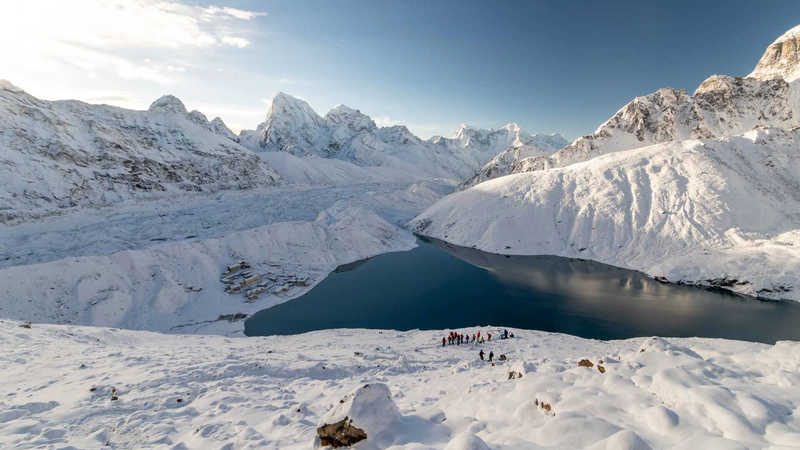
The Gokyo Lakes Trek
- from $1,945
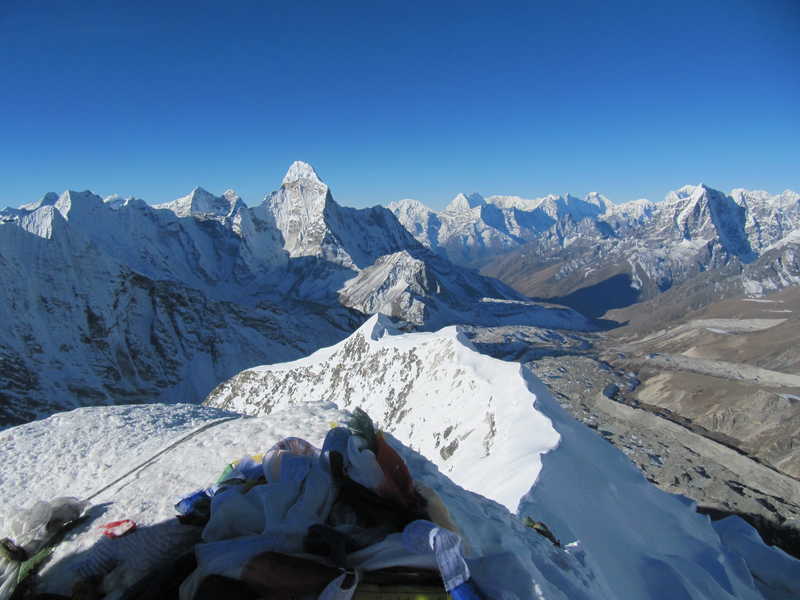
Everest Base Camp and Island Peak
- from $3,575
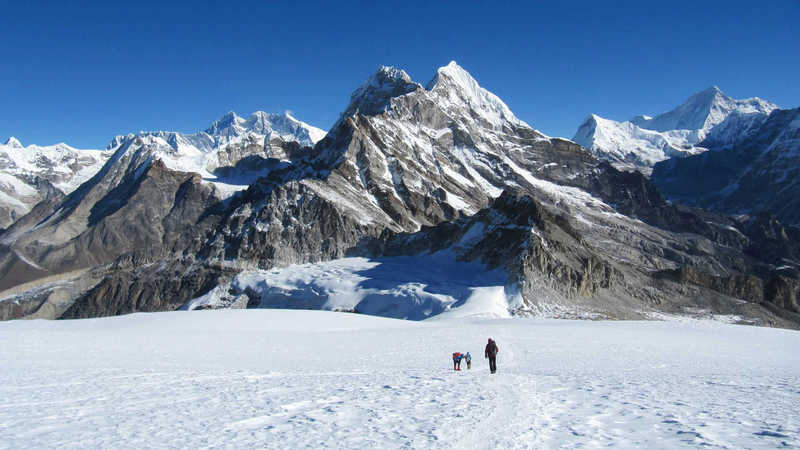
Climb Mera Peak
- from $3,695
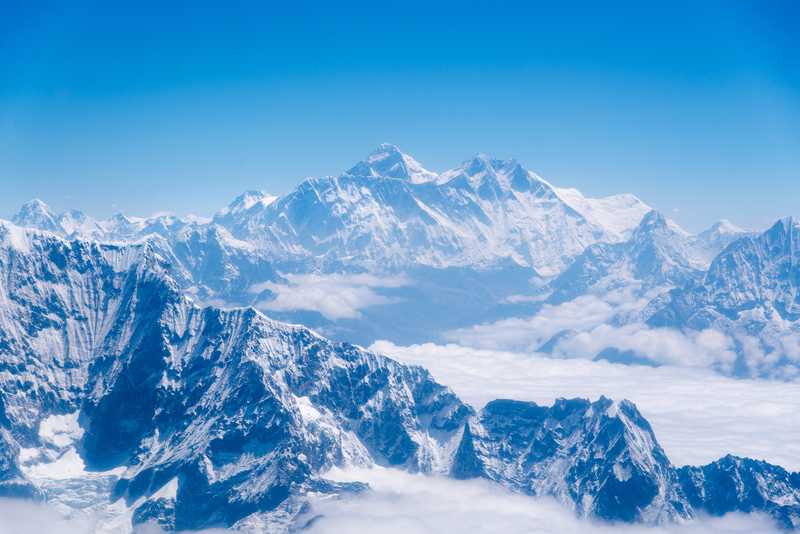
Everest Base Camp
- from $1,725
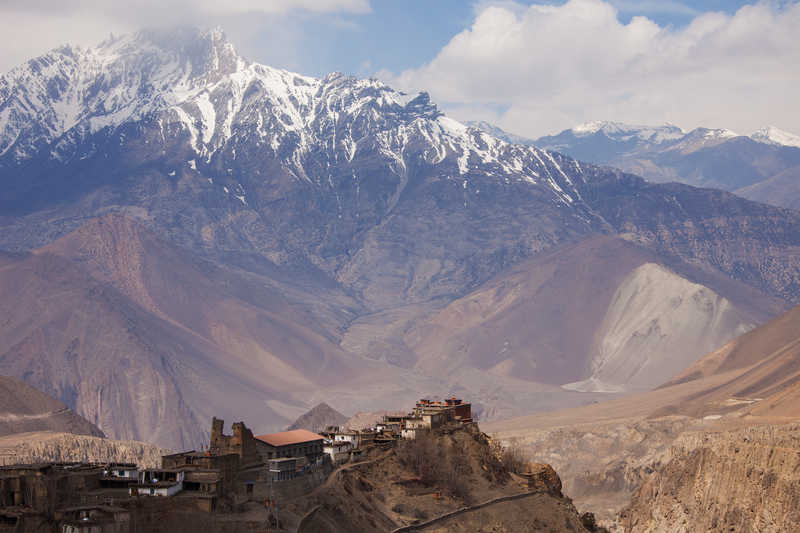
The Chomolhari Trek
- from $4,095
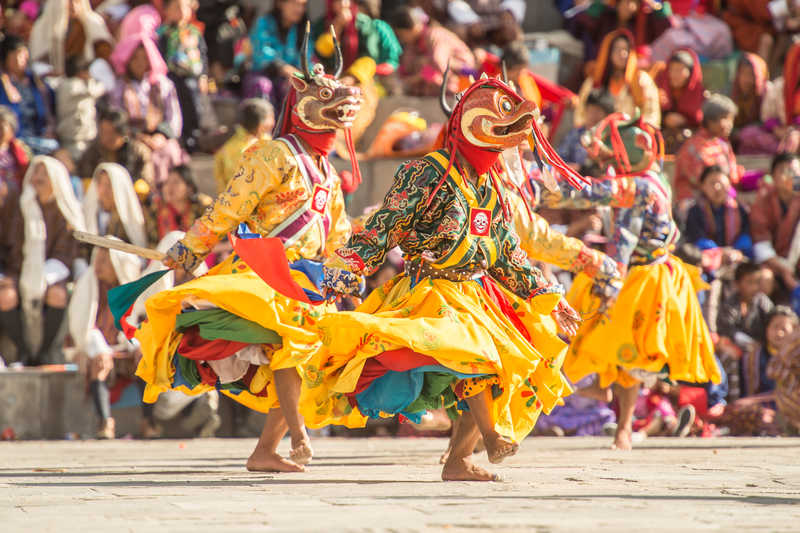
The Druk Path
- from $3,245
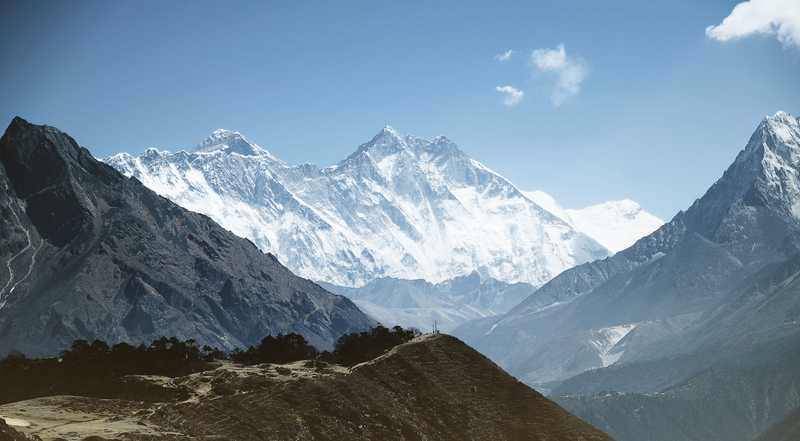
The Three Passes Trek
- from $2,085
Snowman Trek Bhutan
Snowman trek, exploring the outer reaches of bhutan's high himalayas, trekking route.
This is the most difficult trek in Bhutan! The official snowman trek starts in Paro, and leads via Lingshi and Laya to the remote Lunana in northern Bhutan. From there you can either reutn to the lateral road at Nikka Chhu, or continue to Bumthang. Description .
Days required
If you start from Paro, then it is about 24 days, including a rest day in Laya. You can cut off a few days by starting in Punakha; then it is minimally 19 days. We took 20 days from Punakha, including a rest day in Laya (better is to rest at Rodenphu), and Thanza. The last night we slept at the road in Nikka Chhu, you could save a day by driving back to Thimphu right away.
This is a true high altitude trek: from Laya on you stay continuously above 4000m. If you leave from Paro, then you already reach 4000 at Jomolhari basecamp.
Highest passes
Gangla Karchung La, 5230m; Jaze La, 5251 m; Loju La, 5155m; Rinchenzoe La, 5332m.
Highest camps
Tshochena, 4975m; Jichhu Dramo, 5060m.
This trek is not for the weak! Although individual day treks are not difficult, you are in the field for about 3 weeks, far from anywhere. Once you have passed Laya, there is no going back. If you get stuck in, say, Thanza, it is a long way out!
Longest day
If you decide to walk in one day from Thanza to Tshochena, it will take you 8-9 hours, climbing about 1200m from 4000 up to 5250 m. Therefore, it is better to stay overnight at Dhamji. If you do, then the longest day is the one from Jichhu Dramo to Chukarpo - about 8 hours, if you walk down a bit from Chhukarpo to the better campsite.
Best season
The window for good trekking on the Snowman Trek is extremely small: the only time you have a chance of good weather is the first 3 weeks of October. Although the official season extends longer, if you go at any other time, you'll either get very wet, snowed in, or both. We started on October 1 from Punakha, and had great weather. We even didn't see any leaches.
- For a complete trail description see Bhutan: a trekker's guide , or a shorter description in Lonely Planet's Bhutan Travel Survival Kit .
Trek Description

- Why Choose Us
Legal Documents
- Our Working Team
- Booking Terms
Everest Region Treks
- Annapurna and Mustang Region
Manaslu Region Treks
Langtang Region Treks
- Off The Beaten Treks
New Trail Treks
- Hikes And Excursions
- Trek & Heli Return
- Peak Climbing In Nepal
- Expedition In Nepal
- Hike & Bike Adventure
- Bhutan Tour
Bhutan Trek
- Travel Blog
Nepal: +977 9851039058 - USA & Canada: +1 226 202 4001 - Middle East: +973 3679 8508
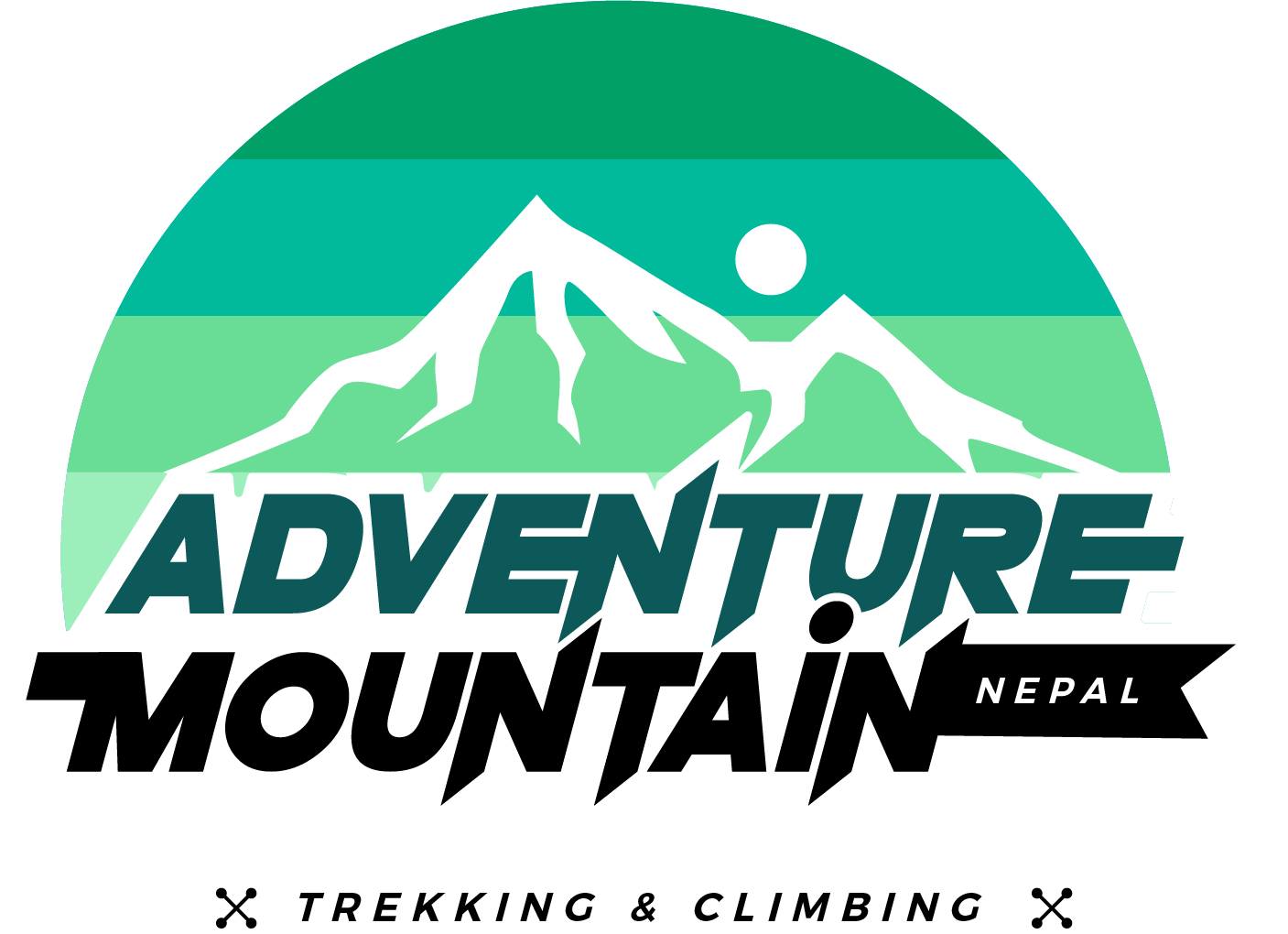
Bhutan Snowman Trek
The most challenging mountain trek in Bhutan.
Best Season
Spring & Autumn
Max Altitude
Tso Chena (5050m/16568ft)
Accomodation
Teahouses/Lodges
Transportation
Flight/Jeep or Bus
BB/Full Board
- Trip Overview
- Itinerary Details
- Cost & Dates
- Additional Info
Introduction
Bhutan Snowman Trek is the most challenging mountain trek in Bhutan undertaken by many trekkers every season and allowed access to Lunana, a remote region of Bhutan. This trek crosses 11 different high mountain passes of more than 4,500m to define the borders of Tibet and Bhutan.
The trek highlights the views of Jichu Drake and Chomolhari by following trails via encampments of yak herders and isolated farm settlements while we prepare to trek to Lunana. Amid a consistent backdrop of 7000m height mountain peaks, we identify a region of tiny monasteries of Buddhism religion and scheduled villages, which remain isolated from the remaining areas of Bhutan for many months in a year.
Bhutan Snowman Trek Highlights
- Bhutan Snowman Trek is a spectacular adventure trek of 30 days in Bhutan. With 25-days of Snowman trek into the most remote valley of the country.
- By traveling in the Lunana district, Snowman trek renamed itself for six different mountains of more than 7,000m, beneath which the trek goes on.
- We will have a short drive starting from Paro after we start in the Drukgyel Dzong and later on will set out heading towards Jhomolhari directly at 7314m, known as the third highest mountain peak in Bhutan.
Day by Day Itinerary
Our representatives will pick you at the Paro Airport and during your flight, you will get opportunities to view countless mountain peaks. During the afternoon, we let you to explore the entire town of Paro and visit the famous Paro Dzong.
On the second day, you will enjoy hiking to the Taktsang Monastery, recognized as the Tiger’s Nest. Here, you will experience an uphill hike for 2 to 3 hours while passing from a lovely pine forest.
Today, you will have a short drive that starts from Paro towards Drukgyel Dzong, an old fort of Bhutan to begin with our trek. However, before this, we continue to move from the extended road towards the Army Camp and the beginning point of our trekking route. Later on, we head up to the Valley of Paro Chhu River, where we find the trekking trail passes from small settlements and get perfect examples of farmhouses in Bhutan and move on to the Pine Camp forest.
Today, we will leave the Pine Camp to continue with our trail upriver to reach the Jigme Dorji National Park. For the night, we will arrange our camp in the nearby places called Thangkthanka.
After an hour out from the camp in the morning, we will move ahead to trek across high mountains. At the midway point of our mountain hike, we will pass from a winter home of various migratory yak herders named Tengethang. Finally, our team will arrive at Jangothan at the height of 4040m to view the sunset on Mount Jichu Drake and Mount Jhomolhari.
During our acclimatization, we will choose anyone among the available hiking options for us. Firstly, you may dedicate 3 to 4 hours to experience an excursion across the northern ridge to get excellent views of the famous Jichu Drake. Second, you may hike to the Jhomolhari Valley, while the third option lets you trek towards the main valley to go towards Jichu Drake. Final alternative lets you have a fishing expedition towards a high-altitude lake named Tshophu after you hike for about 2 hours.
You have to head uphill from Jangothang to cross major passes. With a four hours ascent, you will reach Nyile La Pass at about 4890m, while by descending another side; we will be able to encounter juniper as well as rhododendron forests and pass large numbers of herder camps. Here, we will arrive in Lingshi and set up our camp at the height of 4150m.
Today, we will visit the Chebisa village after we organize our camp at Chebisa at the height of 3850m and get a glimpse of Bhutanese village life. Later on, we will cross the Gombu La Pass at 4350m and finally, descend towards the rhododendron valley. Finally, we will launch our camp at Shakshepesa located at the height of 3980m.
We will move ahead via Jhari La Pass at about 4747m and descend towards the Tsharijathang valley to climb up to the Robluthang Camp at the height of 4160m, Later on; we will start our hike towards the Shinge La Pass at about 5000m. Later on, by descending towards Limithang, we will be able to view the Mountain Gangcheta (Great Tiger Mountain) at 6840m and the nearby glacier valley.
Today, we will climb up through the forest to get a few of the excellent views of Masang Gang and Gangcheta mountains, while finally we organize our camp at Laya located at the height of 3840m.
Today, we will go for a downhill trek towards the Lunana trail junction, while gradually moving towards the Rodufu camp nearby a small stream at about 4160m. Later, on our 14th day, we will experience a long hike by initially crossing 4150m to reach Tsimo La Pass and descends towards Narethang to go for a hike to the Gangla Karchung Peak.
On this trekking day, you will experience a climb towards the Karchung La Pass located at 5240m and then go down to glacial lakes, which constitute major sources of the Tang Chhu River. Above the glacial lakes, you will find two mighty peaks named Tsenda Kang and Jejekangphu Gang before reaching the Tarina Camp at the height of 4020m.
Today, we will begin our walk from conifer forests and later on climb on a ridge as well as pass through a ridge to the Woche Village at about 3940m. On the 17th day, we will go for a gradual climb from the Woche Village towards the campsite, while moving through the steep section to reach the Keche La Pass at about 4580m and drop steeply to the Village. In the afternoon, we will continue with our hike across the river valley to reach a lovely campsite at Lhedi Village.
Trail on this day will give you the opportunity to pass through Pho Chhu to reach the Chozo Village and thereon, you will find the opening of the valley as you approach the village of Thanza located nearby the foot of Zogophu Camp at about 4080m. On our 19th day trek, we will visit the Danji campsite by passing from the Jaze la mountain pass. We will set up our camp at the height of 4600m to get many spectacular views of the snow-covered mountain peaks.
During the first part of our trek, we will experience summits to the Jaze La Mountain Pass at about 5050m and then go for a short and downhill trek towards the campsite at the Tso Chena Lake at about 4800m.
Today, you will follow a series of gradual ups as well as downs by passing from various snow-capped mountain peaks and nearby the Loju La Pass located at 4940m before you will descend to the Jichu Dramo campsite at 4880m.
We will go for a hard climb to the Rinchen Zoe La Pass at about 5290m, which is the highest mountain pass available on the trek. From there, we will move downhill towards Chukarpo i.e. above 4950m at the tree line.
Now, we will go for a downhill walk across the river by following our climb towards Um So lake, and later on, by continuing our trail we reach our camp nearby the Thampe Tso Lake. Later on, on the following day, we will initially have a steep climb to the mountain pass at about 4580m and finally, set up our camp in Maurothang at about 3550m.
Today, we will have the final day of our trek, on which we will descend through Sephu village, while during the late-afternoon, we will go for our return journey to western region across the mountains to reach at Punakha.
Starting our drive from Punakha, we will reach at Thimphu today and thereby, explore the capital city of Bhutan.
Today, we will return to Paro and thereon, drop you to the Paro International Airport for your return journey.
Costs and Dates
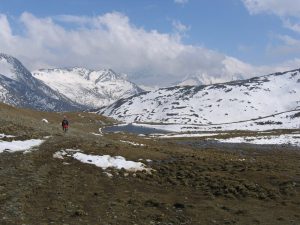
Jhomolhari_Mountain_
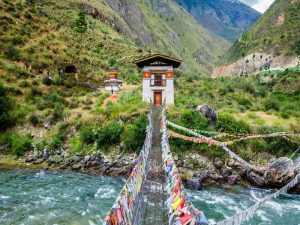
Jhomolhari_Trek
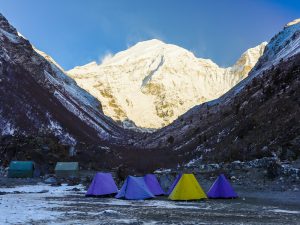
Camp At Jitcu_Darke
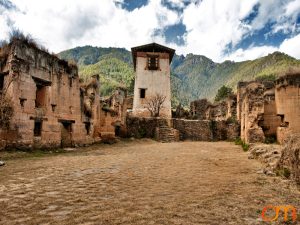
Ruins_of_Drukyel_Dzong
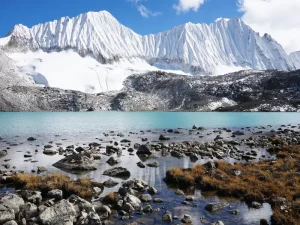
Snowman Trek
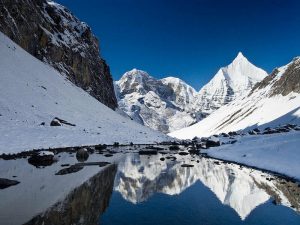
Additional Information
What is the best time to travel bhutan .
The most favorable time to travel Bhutan is during Autumn (September, October & November) and Spring (March, April & May). During these seasons the weather will be clear, flowers will bloom on the way, the charm of the atmosphere can be felt by the heart, you will get the chance to be involved in different festivals, hallucinating views of the Himalayas can be seen and including everything the trekking path will be easier and fun.
Is a Visa Required to trek Bhutan ?
Except the citizens of India, Bangladesh and Maldives all visitors will need a visa to visit Bhutan. Bhutan Trekking Permit is compulsory for all individual international tourists.
How long does it take to trek Bhutan Druk Yul ?
Bhutan Druk Yul trek is a journey of 8 days. This journey will start and end at Kathmandu. In between you will travel to Paro, Thimphu, Wangduephodrang and Punakha and various magnificent places . You will get a full day for sightseeing of some of the most amazing world heritage sites in Kathmandu before departure.
Why is Bhutan known as the land of Thunder Dragon ?
According to Tibetan and Bhutanese Mythology Durk means Thunder Dragon. They have acknowledged it as the Bhutanese National Symbol and included it on the national anthem, national emblem and national flag. In Dzongkha Bhutan is called Druk Yul "Kingdom of Druk" thus also known as Land of thunder Dragon.
What to wear in Bhutan ?
While on the Journey to Bhutan there are no restrictions on clothing but make sure it is comfortable and suits the environment. We recommend lightweight walking shoes, full sleeve light wool clothes, good sunglass, a hat and lastly a trekking jacket. If you are traveling Bhutan in winter we advise you to pack woolen clothes to keep yourself warm. Note: You should try to avoid body revealing clothes as much as you can and make sure to do it while visiting cultural heritage.
Quick Enquiry
Your message (optional)
+1 226 202 4001 (USA & Canada)
+977 9851039058 (Nepal)
+973 3718 8875 (Middle East)

Dagala Thousand Lakes Trek
Dagala Thousand Lakes Trek takes individuals into a special area adorned with thousands of pristine and crystal clear lakes. While walking amidst the shimmering lakes, you will be able to enjoy stunning views of the complete almighty Himalayan mountain range
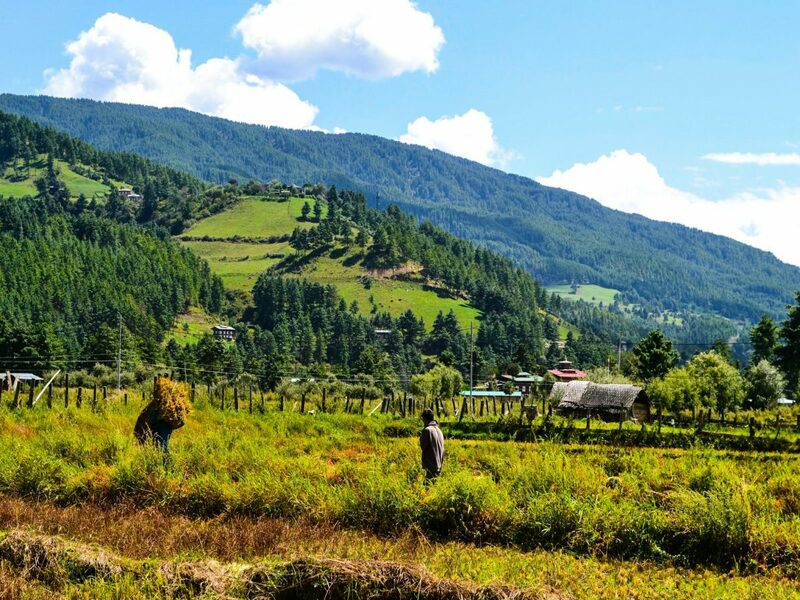
Bumthang Owl Trekking
The trip to Bumthang Owl Trek takes you on an amazing journey that is short but full of excitement and adventure. Bumthang is one of the best places in Bhutan to explore its rich cultural diversity and religious centers. The trekking goes through some of the most beautiful landscapes and refreshing environments .
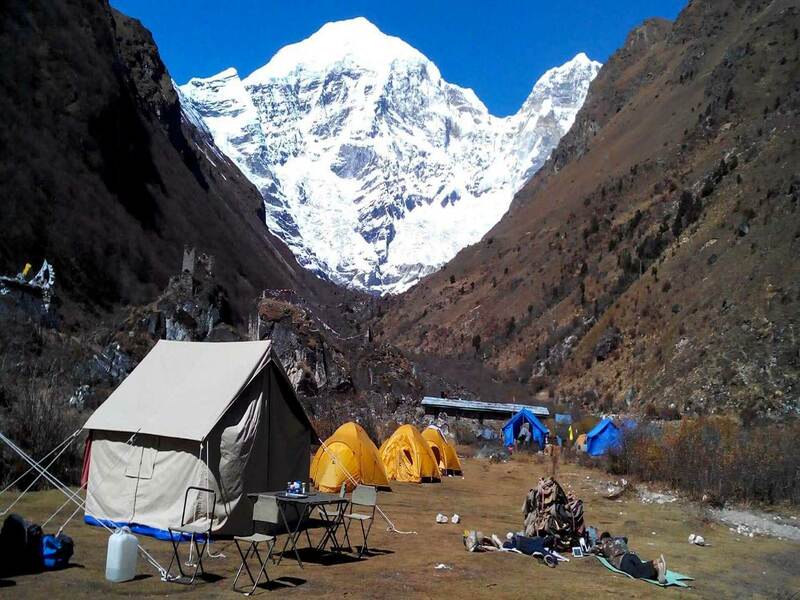
Chomolhari Base Camp Trek
Trekking to the Chomolhari Base Camp is one of the most challenging trekking in Bhutan but promises an unforgettable experience. The trekking takes you around the ridges, along the valleys, crossing the passes, and through the steep slopes. The stunning view of the mountain peaks covered with snow, hills, plateaus, and the landscapes covered with forests remains in your memory forever.
We are associated with
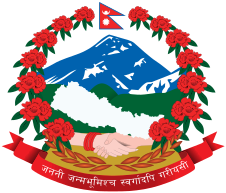
Registered with the company registration office under Nepal Government.
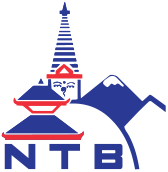
Licensed by Nepal Tourism Board & Department of Tourism.
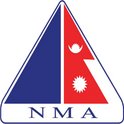
Member of Nepal Mountaineering Association (NMA).
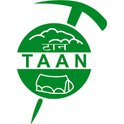
Member of Trekking Agency Association of Nepal (TAAN).
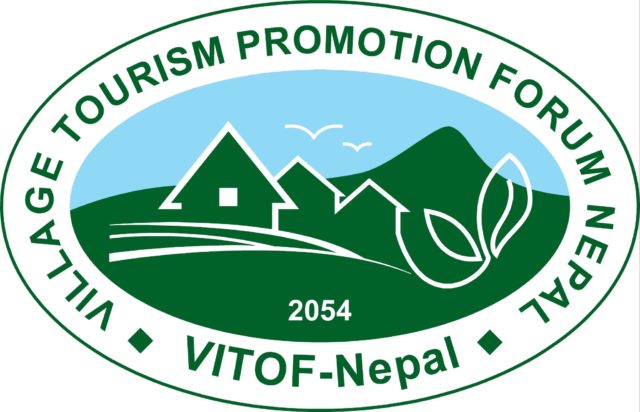
Member of Village Tourism Promotion Forum (VITOF) Nepal.
KEEP IN TOUCH
Travel with us.
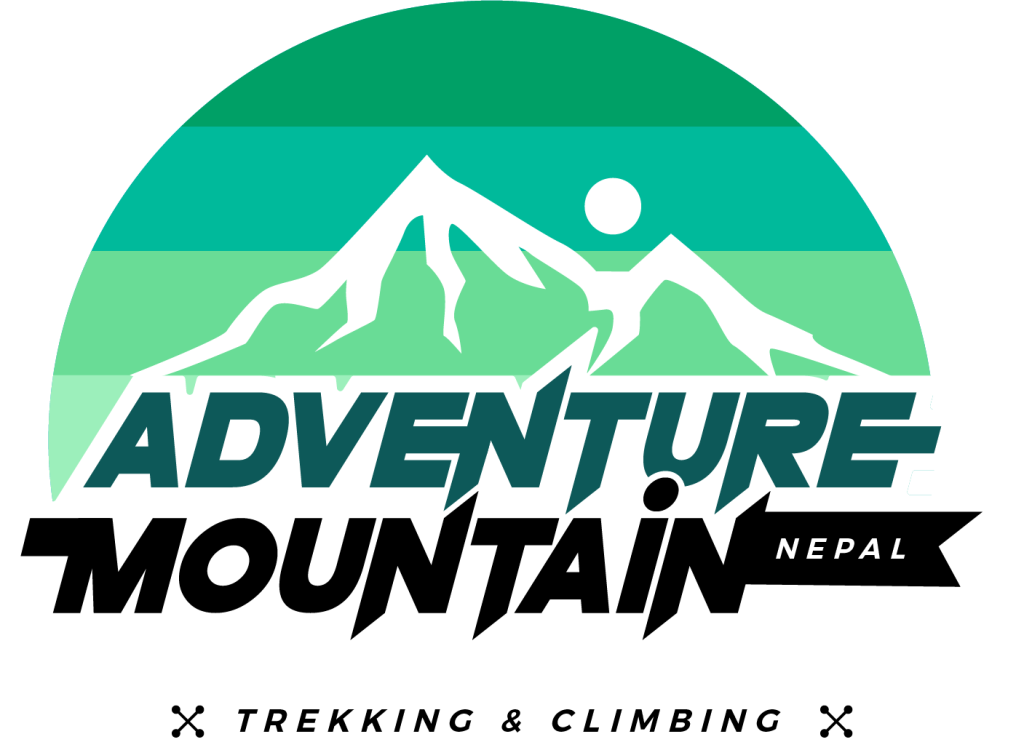
Mountains are calling – fill your soul
Nepal awaits your next adventure, come experience Nepal like never before, with our group of experts, keep our word to have the perfect adventure with guaranteed service and reliable price.
Quick Navigation
Why to Choose Us
Our Working team
Travel News
Holiday Type
Trekking in nepal.
Trek & Heli Return
Peak Climbing in Nepal
Expedition in Nepal
Hike and Bike Adventure
Outside Nepal
Annapurna Region Treks
Off the beaten Treks
Hikes and Excursions
© 2022 Adventure Mountain Treks - ALL RIGHTS RESERVED

Snowman Trek

Full itinerary
The Snowman Trek in Bhutan is considered the most challenging and expensive trekking in Bhutan or even in the Himalayan region. However, it’s amazingly the best and most scenic high altitude trek in the world, as it’s like no other trek on this planet. So you will have to choose an appropriate time or season and must be physically fit to complete the trek. And the best time for the Snowman trek is from late May-June and the end of the September-October months.
The Snowman trek will go over many high passes that are over 4500-5350 meters, encountering all the breathtaking views of permanent snow-capped Northern Himalayan ranges in Bhutan. You will also camp at a high altitude several times after your couple of hour’s wonderful and scenic day hikes whilst you also get to camp at remote Lunana village surrounded by many gorgeous glacial lakes. And it’s one of the highest settlements in the world. Blue Sheep, Marmots, and many picturesque glacial lakes can be seen quite often on the trek.
You can also see Rhododendrons, Blue Poppy, and many alpine flowers in bloom if you trek in between the late May to June months. We normally require a minimum of 4 trekkers for the Snowman trek, so that your trek’s cost is shared substantially and you have some trekking companions too! And we ensure that you will be accompanied by a skilled local guide/tour leader, good cooks, etc. with very good trekking equipment and services. You may receive several cost offers for this trek, so beware if someone is going too low as it will undermine your trek’s experiences.

Day 01: Arrive Paro International Airport During the flight one will experience breathtaking views of Mount Everest, Kanchenjunga and other famous Himalayan peaks, including the sacred Mount Jomolhari and Jitchu Drake in Bhutan. On arrival at Paro International Airport, you will be received and escorted to your hotel by our company representative.
Day 02: Paro – Sightseeing Morning : drive to Drugyal Dzong (a ruined fortress – 16 kms away from Paro town). The dzong, although in ruins, holds great historical significance. It was from this fortress that the Bhutanese repelled many Tibetan invasions. The name means “The Victorious Bhutanese.” This spot unfolds a magnificent vista of Mount Chomolhari, “Mountain of goddess” (Alt 7329 mtrs). Visit a typical Bhutanese farm house on the way back. Overnight at hotel.
Day 03: Paro – Shana (trek starts) Distance 17 kms. About 4 – 5 hours journey. Altitude of Shana – 2800 mtrs. Drive up to road end at Drugyal Dzong where the trek begins. The trail follows the river gently uphill through narrowing valley and agricultural fields. The night’s camp is just beyond an army outpost.
Day 04: Shana – Soi Thangthangkha Continue uphill through the river valley which narrows and closes in after some distance. The trail then winds up and down along the drainage.The camp site is located in a meadow with stone shelter. Alt.approx – 3400 mtrs. Distance 15 kms. Time 6-7 hrs.
Day 05: Soi thangthangkha – Jangothang Distance – 9 kms. About 5 hours journey. Altitude of Jangothang – 4040 mtrs. The trek starts up the Pa Chu. An army outpost is crossed along the way. The valley begins to widen again. All around high mountain ridges and snow-capped peaks come into view. Yaks and yak herders’ winter homes become a regular feature of the landscape. The night camp is beneath a ruined fortress at the base of Mt. Chomolhari.
Day 06: Jangothang halt day for acclimatization Today is a rest and acclimatization for the next day’s highest climb on this trek. You will hike to explore nearby mountains and lakes. And then take rest at the camp in the afternoon.
Day 07: Jangothang – Lingshi Distance – 19 kms. About 6 – 7 hour journey. Altitude of Lingshi – 4150 mtrs. Trek through wide yak pastures and passes. As you come down into the Lingshi basin, you get a wonderful view of Lingshi Dzong on a clear day. Tsarim Khang and its glaciers rise up at the north end of the valley. Night halt is a choice between a stone hut or the tent.
Day 08: Lingshi – Chebisa Distance : 12 kms. About 5 – 6 hours journey. Altitude of Chebisa – 3850 mtrs. This stretch is the short walk and can be taken at a leisurely pace. On reaching camp at Chebisa, you can visit the village houses and meet local people.
Day 09: Chebisa – Shomuthang Distance : 17 kms. About 6 hours journey. Altitude of Shomuthang – 4260 mtrs. The trek is through wild high pastures. The area is sparsely inhabited. The trail leads across the Gobula, a pass at an altitude of 4350 mtrs. Camp is on a ledge of flat land overlooking a tributary to the Mo Chu.
Day 10: Shomuthang – Robluthang Distance : 15 Kms. About 5 hours journey. Altitude of Robluthang – 14400 ft. an early start is advisable as you have to cross the Jerela Pass at an altitude of 4600 mtrs. After crossing Jerela, the trail descends to Tsharijathang, the valley where herds of Takin are usually seen. Overnight in camp.
Day 11: Robluthang – Lemithang After crossing Shingela Pass at an altitude of 4900 mtrs, the trail descends to the valley beyond.
Day 12: Lemithang – Laya Altitude of Laya is 12680ft. Campsite is on a flat piece of land overlooking the east end of the Laya village.
Day 13: Laya halt Visit the village houses and take short hikes around the area. And then take rest after lunch.
Day 14: Laya – Roduphu Distance – 19 Kms. About 7-8 hours journey. Altitude of Roduphu – 4610 mtrs. Overnight at camp.
Day 15: Roduphu – Narithang Distance – 17 kms. About 6 hours journey. Altitude of Narithang – 4220 mtrs. Overnight at camp.
Day 16: Narithang – Tarina Distance – 18 kms. About 7 hours journey. The trek crosses Ganglakarchungla at an altitude of 5100 mtrs. Overngith at camp.
Day 17: Tarina – Woche Distance – 15 kms. About 6 hours journey. On arrival at camp, visit a village house. From this point, the Lunana area begins. Overnight at camp.
Day 18: Woche – Lhedi Distane – 19 kms. About 6-7 hours journey. The trail crosses the Kechela at an altitude of 4550 mtrs. Stop at Thega village enroute. Overnight at camp.
Day 19: Lhedi – Thanza Distane – 19 Kms. About 6 hours journey. Altitude of Thanza – 4050 mtrs. Enroute visit Chezo Dzong. Overnight at camp.
Day 20: Thanza – Halt Spend the day visiting village houses and meeting the local people. Short hikes can be taken around the camp area. Overnight at camp.
Day 21: Thanza – Tsochena Distance – 18 Kms. About 6-7 hours journey. Altitude of Tsochena – 4500 mtrs. The trail crosses Jezela Pass at an altitude of 5050 mtrs. Overnight at camp.
Day 22: Tsochena – Jitchu Dramo Distance – 14 Kms. About 5 hours journey. Altitude of Jitfchu Dramo – 4880 mtrs. The trail crosses Lojula Pass at an altitude of 4940 mtrs. Overnight at camp.
Day 23: Jitchu Dramo – Chukarpo Distance – 15 Kms. About 5 hours journey. Altitude of Chukarpo 14,731 ft. The trail crosses Rinchenzoe Pass at an altitude of 5140 mtrs. Overnight halt at camp.
Day 24: Chukarpo – Tampetso Distance – 20 Kms. About 7-8 hours journey. Altitude of Tempetso – 13,895 ft. The trail crosses Tampela Pass at an altitude of 4550 mtrs. And the Umtso Lake, which is famous for the religious treasures, that Terton Pamalingpa found there. Overnight halt at camp.
Day 25: Tampetso – Maorothang Distance – 14 Kms. About 6 hours journey. Altitude of Maorothang – 11,844 ft. The trek is downhill all the way through stunted Rhododendron trees. The camp is situated near the Nika Chu River. Overngith halt at camp.
Day 26: Maorothang – Nika Chu (Trek End) – Phobjikha Distance 23 Kms. About 7 hours journey. Altitude of Nika Chu Chazam – 2650 mtrs. The last day of the trek goes gradually downhill through mixed deciduous and bamboo forests. We further descend through forests and pastures connecting to large grassy area overlooking the motor road and Sephu Village (2650m). Your car will be waiting here to transfer you to Phobjikha which is around 45 minutes drive. Overnight halt stay at the hotel in Phobjikha.
Day 27: Phobjikha – Thimphu (135 Km, 4 hrs drive) After your breakfast drive toward Thimphu with en-route visit of gorgeous and popular Punakha Dzong, which is stunningly situated in between the male and female rivers like an anchored ship. And then drive to Thimphu via Dochula pass. Check into hotel on arrival and have a free evening. Overnight halt stay at the Hotel in Thimphu.
Day 28: Thimphu Sightseeing – Paro (55 km, 1 hr drive) Visit the Buddha Point to see the world’s tallest statue of Sykhamuni Buddha from where you can also have best view of the Thimphu city. Visit the Takin Zoo and School of Arts and Crafts. And then wander through the town, visit shops and the Handicrafts Emporium, where Bhutanese textiles and other handicrafts are available. Evening drive to Paro. Overnight halt stay in one of nice resorts/hotels in Paro.
Day 29: Paro – Flight departure Morning depart from Paro Airport for your next flight destination, and have a warm Tashi Delek from Bhutan Travel Adventures.
An Advance Payment USD 1,500 each with full airfare must be deposited for confirming the trek. And the remaining payment must be paid two months prior to your trip. So after which we can apply your Bhutan Visa, and send it to you in advance.
The minimum daily package travelling in a group of 4 people for this trek is as follows:
- Peak Season Cost: March, April, May, September, October & November Staring Cost: USD 245 per night per person.
- Regular Season Cost: June, July and August Staring Cost: USD 215 per night per person
- The Daily Cost will be less if you have a group of 5 and above.
The minimum daily package covers the following services:
- A minimum of 3 star accommodation (4 & 5 star may require an additional premium).
- A licensed Bhutanese tour guide for the extent of your stay
- All internal transport (excluding internal flights)
- Camping equipment and haulage for trekking tours
- All internal taxes and charges
- A sustainable tourism Royalty of USD $65. This Royalty goes towards free education, free healthcare, poverty alleviation, along with the building of infrastructure.
1. What sort of past acclimatization/elevation and exercises do you need for this trek? Ans – One must have done few minimum a week adventure treks at least 4500 meters and above and must be healthy and fit with good and average hiking pace for such an adventure.
2. What is the minimum number of people required for the trek, and when is the best time or season? Ans – We normally require minimum 2 people for the trek. yet, we can also conduct the trek for one person also. However, you will have to bear little additional cost. The best time for the trek is in the late spring or end of May, and then in the fall toward the end September.
3. What is the procedure for this trek booking ? Ans – You will have book this trek at least two months ahead with your confirmed flight booking. And then must deposit US $1,500 each/30% as an Advance Payment with full airfare only for your flight to/from Paro, Bhutan.
4. Why shall we book this adventure trek with your company? Ans – We are one of the most local adventures travel company who can render personalized services, with value for money. We make sure to provide very good weather proof trekking equipment, skilled guide/tour leader, good cook and helpers, transports, etc, etc. And we arrange the trek on right time/season, so that it’s mostly a successful trek.
5. Do you apply our Bhutan Visa and what are the documents required for the Visa? Ans – Yes, we will issue your Bhutan Visa upon receiving the full payment from you. And we only need your clear passport copy for applying the Visa.
6. Do we need to bring our sleeping bag, if so what type or how warm it must be? Ans – Yes, you will have to bring your own sleeping bag. And it must be minimum minus 20 Degree Celsius dawn feather sleeping bag.
7. What are available flights connecting Bhutan with other cities, and what is the most convenient flight to/from Bhutan. And do you book the flights too? Ans – We have flights to and from Bangkok, Kathmandu, Delhi, Kolkata, Dhaka, Singapore, Bagdogra and Guwahati. Yet, the most convenient flights to/fro Paro, Bhutan is via Bangkok as we have several flights in a day. Yes, we will book your flight as well, unless you want to do it at your end.

We are ready to address any questions or concerns
call us +975-02-336696 or book your trip now

Follow us on:
featured trips
Outbound trips.
Sign up for the exclusive offers and best deals from us
© 2008 - 2024 | All Rights Reserved | Bhutan Travel Adventures
Mt Everest Base Camp Trekking Nepal with Base Camp Excursion
Base camp trekking in Nepal travel agency Kathmandu
Snowman trek Bhutan itinerary, cost, map, difficulty details
Snowman trek bhutan package details.
It is an extension of the stunning Laya Gasa trek and leads from Laya further into the high altitudes of the Himalayas . Snowman trek the hardest treks can turn to be the most remarkable experience in their trekking life. If you are looking for beautiful scenic and panorama, Snowman trek Bhutan is the best option. The nuances and views offered by Bhutan suit most personal tastes.
If you never heard about Bhutan snowman trekking holidays then experience cool place to trek. It has deep valleys with gorges and canyons, which are really irresistible to be seen. Such natural spots of peaks and a vast mountain range are the attraction of snowman trip.
Snowman trekking passes through awe-inspiring landscape, cross nine different passes over 4500 meters makes this not only one of the highest altitude treks, but also the most challenging, it start from Drukgyel Dzong after short drive from Paro, then trail heading directly towards Chomolhari at 7314m the third highest peak of Bhutan.
When you step your feet to the incredible area, you will be surprised. This is beyond imagination. The place provides all the hikers and trekkers need. Trekking in Bhutan is one of the most enjoyable experiences for all visitors. Its landscape, people and Buddhist culture provide the ingredient for a memorable trip into one of the world’s most remote kingdoms.
Lunana snowman trek Bhutan known as the legendary trek and world’s toughest trek also recommend only for the experienced mountaineers, trekkers it is considered to be one of the most difficult trek in the world. Essentially the route, which combines the Chomolhari base camp and Laya Lingshi trek, passes through the Lunana region and ends at Nikkachu.
Lunana Snowman trek Bhutan is one of the most awaited activities for adventure trekkers. It is a special event involving many trekkers around the world. Best season for this trek is first 3 weeks of October and April, snowman trek is frequently closed because of snow; recommended season for this trek is mid-June to mid October, requires minimum 5 person in group, it will be an epic mountain trek with amazing wilderness and culture make this trip memorable forever!
Snowman trek Bhutan itinerary
Day 01: Welcome to Nepal, after arrival in Nepal, our representative welcome and assists to transfer in hotel.
Day 02: Kathmandu city tours and preparation for showman trek.
Day 03: Flight from Kathmandu to Paro, explore around the Paro valley then transfer to Thimphu .
Day 04: Drive from Thimphu to Punakha via Dochula pass 3,100m camp at Tashithang.
Day 05: Trek from Tashithang to Gasa Tsachu via Damji village.
Day 06: Trek from Gasa to Chamsa via Bele La pass 3,700m.
Day 08: Rest day at Laya for acclimatization
Day 09: Trek from Laya to Rodhuphu
Day 10: Trek from Rodhuphu to Tarina via Ganglapachung pass 5080m superb view point of Lunana, Mount Jumolhari and Jichu Drake.
Day 11: Trek from Tarina to Woche
Day 12: Trek from Woche to Lhedi via Keche La pass 4480m.
Day 13: Trek from Lhedi to Thanza.
Day 14: Rest day at Thanza for acclimatization.
Day 15: Trek from Thanza to Tshorim
Day 16: Trek from Tshorim to Gangkar Puensum Base Camp via Gophula pass 5,230m.
Day 17: Rest day at Gangkar Puensum base camp
Day 18: Trek from Gangkar Puensum Base Camp to Geshe Woma
Day 19: Trek to Warathang via Sakala pass 4,800m
Day 20: Trek from Warathang to Dur Tsachu via Julila pass 4,400m
Day 21: Trek from Dur Tsachu to Tshochenchen
Day 22: Trek from Tshochenchen to Dur Bumthang (Jakar)
Day 23: Excursion around Bumthang valley visiting, Jakar Dzong, Kurjey Lhakhang, Jambay Lhakhang and Tamshing Lhakhang.
Day 24: Drive to Wangdue from Bumthang.
Day 25: Drive to Paro via Thimphu.
Day 26: Flight from Paro to Kathmandu , evening farewell dinner.
Day 27: After this amazing Snow man trek if you are interested for other activities like Safari , Rafting , Biking , Tours , Peak climbing or more trekking in other region we organize trip according to your desire. If you decide to leave Nepal we will transfer to airport for your onward destination.
Service include
#Airport pickup and drop by private vehicle
#Bhutan travel visa and permit fee
#Hotel accommodation in Kathmandu BB basis
#License holder English speaking Bhutanese Tour Guide
#All entrance fees of monuments and monasteries as per trip
#Accommodation in Bhutanese lodges or tents
#Full board meals while on Bhutan trip (B.L.D)
#All Royalty, government taxes
#Porter to carry baggage and equipment’s
#Portable altitude chamber and satellite phone
#Farewell Dinner
Service exclude
*Visa fees/ international airfare to and from Kathmandu
*Travel Insurance of Guest
*Personal expenses bar bill, beverages and laundry
*Lunch and dinner while in Kathmandu
*Emergency evacuation cost in case of emergency
*Hot and cold shower, battery charging during the trek
*Personal trekking equipment’s / gears
*Others which is not mentioned on service include
*Trips for Guide and support staffs
Base Camp Excursion , Kathmandu, Nepal always thinking about guest’s safety; it is our paramount concern whilst traveling with us. Trekking in Bhutan is an adventure tour we reach remote mountain region. Sometime health condition of member, natural disaster, and weather condition of mountain region changed unexpectedly we cannot guarantee it. Please note that trekking guide has the authority to cancel any part of Snowman trek itinerary if it is necessary due to safety concerns, be prepared to be flexible if required, otherwise trekking group leader follow the above itinerary.
Additional information
Website contents about Bhutan trek provide you detail information as possible, for Snowman trekking package , if you need extra information and wish to discuss any aspect of Snow man trip or your suitability for it please contact us. If you would like to speak with a reservations consultant, feel free to make a call at 977 9843051359
Holiday Trip Fact
- Government Registered No: 113188/070
- Tourism No: 1599
- VAT No: 601221723
Nepal Eco Adventure
Committed To Be Eco Friendly!
- +977 9851170646 (Chhatra)
Lunana Snowman Trek
One of the most challenging and beautiful treks of the whole Himalayas, Lunana Snowman trekking trail traverses through a remote and rarely visited region of the Eastern Bhutan. It covers the distance of 357 kilometers (220 miles), crosses eight high passes, several of which are over 5,000 meters (16,400 feet), and stays each place at an average altitude of 4,000 meters (13,000 feet). The topography of the trekking trail is characterized by rugged mountains with snow-clad peaks, steep slopes, narrow gorges and flat, narrow valley. The area is still heavily forested and there you will see some animals such as Blue sheep, Takin, Marmots, Himalayan black bear & cubs, blood pheasant, lammergeier and birds of prey among others along the trail.
The permanent snowline varies between 4700 m on the shady faces to over 5500 m on the sunny eastern and southern faces. You will see Bhutan’s spectacular mountains such as Chomolhari and Gangkhar Puensum, the highest unclimbed mountain in the world and several peaks along the Bhutan and Tibet border while trekking. Climbing Gangkhar Puensum has still been banned by the Bhutanese government because of religious and cultural reasons. Trekking trail has connected three of the most remote and high valleys along the northern border of Bhutan. Chomolhari and Lingshi Trek, Laya and Lunana Trek, Lunana and Nakachhu Trek are parts of Lunana Snowman trek with different names. The longest version of the trek is Laya and Lunana trek. During the trek you will encounter the Lunana and Laya people, a semi-nomadic tribe along the route. Unlike other regions of the Himalaya, we use yaks or horses to carry our load through different villages. The highlights of the Lunana Snowman trek are – Karchung La.Pass, the rest day at Thanza/ Tshorim Lakes and cross over Saga La Pass , all naturally stunning. As it is a challenging trek, fitness and previous high altitude trekking experience is required to complete it successfully. Months of April-May and September-October are the best time to do this trek.
Nepal Eco Adventure organizes Lunana Snowman trek every year and if you are considering joining this trek please contact us.
What is Included
- Flight fare with tax: Kathmandu-Paro-Kathmandu (if the trip ends in Kathmandu)
- International arrival/departure transfers (Paro)
- Guided sightseeing tour in Paro, Thimphu & Punakha escorted by local Bhutanese guide
- Private vehicle while sightseeing in Kathmandu and Bhutan
- Bhutan Monuments entrance fees
- Accommodation on twin sharing basis in hotels/resorts with breakfast in Bhutan
- All meals (breakfast/lunch/dinner) in Bhutan during trekking
- Porters and pack animals to carry trekking gear in Bhutan
- All necessary trekking permits
- Bhutan government royalty and local taxes
What is Excluded
- International airfare and airport tax
- Nepal entry visa fee $30 USD for 15 day multiple entry visa on arrival.
- Single supplement in hotel during entire trip $750 USD.
- Meals and Hotels in Kathmandu.
- Travel/medical insurance and emergency evacuation cost
- Expenses of personal nature like alcoholic drinks, mineral water, cold drinks, laundry, international phone call etc.
- Personal clothing and equipment
- Extra luggage charge on the flight
- Upgrade of airfare and type of accommodation
- Tips for guide and driver after sightseeing in Nepal and Bhutan
- All expenses incurred in the event of early departure (evacuation fee, transport, extra hotel night, food etc.)
Join Our Fixed Trip Starting Date
Load More Show Less
Write a Review Cancel reply
Thank you. Your review will appear after admin approves it.
Please fill all the fields.
Your email address will not be published. Required fields are marked *
Review Title*
Date Of Experience
Photo Gallery Invalid File Type. Supported File Type: JPEG/JPG, PNG. Drop your Image or click to browse Supported file : JPG, PNG, GIF
Save my name, email, and website in this browser for the next time I comment.
You Can Send Your Inquiry via The Form Below.
Send your inquiry via the form below, we will reply to your email as soon as possible.
- Full Name *
- Contact No.
- Trip Type * Select Trip Type Private Group Joining
- No of Travelers *
- When Will You Be Travelling? Day 1 2 3 4 5 6 7 8 9 10 11 12 13 14 15 16 17 18 19 20 21 22 23 24 25 26 27 28 29 30 31 Month 1 2 3 4 5 6 7 8 9 10 11 12 Year 2025 2024 2023 2022 2021 2020 2019 2018 2017 2016 2015 2014 2013 2012 2011 2010 2009 2008 2007 2006 2005 2004 2003 2002 2001 2000 1999 1998 1997 1996 1995 1994 1993 1992 1991 1990 1989 1988 1987 1986 1985 1984 1983 1982 1981 1980 1979 1978 1977 1976 1975 1974 1973 1972 1971 1970 1969 1968 1967 1966 1965 1964 1963 1962 1961 1960 1959 1958 1957 1956 1955 1954 1953 1952 1951 1950 1949 1948 1947 1946 1945 1944 1943 1942 1941 1940 1939 1938 1937 1936 1935 1934 1933 1932 1931 1930 1929 1928 1927 1926 1925 1924 1923 1922 1921 1920
- Your Message *
This trip is fully customizable
- Have a big group? We can help.
- We can customize your trip as per your request
- We can help you make fit it your all the itinery
- Trip Destination: Lunana Snowman Trek
- Difficulty: Strenuous
- Group Size: Minimum 02 person.
- Best Season: March-End of May and September-End of December.
- Maximum Altitude: 5500m
- Transportation: Aeroplane, Bus, Car
- Trip Code: NEABT04
Certificate of Excellence
Travel info.
- Getting Tourist Visa for Nepal
- Trekking in Nepal- Complete Guide
- Visa Info and Religions in Nepal
- Visa Information
- Responsible Tourism
- Trekking Seasons in Nepal
- Trekking Guide & Porter on Hire
- Trekking Equipment
- Altitude Sickness
Related Trips
Bhutan culture and nature adventure, samtengang winter trek, short bhutan tour, 3 nights 4 days bhutan tour, bhutan thimphu festival & trek, 8 days bhutan cultural and nature tour.

Lunana Snowman Trek
Overview The Lunana Snowman Trek is also a challenging and breathtakingly beautiful trekking journey that traverses the remote and rugged landscapes of Bhutan, a Himalayan kingdom. Spanning approximately 200 miles, this trek renowns for its stunning vistas of towering peaks, pristine alpine lakes, and remote villages that offer a glimpse into traditional Bhutanese culture. Starting in Paro, the trek also winds through dense forests, ascending to high mountain passes that often exceed 16,000 feet in elevation. Trekkers get treatment with awe-inspiring views of snow-capped peaks, including some of the world's highest mountains. The trail crosses remote valleys like Laya and…
The Lunana Snowman Trek is also a challenging and breathtakingly beautiful trekking journey that traverses the remote and rugged landscapes of Bhutan , a Himalayan kingdom. Spanning approximately 200 miles, this trek renowns for its stunning vistas of towering peaks, pristine alpine lakes, and remote villages that offer a glimpse into traditional Bhutanese culture.
Starting in Paro, the trek also winds through dense forests, ascending to high mountain passes that often exceed 16,000 feet in elevation. Trekkers get treatment with awe-inspiring views of snow-capped peaks, including some of the world’s highest mountains. The trail crosses remote valleys like Laya and Lunana, where trekkers can interact with local yak herders and farmers, immersing themselves in the unique lifestyle of the Bhutanese highlanders.
The trek’s difficulty lies in its rugged terrain and variable weather conditions. Trekkers need to get well-prepare, physically fit, and equipped with proper gear to tackle challenging ascents and descents, river crossings, and possible snow-covered sections, even during the trekking season from April to October. Nights spent camping in pristine wilderness, enhancing the sense of adventure.
Throughout the journey, trekkers will encounter a diverse range of ecosystems, from dense forests to high alpine meadows, fostering an appreciation for Bhutan’s remarkable biodiversity. The Snowman Trek culminates at the base of Gangkhar Puensum, the world’s highest unclimbed mountain due to its spiritual significance in Bhutanese culture.
Conclusion and Summary
The Lunana Snowman Trek also offers an unparalleled opportunity to experience Bhutan’s natural and cultural splendors. It’s a challenging adventure that rewards those willing to embrace its demands with a profound connection to the Himalayan wilderness and an unforgettable encounter with the remote and captivating landscapes of Bhutan.
Trip Highlights
The Lunana Snowman Trek is one of the most challenging and rewarding treks in Bhutan. Here are some of the highlights of the trek:
- Remote and rugged terrain: The Lunana Snowman Trek takes you through some of the most remote and rugged terrain in Bhutan. You’ll pass through high mountain passes, deep valleys, and beautiful glacial lakes.
- Spectacular scenery: The trek offers spectacular views of the Himalayas, including Mount Jomolhari, which is one of the most sacred mountains in Bhutan. You’ll also see beautiful forests, meadows, and traditional villages.
- Unique culture: The trek takes you through traditional villages where you can interact with the locals and learn about their unique culture and way of life. You’ll see traditional dress, handicrafts, and taste local cuisine.
- High altitude challenge: The trek takes you to altitudes of over 5,000 meters (16,400 feet), which presents a challenge for even experienced trekkers. You’ll need to be in good physical condition and acclimatize properly to the high altitude.
- Wildlife spotting: The Lunana Snowman Trek offers opportunities to spot wildlife such as the blue sheep, Himalayan black bear, snow leopard, and musk deer.
Overall, the Lunana Snowman Trek is a challenging and rewarding adventure that takes you through some of the most beautiful and remote terrain in Bhutan, providing a unique cultural experience and a true test of physical endurance.
Day 1: Arrive in Paro
Upon arrival in Paro, you’ll be met by your tour operator and transferred to your hotel. You’ll have some time to explore Paro and visit the famous Tiger’s Nest Monastery.
Day 2: Paro to Thimphu
After breakfast, you’ll drive to Thimphu, the capital city of Bhutan. Along the way, you’ll stop at the Tamchog Lhakhang iron bridge and the Tachogang Lhakhang temple. In Thimphu, you’ll visit the National Memorial Chorten and the giant Buddha statue.
Day 3: Thimphu to Punakha
You’ll drive to Punakha, the ancient capital of Bhutan. Along the way, you’ll cross the Dochula Pass, which offers spectacular views of the Himalayas. You’ll visit the Punakha Dzong, one of the most beautiful and historic fortresses in Bhutan.
Day 4: Punakha to Gasa
You’ll drive to Gasa, where you’ll begin your trek. You’ll pass through beautiful villages and terraced farmland, and eventually reach the hot springs of Gasa.
Day 5: Gasa to Koena
You’ll begin your trek today, starting with a steep climb to the Bari La Pass (3,810m/12,500ft). You’ll then descend to the Koena campsite, which offers stunning views of the surrounding mountains.
Day 6: Koena to Laya
You’ll continue your trek through beautiful rhododendron forests and reach the village of Laya. Laya is known for its unique culture and traditional dress.
Day 7: Rest day in Laya
Today is a rest day in Laya, which will give you a chance to explore the village and interact with the locals. You can also visit the Laya School and learn about Bhutan’s education system.
Day 8: Laya to Rodophu
You’ll leave Laya and begin your climb to the Sinche La Pass (5,005m/16,417ft), the highest point on the trek. You’ll then descend to the Rodophu campsite, which is located by a beautiful glacial lake.
Day 9: Rodophu to Narethang
You’ll cross the daunting Gangla Karchung Pass (5,120m/16,800ft), which offers breathtaking views of the surrounding mountains. You’ll then descend to the Narethang campsite, which is located on a beautiful meadow.
Day 10: Narethang to Tarina
You’ll continue your descent through beautiful valleys and forests and reach the Tarina campsite, which is located by a beautiful river.
Day 11: Tarina to Woche
You’ll follow the trail along the river and reach the village of Woche, where you can visit the village temple and interact with the locals.
Day 12: Woche to Lhedi
You’ll pass through beautiful forests and reach the village of Lhedi, which is known for its handicrafts and textiles. You can visit the local market and shop for souvenirs.
Day 13: Lhedi to Thanza
You’ll follow the trail through beautiful valleys and reach the village of Thanza, which is located in a wide valley surrounded by snow-capped peaks.
Day 14: Rest day in Thanza
Today is a rest day in Thanza, which will give you a chance to explore the village and interact with the locals. You can also visit the local monastery
Day 15: Thanza to Tshochena
Today’s trek begins with a steep climb from Thanza to the top of the ridge. From there, you’ll have a stunning view of the snow-capped peaks of the Himalayas. You’ll then descend to the beautiful lakes of Tshochena, where you’ll camp for the night.
Day 16: Tshochena to Jichu Dramo
Today, you’ll cross the Gophu La pass at an altitude of 5,340 meters (17,520 feet). The pass offers breathtaking views of the surrounding mountains, and you may even spot some blue sheep or musk deer. You’ll then descend to Jichu Dramo, where you’ll camp for the night.
Day 17: Jichu Dramo to Chukarpo
Today’s trek begins with a climb to the Rinchen Zoe La pass at an altitude of 5,320 meters (17,450 feet). From there, you’ll descend to the valley of Chukarpo and camp for the night.
Day 18: Chukarpo to Thampe Tsho
Today, you’ll climb up to the top of the Tampela pass at an altitude of 4,500 meters (14,760 feet). From there, you’ll have stunning views of the surrounding mountains, including Mount Jomolhari. You’ll then descend to the beautiful lake of Thampe Tsho, where you’ll camp for the night.
Day 19: Thampe Tsho to Maurothang
Today’s trek is relatively easy, as you’ll mostly be walking downhill. You’ll pass through several traditional villages and beautiful forests before reaching the campsite at Maurothang.
Day 20: Maurothang to Nikachu Chazam
Today’s trek takes you through beautiful forests and traditional villages. You’ll cross the Nikachu Chazam bridge, which is the end point of the Lunana Snowman Trek. From there, you’ll be picked up and driven to Punakha.
Day 21: Punakha to Paro
Today, you’ll visit the famous Punakha Dzong, which is one of the most beautiful and historic dzongs in Bhutan. After lunch, you’ll drive back to Paro, where you can relax and explore the town.
Day 22: Departure
Today is the final day of your Lunana Snowman Trek. You’ll be transferred to the airport for your departure flight.
What's Included
- Trekking permits: You’ll need a trekking permit to enter the restricted areas of Bhutan. Your tour operator will obtain the necessary permits on your behalf.
- Guided trek: A local guide will accompany you on the trek to ensure your safety and provide you with information about the local culture and environment.
- Camping equipment: Your tour operator will provide all camping equipment, including tents, sleeping bags, and sleeping mats.
- Meals: Your tour operator will provide all meals during the trek, including breakfast, lunch, and dinner.
- Support staff: A team of local staff, including cooks, porters, and horsemen, will assist you during the trek.
- Transportation: Your tour operator will arrange transportation to and from the trekking trailhead.
What's Excluded
- International airfare: You’ll need to arrange your own international flights to and from Bhutan.
- Travel insurance: You’ll need to obtain travel insurance that covers trekking at high altitudes and medical emergencies.
- Personal gear: You’ll need to bring your own personal trekking gear, including hiking boots, warm clothing, and a backpack.
- Personal expenses: You’ll need to cover any personal expenses, including souvenirs, snacks, and drinks.
- Tips: It is customary to tip your guide and support staff at the end of the trek.
Trip Information
The Lunana Snowmen Trek is a challenging high-altitude trek in Bhutan that takes you through some of the most remote and beautiful landscapes in the world. Here’s some information to help you plan your trip:
Duration: The trek is typically 25-28 days long, including travel time to and from Bhutan.
Difficulty: The Lunana Snowmen Trek is considered one of the most challenging treks in Bhutan. It involves crossing several high mountain passes, including the highest pass in Bhutan (Gangla Karchung Pass at 5,120m/16,800ft). The trek also takes you to very remote areas where you may not see other trekkers for several days.
Best time to go: The best time to do the Lunana Snowmen Trek is from mid-June to mid-October, which is Bhutan’s trekking season. During this time, the weather is generally dry and sunny, and the trails are less muddy.
Permits: You’ll need to obtain a trekking permit from the Bhutanese government to do the Lunana Snowmen Trek. You’ll also need a Bhutanese tour operator to arrange your trekking logistics and guide you along the way.
Equipment: You’ll need to bring all your own trekking gear, including a warm sleeping bag, waterproof hiking boots, warm layers, a good quality backpack, and a waterproof jacket and pants. You’ll also need to bring any personal medications, as there are no medical facilities along the trek.
Accommodation: During the trek, you’ll be camping in tents. Your tour operator will provide all camping gear and meals, and a team of local staff will set up and take down your camp each day.
Cost: The cost of the Lunana Snowmen Trek varies depending on the tour operator and the specific itinerary you choose. Expect to pay between $5,000 and $8,000 per person for a fully organized trek, including permits, equipment, food, and guides.
Overall, the Lunana Snowmen Trek is an incredible adventure that will take you through some of the most breathtaking scenery in the world. It’s a challenging trek that requires a high level of fitness and stamina, but the rewards are well worth the effort.
- Best Price Guarantee
- Hassle-Free Booking
- No Booking or Credit Card Fees
Related Trips

Dhorpatan Hunting Reserve

Sailung and Timal Trekking

Langtang Via Tamang Heritage Trek
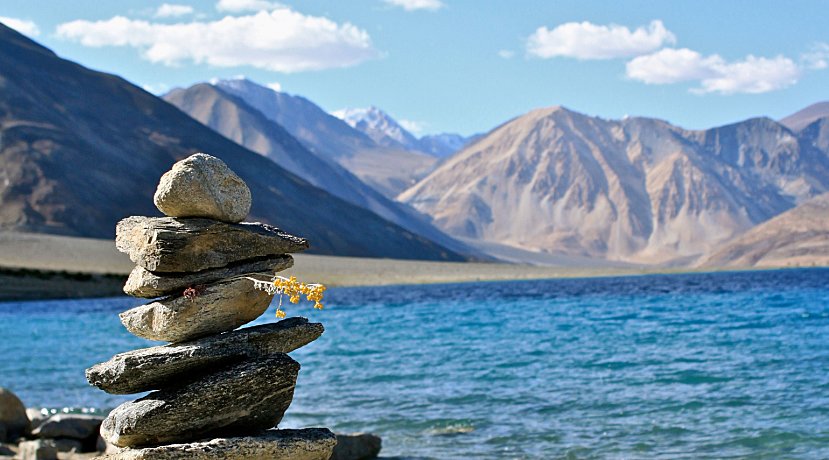
LEH WITH PANGONG

LEH WITH KHARDUNG LA PASS

Tamang Heritage Trek
Associated partners.
You will love all of the features in our theme. 100% guaranteed satisfaction.


IMAGES
VIDEO
COMMENTS
From Lunana we gradually make our way back to civilsation on a new route pioneered by our MD, Steve Berry. It is a stunning exploration through a wonderfully wild landscape, and a fitting close to an exceptional trek. Mountain Kingdoms has been running the Lunana Snowman Trek for almost 30 years, and every departure has succeeded in its objectives.
Lunana Snowman is a long trek over many high passes through remote a region in Bhutan Himalaya. Often called The Snowman trek this is a spectacular Himalayan journey taking 29 days. The trail crosses eight high mountain passes over 4,000m and three over 5,000m. The Mountain Company has a 100% track record of organising Lunana Snowman in Bhutan.
The Snowman Trek is the longest hiking trail of Bhutan that extends from Laya to the high Bhutanese Himalayas, covering up the northern part of the Kingdom. It was created by the yak herders of the country. ... It begins from Lunana to higher up in Gangkar Puensum, ...
You are now starting to enter the Lunana region of the trek. Day 17: Woche - Lhedi . Altitude: 11,942 feet; Distance: 9.3 miles; Time: 6-7 hours; Keche La Pass at 15,305 feet forms the main thrust of the day. Starting through a forest and then out onto open countryside, with views of even more unscalable ... The Snowman Trek requires vast ...
The Lunana Snowman trek crosses ten high Himalayan passes, venturing through Bhutan's most far-flung valleys, villages and traditional nomadic regions, a timeless trek through a sacred, Buddhist land. Our journey begins in idyllic Paro with a hike to the Tiger's Nest - Takstang Monastery - perched in the pine-covered cliffs, one of ...
The Snowman Trek in Bhutan is one of the world's great long distance mountain hikes traversing Bhutan's remote Lunana region, a pure mountain wilderness. ... Today the Lunana trek remains one of the ultimate Himalayan adventures, among some of the most beautiful and unspoiled mountain scenery on earth. Bhutan is situated in a hidden corner of ...
The Snowman Trek is our most challenging trek in Bhutan and ranks amongst the very finest anywhere in the Himalaya. It is undertaken by only a handful of trekkers each season and accesses Lunana, the most remote region of Bhutan. The trek crosses ten high passes over 4,500m that define the borders of Bhutan and Tibet.
The Snowman Trek goes to the remote Lunana district and is considered to be one of the most difficult treks in Bhutan. Crossing dozens of high passes, many over 16,000 ft, this tough trek includes challenges of long distances, altitude, difficult weather conditions and remoteness. It however also affords some of the most magnificent views in ...
Lunana Snowman Trek Overview The experience of a lifetime - trek among Bhutan's highest mountains on this strenuous 36 day adventure including 28 days on trek. Highlights of Lunana Snowman Trek; Cross high passes to enter Lunana, the most remote region of Bhutan Excellent acclimatisation with carefully placed rest days
Lunana Snowman Overview Lunana Snowman trek is a long and challenging trek travelling to Lunana a remote and rarely visited region of the Eastern Himalaya. Far more people have climbed to the summit of Mount Everest than completed this unique traverse of Bhutan. This is a 29 day trek crossing the north of Bhutan along the border with Tibet ...
Tulsi Gyawali. Managing Director. Contact On Whatsapp [email protected] +977 1 4531510, 01-456721. Nepal Sanctuary Treks organize Lunana Snowman Trek from Nepal to Bhutan. It is the high altitude, long distances, climate, remoteness and logistical organization that makes this trek so challenging.
Travelling into the Lunana district the Snowman trek is so named for the six mountains over 7000 metres (23,100 ft. ) which the trek passes beneath. Crossing nine passes over 4500m (15,850 ft. ) makes this not only one of the highest altitute treks, but also one of the most challenging. Starting in Drukgyel Dzong after a short drive from Paro ...
Embark on the legendary Snowman Trek, one of the most challenging yet rewarding treks in Bhutan.This high-altitude journey offers an unparalleled opportunity to traverse remote landscapes, crossing numerous mountain passes and exploring untouched regions like Laya and Lunana.
We are in Bhutan October 2019 to hike what has been described by many, including the Cicerone Bhutan Trekkers Guide as "one of the most difficult and beautiful of the whole Himalayas' - The Lunana Snowman Trek . There is no set definition of a challenging trek, it is quite subjective and depends on factors such as length, weather issues ...
When we first told our family we were going to Bhutan, they were not surprised to hear us mention a destination they had never heard of. I pointed to the small country - tucked diminutively into the Himalayas between China and India - on the world map in my father's office… "see, right here!" Why we
The Snowman trek goes to the remote Lunana district and is considered to be the most difficult trek in Bhutan. The combined attributes of distance, high altitudes, weather conditions and remoteness make this a very tough trek and it should only be considered if you have experience and a good level of fitness. The Snowman trek is subject to ...
Snowman Trek Exploring the outer reaches of Bhutan's High Himalayas Trekking route. This is the most difficult trek in Bhutan! The official snowman trek starts in Paro, and leads via Lingshi and Laya to the remote Lunana in northern Bhutan.
Bhutan Snowman Trek is the most challenging mountain trek in Bhutan undertaken by many trekkers every season and allowed access to Lunana, a remote region of Bhutan. This trek crosses 11 different high mountain passes of more than 4,500m to define the borders of Tibet and Bhutan. The trek highlights the views of Jichu Drake and Chomolhari by following trails via encampments of yak herders and ...
The Snowman trek will go over many high passes that are over 4500-5350 meters, encountering all the breathtaking views of permanent snow-capped Northern Himalayan ranges in Bhutan. You will also camp at a high altitude several times after your couple of hour's wonderful and scenic day hikes whilst you also get to camp at remote Lunana village ...
Snowman trek Bhutan package details. Difficulty level of Snowman trek Bhutan categorized as one of the adventurous high altitude treks, but an incredible experience for anyone who takes the challenge. it start from Drukgyal Dzong (Paro) and end at Nikachu Zam (near Trongsa) exploring Lunana rarely visited remote corner of Bhutan, Gangkar Punsum the world's highest unclimbed mountain, highest ...
The highlights of the Lunana Snowman trek are - Karchung La.Pass, the rest day at Thanza/ Tshorim Lakes and cross over Saga La Pass , all naturally stunning. As it is a challenging trek, fitness and previous high altitude trekking experience is required to complete it successfully. Months of April-May and September-October are the best time ...
The Lunana Snowman Trek is also a challenging and breathtakingly beautiful trekking journey that traverses the remote and rugged landscapes of Bhutan, a Himalayan kingdom. Spanning approximately 200 miles, this trek renowns for its stunning vistas of towering peaks, pristine alpine lakes, and remote villages that offer a glimpse into ...
This is a long and challenging trek travelling to Lunana a remote and rarely visited region of the Eastern Himalaya. Far more people have climbed to the summ...